- East Asia Tours

Japan and China Highlights Tour

- Duration 16 Days
- Tour Type Private & Bespoke
- Tour Style Classic
- ITINERARY SUMMARY
- DETAILED ITINERARY
About This Trip
Itinerary summary.
- DAY PLACE HIGHLIGHTS
Tokyo: Senso-ji Temple, Meiji Jingu Shrine, Harajuku Kyoto: Nijo Castle, Kinkaku-ji Temple, Fushimi-Inari Shrine Hiroshima: Itsukushima Jinja, Hiroshima Castle
Shanghai: The Bund, Yu Garden, Zhujiajiao Water Town Guilin: Li River Cruise, Yangshuo Countryside Tour Xi'an: Terracotta Warriors, Ancient City Wall Beijing: Forbidden City, Great Wall, Temple of Heaven
Day 1: Arrival, Tokyo
On your arrival at Narita International Airport, our airport assistant will then guide you to take the public transportation to get to your hotel. The rest of the day will be free to rest and recover from your journey or explore Japan's capital at your own pace.
Day 2: Tokyo
Get up early to explore the world's biggest fresh fish market - Tsukiji Fish Market (closed on Sundays and some Wednesdays). This is also a great place to try some delicious sushi. Later, you will visit the famous Senso-ji Temple, Meiji Jingu Shrine, and Harajuku nearby. After that, you can stroll along the Shibuya area, where Hachiko Dog Statue is located.
Day 3: Tokyo - Kyoto
This morning, you will travel to Kyoto by express train. Your local private guide in Kyoto will meet you and escort you to your hotel by public transportation. You will visit the distinguished Nijo Castle this afternoon, and then you can enjoy your free time at Gion District. You might encounter some beautiful Geisha at Hanami-koji Street if you are lucky.
Day 4: Kyoto
Enjoy a full-day guided tour by public transportation in Kyoto, including Kiyomizu-dera Temple and Sanjusangendo Hall. Continue by visiting the glittering Kinkaku-ji Temple, and the Fushimi-Inari Shrine, famous for its thousands of vermilion torii gates.
Day 5: Kyoto - Hiroshima
Enjoy free time on your own in the morning. At noon, you will make your way to take Shinkansen (bullet train) to Hiroshima. Arriving in Hiroshima, you will be met by a local assistant and guided to your hotel.
Day 6: Hiroshima - Miyajima - Hiroshima
At 9:00 in the morning, your private English-speaking guide will meet you in the lobby of your hotel. You will then be escorted to Miyajima by local train and ferry boat.
After arriving at Miyajima, you will pay a visit to the Itsukushima Jinja, also known as Itsukushima Shrine on the sea when the tide rises at Miyajima. Afterward, you will be escorted back to Hiroshima, and visit the Peace Memorial Park, Atomic Bomb Dome and Hiroshima Castle.
Day 7: Hiroshima - Shanghai
Today you will take public transportation to the airport for your flight to Shanghai. On your arrival in Shanghai, China's most modern city, your Shanghai tour guide will meet you and escort you to your hotel. The rest of the day is yours to relax.
Note: You will have a private guide and driver in each city in China.
Day 8: Shanghai
After breakfast, your private guide will pick you up from the hotel lobby at the appointed time to start your city exploration from the Bund and the former French Concession. While walking on the streets full of Western flavor, a vivid picture of this cosmopolitan city in old times may come to mind.
Later, you will visit Yu Garden and stroll around Yuyuan Market, and then visit a silk workshop to see how the small cocoons are transformed into elegant silk. After that, get on the top of Shanghai World Financial Center to enjoy a bird-view of the skyline of the city.
Day 9: Shanghai - Zhujiajiao Water Town - Guilin
After breakfast, firstly head to Zhujiajiaoto visit the well preserved ancient town and enjoy its unique water features by boat before going to the airport for your flight to Guilin. On your arrival in Guilin, the most scenic city in China, your personal guide will meet you and escort you to your hotel.
Day 10: Guilin - Yangshuo
Today, you'll go on a leisurely Li River Cruise, which sails downstream to Yangshuo County. During this journey, enjoy the breathtaking views of peaks and pinnacles, crystal-clear water and picturesque pastoral views of rice paddies and water buffaloes. After disembarkation, transfer to your hotel in Yangshuo. Later, take a countryside tour and feel the laid-back ambiance by a bicycle or a private car at your pleasure.
Day 11: Yangshuo - Guilin - Xi'an
After breakfast, drive back to Guilin to have a relaxing walk along the Banyan Lake and Cedar Lake to taste the pleasant atmosphere of this beautiful city. Later, continue to South China Sea Pearl Museum and Reed Flute Cave, and then go to the airport for your flight to Xi'an. On arrival, be met and transferred to your hotel.
Day 12: Xi'an
The highlight of today is the awe-inspiring Terracotta Warriors. You will have enough time to marvel at the grand array of thousands of life size and lifelike clay soldiers, horses and chariots in life size. After that, you will visit Xi'an Art Ceramics Factory, Muslim Street and the Great Mosque.
Day 13: Xi'an - Beijing
After breakfast, you will be escorted to visit the Ancient City Wall.As a well-preserved ancient fortress, the city wall is so thick that you can cycle on the top to get a better view of both the old and new Xi'an. Later, set off to the railway station for your high-speed train to Beijing. On your arrival in Beijing, a local tour guide will meet you and transfer you to your hotel.
Day 14: Beijing
On this day you will first visit Tiananmen Square. Then, passing through the iconic Tiananmen Gate, you will enter the splendid Forbidden City, China's No.1 palace complex, famous for its grand royal buildings, exquisite ornaments and priceless treasures. When leaving the royal palace, continue to Jingshan Park and climb to the top of the hill to enjoy the best panoramic view of the Forbidden City.
Day 15: Beijing, Great Wall Tour
No Beijing tour is complete without a visit to the Great Wall. Today you will tour the magnificent Mutianyu Great Wall with cable car up and down, the 8th Wonder of the World. Walking on the venerable ramparts, you will be amazed at the unbelievable construction and appealing landscape that surrounds the Wall.
Descending from the Great Wall, you will stop by a jade gallery and then take a leisure stroll along the Sacred Road, a royal path noted for vivid stone statues and afterlife stories.
Day 16: Beijing, Departure
After breakfast, you will visit Beijing's spectacular Temple of Heaven where emperors in ancient times worshiped heaven each year for a national good harvest. Here you can also enjoy watching locals doing their special morning exercises. Later, you will be transferred to the airport for your flight to your next destination.
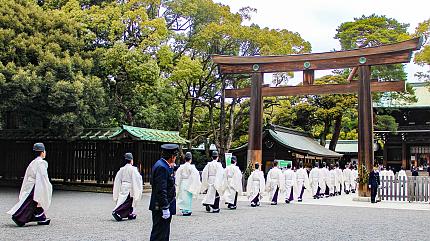
What Our Clients Say About Us
How it works.

CONTACT A TRAVEL EXPERT
1-to-1 Service | Reply within 24hrs | Expert's Advice
You May Also Like
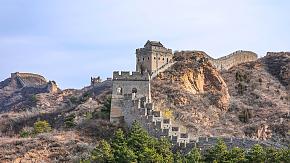
Beijing & Mongolia Tour

Japan Ski Tour with DMZ & Seoul
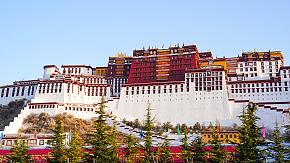
From China to Nepal with Lhasa Highlights
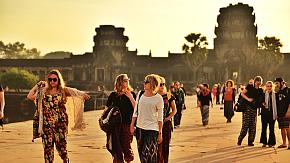
China, Cambodia & Thailand Highlights Tour
Quick question.

REQUEST INFORMATION
Don't know which tour is suitable for you.
Let us help you. Please tell us more about your interests. We will send some suggestions based on your needs.

- Trip Finder
- Saved Tours

Highlights of China and Japan

Fully Escorted

Local Cuisine

Guaranteed Departure

13-17 Nights

From US$4498.00
- Our California office it's now
- 09:41 AM(Wed) - We Are Open
- Tel: 1-909-988-8885 Toll free : 1-855-325-2726 (USA & CANADA)
- Whatsapp: Website Line : 1-909-818-5901

- Monday to Friday 8:30AM - 5:30PM (PST) Saturday 9:00AM - 3:00PM (PST)
Tour Highlights
- Explore the Forbidden City: highly exclusive and lavish abode for generations of China’s emperors.
- Stroll atop a section of the Great Wall, China’s most celebrated and imposing national landmark.
- Watch a river of shoppers roll by Wangfujing Street and savor the crisp sweetness of Peking Roast Duck.
- Stand in awe of the majestic, lifelike army of the Terracotta Warriors of Xian.
- Mingle among the adorable wild deer that frolic through Nara Park, and see nearby Todai-ji Temple.
- Wander among the Gion District’s old-fashioned restaurants and teahouses, and perhaps spot a beautiful Geisha.
- Drift through the skies in a cable car on the Hakone Ropeway for awe-inspiring views of Mount Fuji.
- Learn to make delicious sushi in Tokyo from a professional sushi master chef.

China (Beijing - Xian - Shanghai) Japan (Nara - Kyoto - Hakone - Mt Fuji - Tokyo)
13-17 Nights | From US$4498.00
Departure Months:
Tour the wondrous treasures of the two of the far east's most renowned cultures as you explore what makes these nations distinct as well as what they share..
The Far East offers everything from enriching destinations to delicious cuisine. On the Highlights of China and Japan tour, you’ll uncover the mysterious treasures of two countries that share a deep long-standing cultural connection. Your journey begins in China's enchanting cities: Beijing, Xian, and Shanghai. Delve into China's cultural treasures in Beijing: the prestigious palaces of the Forbidden City, vast Tiananmen Square, and the impressive Great Wall. After experiencing thi... View More
The Far East offers everything from enriching destinations to delicious cuisine. On the Highlights of China and Japan tour, you’ll uncover the mysterious treasures of two countries that share a deep long-standing cultural connection. Your journey begins in China's enchanting cities: Beijing, Xian, and Shanghai. Delve into China's cultural treasures in Beijing: the prestigious palaces of the Forbidden City, vast Tiananmen Square, and the impressive Great Wall. After experiencing this Wonder of the World, you will go on to discover the Tombs of the Ming Emperors – another UNESCO-recognized heritage site. Later, you'll find yourself strolling Wangfujing Street – bustling down streets with shops that offer beautiful silks, lovely local goods, and delicious Chinese snacks. Continue to the ancient capital, Xian, founded 6000 years ago, once a gateway to the Great Silk Road. As the cradle of Chinese culture, the city has a strong historical appeal and gives you a better feel for traditional China. It is difficult to not feel a flutter in your heart when you behold the Terracotta Warriors - an awe-inspiring display, especially considering they are around 2200 years old. The next attraction is Huaqing Pool, famed for its royal baths that tell of the romance between an emperor of the Tang Dynasty and Lady Yang - one of China's Great Beauties. And you are sure to savor the day's lunch featuring traditional Xian-style dumplings, which attract both locals and tourists alike! Shanghai is a megacity that is sustains a rare fusion between classical and futuristic, with European-style builidngs along the Huangpu River across from towering skyscrapers. By far the best thing to do in Shanghai is to take a walk beside the beautiful gardens and riverbank in the old part of Shanghai. You're sure to relax at the Yu Garden, a Ming-era park maintaining a classical Chinese appeal, and while walking on the Bund, the collection of houses in Neoclassical, Baroque, and Art Deco designs make for Shanghai's most iconic postcard vistas. Wrap up your China adventure with amazing 360-degree views from an incredible platform soaring atop the Shanghai World Financial Center. As you travel from China to Japan, you will uncover the history and culture of feudal Japan infused into the cities of Nara and Kyoto, where elegant architecture and towering monuments, including the Great Buddha at historic Todaiji Temple, takes you back to an era of samurai and ninja. Spend the better two days in UNESCO-recognized Kyoto, where you'll enjoy every moment traversing the old city’s gardens, temples, shrines, castle, and specialty shops. As you travel in Autumn, venturing to Arashiyama - with the famous Togetsukyo Bridge, the bamboo groves, the picturesque Zen landscape at Tenryuji Temple - brings beautiful scenes of old Japan wrapped in fall's golden glow. Japanese Green Tea is considered to be the best in the world. Experience a green tea ceremony and take a break as you have a truly memorable cup of matcha tea. Then you will find out more about Japan's choicest rice wine at the Sake Museum. Next, take the Shinkansen bullet train to feel the rush of Japan's top-notch technology. As you travel towards the east, witness the iconic Mount Fuji – the cultural centerpiece of much of Japan's artistic inspiration – and stay overnight at one of our favorite onsen (hot springs) hotels. In Tokyo, the fully-guided tour will immerse you in this sprawling metropolis with old and new, fashionable and funky. Explore Asakusa's centuries-old Sensoji Temple, and take the famed street-crossing through bustling Shibuya. It is impossible to conclude your trip without experiencing Sushi culture in Japan. Visit Tsukiji Outer Market to browse super-fresh seafood, put your culinary skills to the test during a Sushi-making class, and savor the delicious creations you prepared.

8 trips through Japan

Highlights of China and Japan Tour Autumn
China (Beijing / Xian / Shanghai), Japan (Nara / Kyoto / Koka / Hakone / Mt Fuji / Tokyo)
14 Days 13 Nights | from US $4498.00
This 14-day tour offers travelers a rare glimpse of China and Japan’s unique wonders during their most vivid season.

Highlights of China and Japan Tour Spring
China (Beijing / Xian / Shanghai), Japan (Nara / Kyoto / Koka / Hikone / Hakone / Mt Fuji / Tokyo)
14 Days 13 Nights | from US $4598.00
A refreshing 14-day spring tour through China and Japan, while exploring their ancient cultural treasures.

Highlights of China and Japan Tour Summer
China (Beijing / Xian / Shanghai), Japan (Osaka / Nara / Kyoto / Koka / Hakone / Mt Fuji / Tokyo)
This 14-day tour takes travelers on a route of history and cultural imagination through the lands of China and Japan.

Highlights of China and Japan: Autumn Leaves Tour
A 14-day tour that takes travelers to discover the beautiful sights of China and Japan under the bright colors of autumn.

Highlights of China and Japan: Cherry Blossom Tour
14 days 13 nights | from us $4798.00.
A 14-day spring cultural tour through China and Japan, featuring the beautiful Japanese cherry blossom.

Highlights of China and Japan Tour Spring with Expo 2025 Osaka
China (Beijing / Xian / Shanghai), Japan (Osaka / Nara / Kyoto / Koka / Hikone / Hakone / Mt Fuji / Tokyo)
15 Days 14 Nights | from US $4898.00
A refreshing 15-day spring tour through China and Japan, while exploring their ancient cultural treasures, plus a visit to Expo 2025 Osaka!

Highlights of China and Japan Tour Summer with Expo 2025 Osaka
This 15-day tour takes travelers on a cultural and historical route through the lands of China and Japan, plus the Expo 2025 Osaka.

Highlights of China and Japan with Hiroshima: Cherry Blossom Tour
China (Beijing / Xian / Shanghai), Japan (Osaka / Himeji / Kurashiki / Hiroshima / Shimanami Kaido / Obokekyo Gorge / Takamatsu / Kobe / Nara / Kyoto / Kanazawa / Shirakawa-go / Takayama / Matsumoto / Mt Fuji / Hakone / Tokyo)
18 Days 17 Nights | from US $6298.00
Discover China and Japan in the gorgeous cherry blossom season, including Hiroshima and Shikoku Island, in an itinerary that includes top historic must-sees, breathtaking natural wonders, and delicious native cuisine.
Travel Styles
Deluxe-Plus
Spring Tours (Mar - May)
Summer Tours (Jun - Aug)
Autumn Tours (Sep - Nov)
Winter Tours (Dec - Feb)
Cherry Blossom Tours
Autumn Leaves Tours
Festival Tours
Special Interest Tours
Tours for First Timers
Tours for Repeaters
Family Friendly Anime Tours
Anime Tours
Small Group Tours
Luxury Small Group Tours
Small Group Departures
Walking Tours
Seasonal Flowers Tours
Art & Architecture Tours
Best Japan Tours
Photography Tours
Birding & Wildlife Tours
Garden Tours
Pottery Tours
Japanese Ancestry Tours
Pre & Post Cruise Tours
Starting City
Sapporo to Sapporo
Sapporo to Kushiro
Sapporo to Tokyo
Sapporo to Osaka
Sapporo to Fukuoka
Sapporo to Okinawa
Kushiro to Kushiro
Kushiro to Memanbetsu
Tokyo to Sapporo
Tokyo to Tokyo
Tokyo to Kyoto
Tokyo to Osaka
Tokyo to Hiroshima
Tokyo to Fukuoka
Tokyo to Okinawa
Tokyo to Seoul
Tokyo to Kushiro
Kyoto to Tokyo
Kyoto to Kyoto
Kyoto to Osaka
Okinawa to Okinawa
Osaka to Sapporo
Okinawa to Osaka
Osaka to Tokyo
Osaka to Osaka
Osaka to Kotohira Onsen
Osaka to Fukuoka
Osaka to Okinawa
Fukuoka to Sapporo
Fukuoka to Tokyo
Fukuoka to Osaka
Fukuoka to Fukuoka
Fukuoka to Okinawa
Seoul to Tokyo
Taipei to Tokyo
Beijing to Tokyo
Hong Kong to Tokyo
Okinawa to Sapporo
Okinawa to Kushiro
Okinawa to Tokyo
5 Day Japan Tours
6 Day Japan Tours
7 Day Japan Tours
8 Day Japan Tours
9 Day Japan Tours
10 Day Japan Tours
11 Day Japan Tours
12 Day Japan Tours
13 Day Japan Tours
14 Day Japan Tours
15 Day Japan Tours
16 Day Japan Tours
17 Day Japan Tours
18 Day Japan Tours
19 Day Japan Tours
20 Day Japan Tours
21 Day Japan Tours
22 Day Japan Tours
27 Day Japan Tours
Departure Month
Japan Tours in January
Japan Tours in February
Japan Tours in March
Japan Tours in April
Japan Tours in May
Japan Tours in June
Japan Tours in July
Japan Tours in August
Japan Tours in September
Japan Tours in October
Japan Tours in November
Japan Tours in December
Hokkaido Tours
Tohoku Tours
Kanto Tours
Chubu Tours
Kansai Tours
Shikoku Tours
Chugoku Tours
Kyushu Tours
Okinawa Tours
Must-See Cities
Kiso Valley
Sado Island
Akan National Park
Shirakawago
Kinosaki Onsen
Seasonal Attractions
Sanja Festival
Cherry Blossom Viewing at Yoshinoyama
Sendai Aoba Festival
Cherry Blossoms
Cherry Blossoms in Hokkaido
Cherry Blossoms in Tohoku
Cherry Blossom Festival at Matsumae Park
Cherry Blossom Festival at Ueno Park
Cherry Blossoms at Maruyama Park
Cherry Blossoms & Azaleas at Mifuneyama Rakuen
Shibazakura Festivals
Shibazakura Festivals of Hokkaido
Fuji Shibazakura Festival
Great Wisteria at Ashikaga Flower Park
Baby Blue Eyes Flowers at Hitachi Seaside Park
Takayama Spring Festival
Kyoto Aoi Festival
Tateyama Kurobe Alpine Route
Miyako Odori
Tenjin Festival
Tohoku 3 Great Summer Festivals
Aomori Nebuta Festival
Akita Kanto Festival
Sendai Tanabata Festival
Gion Summer Festival
Awa Odori Dance Festival
Lavenders in Hokkaido
Tanabata Fireworks
Karatsu Kunchi Festival
Jidai Festival
Jingu Gaien Ginkgo Avenue
Lake Kawaguchi Momiji-Kairo
Autumn Leaves
Takayama Autumn Festival
Obara Shikizakura Festival
Japan Winter Festivals
Sapporo Snow Festival
Lake Shikotsu Ice Festival
Asahikawa Winter Festival
Sounkyo Ice Waterfall Festival
Ice Breaker Cruise
Wakasagi Smelt Fishing
Kawazu Cherry Blossom Festival
Things Not to Miss
Hakone Open-Air Museum
Gion Geisha District
Kyoto Cuisine with Maiko
Green Tea Ceremony
Shikoku Pilgrimage Route
Takayama Festivals
Green Tea Ceremony with Maiko Interaction
Sushi-Making Experience
Tokyo SkyTree
Ghibli Museum
Kiyomizu Temple
Kenrokuen Garden
Hikone Castle
Zen Meditation (Zazen)
Calligraphy Lesson (Shodo)
Ikebana Lesson (Flower Arrangement)
Kimono Experience
Taiko Lesson
Dotonbori Street Food Tour
Nakasendo Hike
Ise Grand Shrine
Shiretoko Nature Cruise
Seikan Undersea Tunnel
The Omiya Bonsai Art Museum
Asakusa Sensoji Temple
Kinkaku-ji Temple (Golden Pavillion)
Todaiji Temple
Fushimi Inari Shrine
Miho Museum
Koka Ninja Mansion
Mikimoto Pearl Island
Himeji Castle
Izumo Grand Shrine
Naoshima Island
Gunkanjima Island
Mt Takasaki Monkey Park
Matsumoto Castle
Tokyo Tower
Snow Monkeys
Most Beautiful Places in Japan
Otaru Snow Light Path
Arashiyama Bamboo Forest
Kurashiki Canal Area
Miyajima Island
Shimanami Kaido
Takeda Castle
Motonosumi-Inari Shrine
Adachi Museum of Art
Takachiho Gorge
Oirase Stream
Tottori Sand Dunes
Wisteria Tunnel at Kawachi Fuji Gardens
Why Travel on Our Group Tours
Lorem Ipsum is simply dummy text of the printing and typesetting industry. Lorem Ipsum has been the industry's standard dummy text ever since the 1500s, when an unknown printer took a galley of type and scrambled it to make a type specimen book.
Best Itinerary
Planned by experts, based on seasonal favorites and must-see sites.
Budget-friendly
Choose your style and split cost with other passengers
Hand-picked Accommodations
Chosen by our experienced staff
Fully Guided
Guide is available to you 24/7 and sleeps in the same hotel
Unique experiences
Learn to create your own Sushi, meet a geisha or maiko, and more
Meet locals and visit rural areas of Japan you might miss on other tours
What our customers say
4.9 stars based on 555 REVIEWS
Billy, our guide was wonderful and very informative. Our driver was super and the van was just the right size. The 2 other guests were the best.
The tours was very interesting as it allows me to have a very good idea about Japan. I was able to visit many places such as temple, shrines, castle, Japanese gardens as well as historical places. Additionally, the tour allowed me to have nice experience from Japan such as the good food, Tea ceremony, the rapid train and typical Japanese Hotel. Furthermore, I have discovered through the tour the lovely nature of Japan and learned a lot of information about its history and its tradition.
Absolute;ly loved the tour! Billy was a fantastic guide and very informative about the culture and entertaining.
This was a fantastic way to see Japan. We saw so many sites and we had the opportunity to experience so many things. Learning how to make sushi was not only fun, but it was also a tasty lunch. Billy was a knowledgeable and entertaining tour guide. Kamata San is definitely a highly skilled bus driver. Learning about the varying cuisines in the different regions of Japan was a delicious lesson to learn.
Great variety of places, unique experiences and entertaining, informative Guide. AJT staff very helpful - good to have personal service.
Don't know which tour is best for you? Let us help you.
- Request Information
- share trip finder saved tours inquiry book now

Email Signup
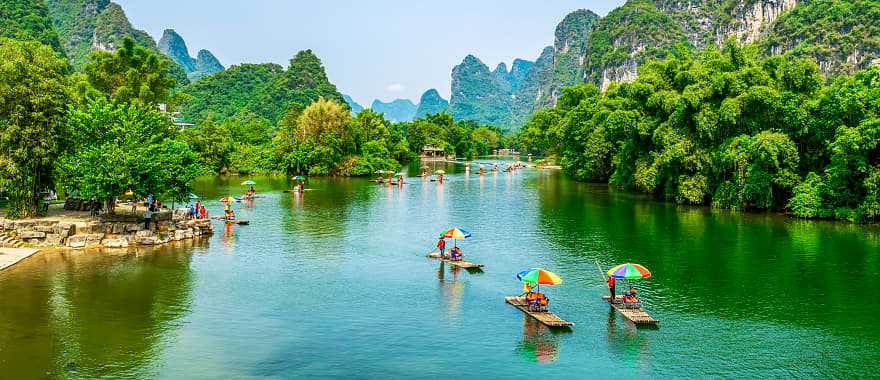
Best of China & Japan in 2 Weeks Itinerary
Customers rate Zicasso's travel referral service 4.9 on a scale of 1 to 5 based on 1587 reviews on Trustpilot
We match you with top tour companies that specialize in the trip you want, whether it's a customized private tour or a group tour.
- Trip Overview
This is a sample itinerary to inspire a personalized trip designed with your travel specialist
Request a Quote
Countries Visited
Places visited, suggested duration.
Temples wait serenely beneath tree blossom as walls rise and fall far beyond the horizon. Welcome to the best of Japan and China, a two-week tour of immersive history, iconic culture, and incredible nature. Tokyo, Hakone, Kyoto, Beijing, Xian, Guilin, Shanghai are destinations that are enshrined in legend and yours to explore. Both of these countries offer an engaging adventure as the modern meets the ancient, leaving you two incredible cultures that will command your senses and your interest.
Customizable Itinerary
Tokyo – touch down in a throbbing megalopolis.
Touch down in Tokyo and take some downtime to relax at your hotel and get yourself energized, and then head out with your local guide, not to any particular attraction, but to explore the most interesting neighborhoods. First impressions of Tokyo can be baffling as the enormous city pulses with life as contemporary culture is on display at every street corner. Begin to explore, and you can find subtleties, as each neighborhood is a little different from the next. Enjoy Shibuya, where great crowds of people cross the road beneath flashing neon. Move next to Harajuku, where the colors of subculture youth liven a park. Take in Ginza for a journey through fashion boutiques and 22nd-century design. It will be a journey from Japanese pop culture through striking architecture, to food halls and dinner at a legendary noodle shop, and a perfect beginning to your vacation.
What's Included:
Tokyo – Highlights of Old and New Tokyo
Thanks to your time yesterday, you are now in tune with the city, and you can now take your exploring further into both the old and the new. See the Sensoji Temple in Asakusa, with five stories of tradition rising amid skyscrapers. Move next to the Mori Art Museum for contemporary art located on the 53rd floor of a Roppongi Tower. Take in the Imperial Palace for the afternoon, a getaway of parks and gardens and shrines. The evening can be customized to your interests, Tokyo being a city that can pull you in many directions with art galleries showing the old and new, sumo wrestlers training in a sumo stable, sake tasting with experts, Japanese baseball, perhaps even some local festivities outside the city.
Hakone – Shinkansen, Ryokan and Kaiseki Ryori
Look forward to a day of classic Japanese experiences, four of them to be precise. Zoom through the country on a first-class Shinkansen bullet train, first whizzing through a seemingly endless metropolis before the cone of Mount Fuji guides you into nature. Travel next to the hot springs for a timeless Japanese tradition, basking in geothermal waters as forested mountains glimmer in the afternoon light. Perhaps you will have time to fit something more in, like a boat ride on Lake Ashinoko, or a tasting journey into the whiskeys that have put Japanese whiskeys on the international map.
Move next to settle properly into your ryokan, a traditional style of an inn that has stayed true to its eighth-century origins. Remove your shoes and open a sliding door onto tatami mat flooring. Enjoy some fresh tea while seated on the floor, and then indulge on the most sublime of Japanese meals, a legendary kaiseki ryori. Full of delicacy, this multi-course dinner takes you through the complete range of flavors with many small dishes chosen for their variety and organic origins. You can eat privately in your room and then slip into a traditional yukata, or robe, after an evening thermal bath. The futon is spread out as the table is set aside, and you can drift off in the simple comfort of Japanese tradition.
Kyoto – Exploring the Spirituality
Pop back onto the bullet train for Kyoto, the heartbeat of old Japanese culture. There are more UNESCO World Heritage Sites here than any other city in the world with temples, imperial villas, Buddhist shrines, and expertly preserved gardens. With 48 hours in Kyoto, you can travel through the eras to appreciate how the architecture and the empire have changed over the centuries. Kyoto has far too many sites to mention here, and that is something you will see immediately upon your arrival. It would take many weeks to get around everything, so your guide will discuss what is best to include in the two days that you have.
Kyoto – Legendary Temples From a Distant Time
Wander through a forest of thick bamboo and a temple appears as a woman walks past in a kimono, holding a bright red umbrella. Lanterns hang down from columned archways, pointing the path towards a gold-tiered temple. Some shrines are shrouded in moss while others retain their power to impact history. Your guide gains you access to private gardens and imperial villas, places to escape from crowds that gather at particularly famous temples. In Kyoto, it is not just UNESCO World Heritage Sites, so you can spend this evening exploring Gion, a traditional geisha district that is packed full of stories and strange moments. You can dine here, the Kyoto kaiseki its own unique form, defined by the seasonality of its ingredients.
Beijing – Contrasts and Charms
With a full morning in Kyoto, you can continue to explore. Spend more time in one of the gardens as the living pieces of art morph with the seasons. Maybe explore another temple, one hidden in bamboo or open along the road. Your final Japanese experience comes in a Zen temple, where a local monk takes you through the basics of Zen meditation, always a good experience before you must board a plane and travel across Asia. After two flights and a short layover, you will land in Beijing with just enough time to go to dinner at a contemporary restaurant. From your window, you can watch the bustling city roll by, savoring the contrasts to Tokyo and Kyoto.
Beijing – Highlights of Old and New Beijing
The heart of Beijing is a place of legend and legacy. Feast your eyes on the Forbidden City, and it is easy to be overawed by its scale. It is such an enormous palace with such majestic walls, and it feels more formidable than forbidden while providing a good understanding of an imperial time. Likewise, the Summer Palace and Temple of Heaven, exceptional museum pieces from a long-lost era. There is more to the old section of Beijing, and you can take a rickshaw down mazy hutongs, or narrow lanes, for a journey to show how small old neighborhoods have survived into today. Move next to engage with the new as you dine on specialties at a modern restaurant overlooking the rooftops, travel along lanes of neon-shrouded skyscrapers, and take a glimpse at Beijing’s contemporary art scene. There is a lot to experience in a single day, but Beijing is that kind of city and it picks you up and whirls you into its inimitability.
Beijing – A Day at the Great Wall
The Great Wall is surprisingly close to Beijing. Or perhaps that’s unsurprising, as anything that is over 10,000 miles long will be close to a lot of things. Some of the best-preserved sections are just an hour from the capital where enormous steps stretch along green hills. Walls of towering stone do not seem real at first glance but climb up slowly and you can see how the wall extends, turning and twisting far beyond the horizon. You can decide how far to walk, whether it be just a few steps or a two-hour stretch between two distinct sections of this monument viewable from space. While some sections of the Great Wall have become a little like a tourist circus, there remains real authenticity here, especially when the guide takes you away from the over-popular stretch that is closest to Beijing.
Xian – A Fabulous Walled City and the Terracotta Warriors
Fly to Xian, and it will seem as though you are in another period in time, as this is the city at the end of the legendary Silk Road. Cycle or walk on the city walls for a great introduction as your guide narrates engaging tales as you gaze down upon pagodas, markets, halls, and quarters almost a millennia-old. Your hotel is inside the city walls and is a living piece of history, the fittings, and the architecture as if you have stepped back into the time of trading caravans and mystical stories. Not far beyond the city lies the Terracotta Army, where epic lines of sculpted warriors guard a deceased emperor. The individualistic details are remarkable, and you can walk alongside the army to appreciate their real-life size. Back in Xian, there is some imperial dining to be done, along with a traditional teahouse experience.
Guilin – More of Xian and Cruising the Karst
24 hours is enough in Xian, as the old and the enchanting is surrounded by the modern and the mundane. You will, however, need two days in Guilin as nature sets the scene and there is a tranquility that most do not expect in China. Fly south, and you will soon be out cruising. Limestone karst dots the river, their facades rugged and sharp, and the surrounding hills are constructed from a thousand shades of green. It will likely be silent, with no other sound beyond your paddle softly splashing into the water. Japan and China can both be an intensive experience, especially in the cities, so Guilin is like a vacation from a vacation with 48 hours of tranquility in a remarkable landscape.
Guilin – Relaxing Along the River and Visiting Local Villages
Take it easy this morning, and perhaps visit one of the Guilin teahouses, tasting with your nose as much as your tongue. You might want to walk through the town, enjoying the strange Chinglish translations found on the shop signs. This afternoon, you can go cruising through the karst once more, stopping to experience Chinese villages mostly untouched by time. China is a rural country, and while it is rapidly developing, there is a strong piece of the old that lives on. It is this feeling that you will find today in two different villages through the hospitality, the welcome, the food, and the smiles. Today’s tour can be tailored to you, as you may prefer more time cruising, or more stretches of time to visit the other villages.
Shanghai – The Experience Changes Once Again
Take one more short flight, and be amazed as to how the experience changes. Shanghai hits you like Tokyo did, with the bustle and the chaos tempered by architectural glory and an energy that is quick to lift you skywards. That is metaphorically as well as literally, as you ride the elevator up one of the world’s tallest towers for a bird’s-eye overview. All around you, there is the new, the snazzy, and the chic of contemporary China. Just across the water, however, is the old as Chinese hutongs are set alongside European colonialism and the unmistakable scent of faded grandeur. As in all big cities, you will need a good guide to understand Shanghai, and that is what sets this tour apart from others. Millions visit Shanghai and only see the Bund and a few towers, but you will get to explore more than just the icons to engage with what makes this city tick.
Shanghai – Highlights of Old and New Shanghai
Your exploration of Shanghai will be customized by you and can evolve as the day goes on. You can take a stroll down a French street to see one side to Shanghai, while the epic skyscrapers illustrate another. But there are hundreds of neighborhoods here, and while one of these may take tradition into the 21st century, another might bring a contemporary facade for an old-world culture. Another neighborhood might stoically preserve history, which you can experience for yourself as you stop for tea beneath a wooden balcony. In one neighborhood, you can try Shanghai’s dumplings, a famous food that really is not the same once it leaves Shanghai. In another, you might see how European tastes have mingled with China, primarily through art and architecture. Today’s guided tour will explore the old and the new of Shanghai with your guide customizing it to your interests.
Shanghai – Departure
There will be plenty of time for shopping and relaxing before you are transferred to the airport for your outbound flight, as late check out has been arranged to give you freedom for one last leisurely morning.
Trip Highlights
- Bask in the beauty of Kyoto, where hundreds of temples have been breathtakingly preserved
- Feel your feet upon the Great Wall of China and visit different sections of the mega-structure
- Cruise serenely down the Li River, past the karst from Guilin to Yangshuo
- Discover the best of Tokyo, a city that timelessly blends old and new
- Feast your eyes on the Terracotta Warriors, just one iconic highlight in and around the imperial city of Xian
- Bathe in hot springs, experience a ryokan, dine on kaiseki ryori, and travel on a first-class Shinkansen bullet train
- Explore the best of Beijing, where spectacular history meets a bustling modern megalopolis
- End the vacation in Shanghai, where the old and new come together in distinctive parts of the city
- Japan and China are full of small pleasures; steamed dumplings, meeting with a monk, colorful parks, quiet landscapes and so much more
Detailed Description
Temples rise evocatively amid the forest with each tier a little more exquisite than the last. Locals mingle outside the walled cities, including one that was once forbidden. Limestone karst dots the river, and you can travel serenely by boat. Mountains and cities carpet a valley, and then you can zoom through on a Shinkansen bullet train. In Shanghai, you can go in search of the finest steamed dumplings, while in Hakone you sit down for the complete kaiseki ryori feast. Welcome to the best of Japan and China with two weeks in two countries that blur the old with the new. Culture and tradition still ring true here, even if the city facades suggest otherwise. History is everywhere, juxtaposed with contemporary thinking, and the natural beauty is beyond what you may be expecting, superlative as it takes you away from it all.
New experiences are more than just every day here, as sometimes it will feel like every single moment is bringing something new. The impressions are endless, and it will take a while to reflect and recollect on what you have experienced. Often, it will be the small moments that leave the longest impression, be it a guide, a backstreet, a journey, or something that only you caught with your eyes. And while the destinations you visit are both legendary, each visitor’s experience is entirely different. In Japan, you will have two nights in Tokyo, a night of tradition around the Hakone hot springs, and then a full 48 hours in Kyoto. Fly next for three nights in Beijing, which includes the Great Wall, to be followed by 24 hours in Xian, two tranquil nights in Guilin, and the contrasts of bustling Shanghai.
There are extraordinary sights to behold, of course. You will see Tokyo’s Imperial Palace, all of the World Heritage Kyoto temples, the Terracotta Warriors, and Beijing’s historic core. Local delicacies and styles provide another experience, such as a ryokan in Hakone, village visits near Guilin, and discussing Zen with a Buddhist monk. The Japanese journeys are very memorable, first-class Shinkansen trains providing a snapshot of the country. In China, you can fly between destinations with expedited travel within a very large country. Hotels are handpicked to place you in the center of the action, surrounded by all the new impressions with guides that are experts in their craft, slowly revealing their little corner of the world. In just two weeks, it will begin to feel as though you have had many years of new travel experiences, and that’s the real beauty of these two countries.
Starting Price
$7,200 per person (excluding international flights)
What's Included
- Accommodations
- In-country transportation
- Some or all activities and tours
- Expert trip planning
- 24x7 support during your trip
Your final trip cost will vary based on your selected accommodations, activities, meals, and other trip elements that you opt to include.
Reviews of Zicasso's Referral Service
4.83 stars based on 726 reviews.
Reviewed By BOLIVAR A.
Reviewed By Jeanine B.
Reviewed By Tonya T.
Reviewed By Charles Y.
Reviewed By Robert B.
Reviewed By debra P.
Expert Tips for Discerning Travelers
Your Dream Vacation
in 3 simple steps
Describe your dream trip
Get matched with top travel specialists
Book the trip
Help Me Plan My Trip
Free service - no credit card required
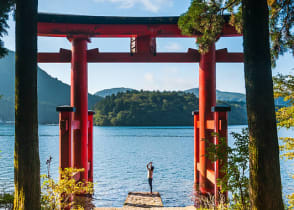
- Subscribe Digital Print

- 'Shogun'
- Special series: Boiling Point
Latest News
Today's print edition
Home Delivery
- Crime & Legal
- Science & Health
- More sports
- CLIMATE CHANGE
- SUSTAINABILITY
- EARTH SCIENCE
- Food & Drink
- Style & Design
- TV & Streaming
- Entertainment news
Japan to tighten borders for travelers from China on Dec. 30
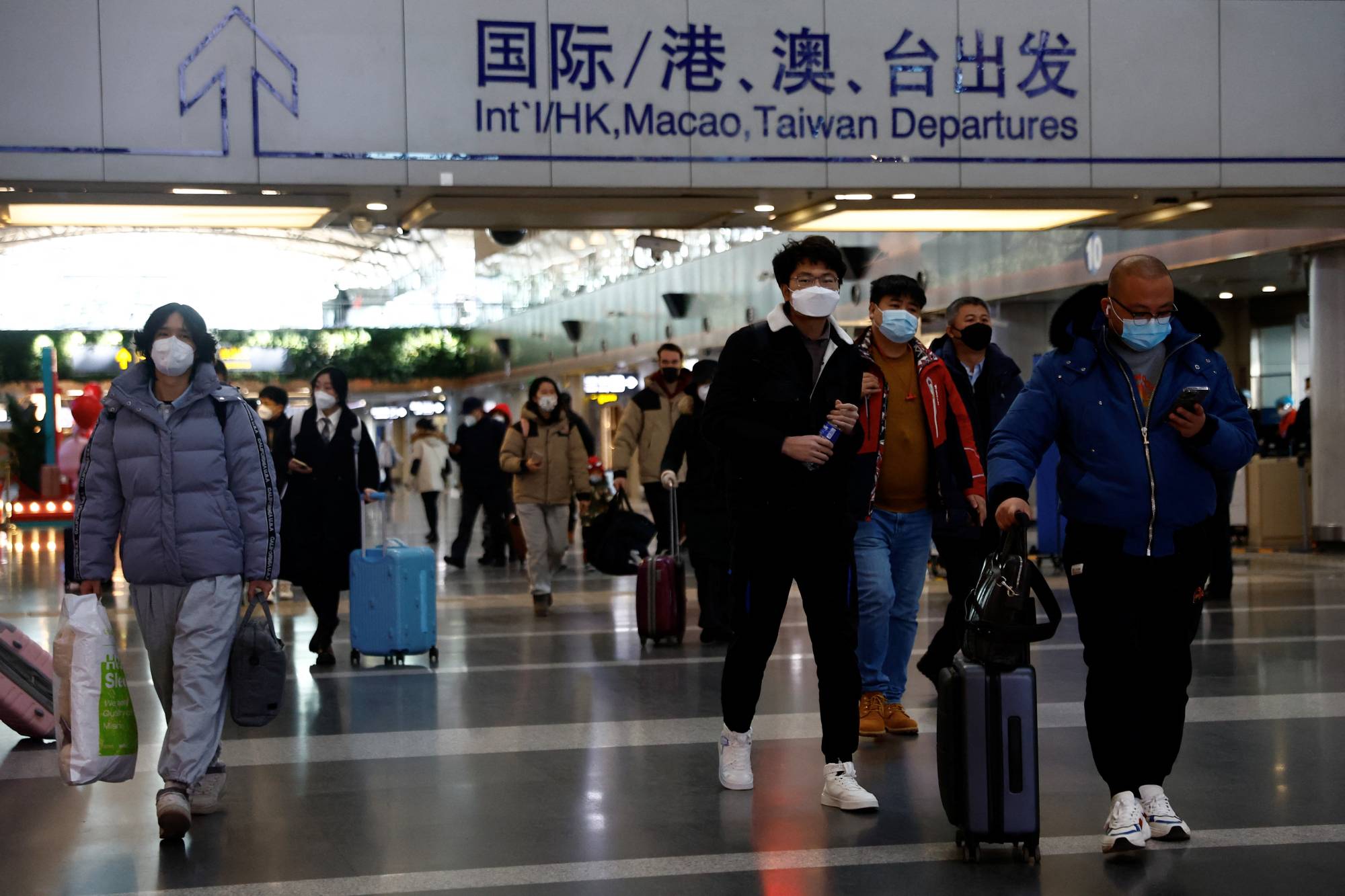
Japan will tighten its border controls for travelers from China on Friday, as the latter nation is seeing a surge in COVID-19 infections, Prime Minister Fumio Kishida said Tuesday.
Kishida’s abrupt announcement comes only a day after news that China will scrap its quarantine for incoming travelers from Jan. 8, one of the country’s most significant steps since it effectively abandoned its two-year “zero-COVID” policy.
All travelers from China, including Japanese citizens and returning foreign nationals living in Japan, as well as those who have been to China within the previous seven days will be tested for COVID-19 upon their arrival in Japan. Those who test positive will be required to quarantine at designated facilities for seven days.
The quarantine period for those who test positive is expected to be seven days if they have developed symptoms. For those who are asymptomatic, the period will be shortened to five days if they test negative on the fifth day, according to the health ministry.
The number of flights from China will also be limited to guard against a sudden increase in COVID-19 infections in Japan, Kishida told reporters at the Prime Minister’s Office. Arrivals from China, Hong Kong and Macao will be limited to four airports: Narita, Haneda, Kansai International and Chubu.
“It is difficult to grasp the situation in China because the information on infections differs between the central and regional governments, as well as between the government and the private sector,” Kishida said. “People in Japan are getting worried because of that.”
Kishida also stressed that the latest measure is temporary and that the government will do its best not to stop cross-border travel.
Before the pandemic, Japan’s tourism sector was reliant on foreign travelers, especially those from China, with the government pushing to increase inbound tourists to 60 million by 2030. In 2019, such visitors hit a record 31.9 million, of which 9.59 million, or about 30%, were Chinese.
Tourists from China often went on shopping sprees in Japan, dubbed “explosive shopping” in Japanese, with their spending amounting to 36.8% of the ¥1.77 trillion that came from all tourists in 2019, according to government data.
Foreign tourists were not allowed to travel to Japan for a long stretch of the pandemic. But even since Japan has reopened its borders, Chinese visitors have been scarce due to the COVID-19 restrictions in their country . In November, there were only 21,000 visitors from China, about 2% of all foreign visitors to Japan, according to the Japan National Tourism Organization.
China is currently experiencing an explosive growth in new COVID-19 infections, with some reports saying that 250 million people, or 18% of the population, have been infected with the virus in just the first 20 days of this month.
U.K.-based health data firm Airfinity, meanwhile, said Wednesday that, based on regional data, China is likely now seeing over 1 million cases and over 5,000 deaths a day, in stark contrast to official data showing 1,800 cases and only seven official deaths over the past week.
What’s driving the surge in cases in China is BF.7, short for BA.5.2.1.7, which is a sublineage of omicron subvariant BA.5, experts say.
Compared with the BA.1, BA.2 and BA.5 subvariants detected in the past, omicron BF.7 is better at evading the immune system and has a shorter incubation period and faster transmission rate, according to a Chinese medical expert quoted by China’s Global Times.
But while Japan’s latest border control measures seem to reflect concerns over this new type of the virus, some experts are calling for a more measured response.
“Japan will definitely see a further increase in the number of new cases,” said Tetsuya Mizutani, professor of virology at the Tokyo University of Agriculture and Technology. “But all of the recent new types that we are seeing worldwide are offshoots of BA.2, BA.4 and BA.5.
“As long as the virus keeps mutating within that range (of the omicron family), we shouldn’t worry much, though we should not be overly optimistic, either.”
Many experts have said the situation in China is being exacerbated by its lack of approval for the messenger RNA vaccines developed by Western firms.
“The Chinese vaccines were (marginally) effective for the original coronavirus strain coming out of Wuhan, China,” said Tetsuo Nakayama, a project professor at Kitasato Institute for Life Sciences.
But as the virus mutated, the Chinese shots — which are inactivated vaccines using coronavirus particles that have been killed, and as such are different from the mRNA vaccines developed by Pfizer and Moderna — lost their effectiveness, despite claims by manufacturers that they work against the omicron variant and its subvariants, he said.
Nakayama added that Japan should closely monitor infection trends, especially on how the virus is mutating, regardless of what border control measures are in place.
“Border controls cannot keep cases out,” he said. “As Japan’s COVID cases are also rising, we should watch out for new variants and evaluate their characteristics, including how pathogenic they are.”
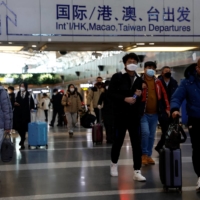
In a time of both misinformation and too much information, quality journalism is more crucial than ever. By subscribing, you can help us get the story right.
With your current subscription plan you can comment on stories. However, before writing your first comment, please create a display name in the Profile section of your subscriber account page.
Your subscription plan doesn't allow commenting. To learn more see our FAQ
- WHAT’S TRENDING
- Editors' Picks

SUSTAINABLE JAPAN

SPECIAL SUPPLEMENTS
Sponsored contents planned and edited by JT Media Enterprise Division.
広告出稿に関するおといあわせはこちらまで
SUPPLEMENTS BINDER

- Bridges by SMS
- Global Insight
- World Eye Reports
From China to Japan: A Guide to Traveling between Two Fascinating Countries
Traveling from China to Japan is a great way to experience the unique cultures and landscapes of two of Asia’s most fascinating countries. Whether you’re interested in ancient history, modern innovation, or natural beauty, there is something for everyone to enjoy. However, for those planning to travel between China and Japan, there are a few things to keep in mind to make the most of your trip.
First, it’s important to note that both China and Japan require all travelers to have a valid passport and visa. If you’re planning to travel between the two countries, be sure to check the visa requirements for both destinations in advance of your trip. It’s also a good idea to have multiple copies of your passport, visa, and other important documents in case of loss or theft.

When planning your itinerary, it’s important to keep in mind the size and diversity of both China and Japan. China is a vast country with many different regions and cultures to explore, from the ancient capital of Beijing to the modern metropolis of Shanghai. Japan, on the other hand, is known for its ancient temples, lush gardens and delicious food. Some must-see destinations in Japan include Tokyo, Kyoto and Hiroshima.
Transportation between China and Japan is well-developed, with a variety of options available. For example, you can fly between the two countries, or take a train or a bus. The high-speed train is a particularly efficient and convenient way to travel between major cities in China and Japan. Additionally, there are ferries that connect some cities like Shanghai and Osaka, which is a great way to enjoy the scenic views and sea.
When it comes to food and accommodation, both China and Japan offer something for every budget and taste. From street food to fine dining, you’ll find a wide range of delicious and authentic dishes to try. Accommodation options range from budget-friendly hostels to luxury hotels. If you’re looking for a more unique experience, you can also consider staying in a traditional ryokan in Japan or a courtyard house in China.
Traveling from China to Japan is a great way to experience the unique cultures and landscapes of two of Asia’s most fascinating countries. With this guide, you’ll be well on your way to making the most of your trip. Remember to plan ahead, be prepared and enjoy the journey of discovering the beauty of these two great countries.
Leave a Comment Cancel Reply
Your email address will not be published. Required fields are marked *
Save my name, email, and website in this browser for the next time I comment.

China and Japan Highlights
- Classic route through China’s Golden Triangle cities and west-east Japan.
- Touch 5,000 years of Chinese history through Great Wall & Terracotta Army.
- Discover authentic local food in alleys of Beijing and markets of Tokyo.
- Upgraded Mt. Fuji tour: adjustable visit date; cruise and ropeway experience.
- Glimpse backstreets in Gion of Kyoto, where geishas live and work.
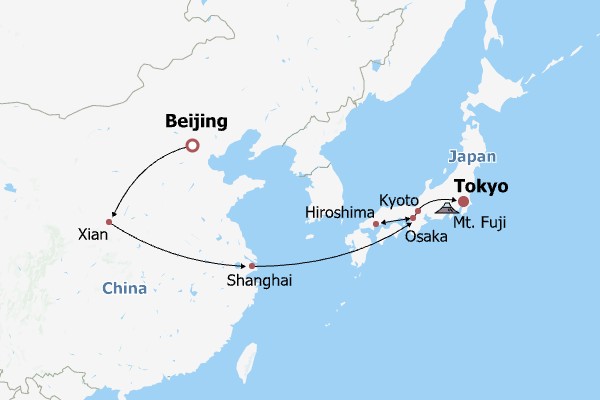
- Prices are per person on twin sharing basis.
- The prices in red reflect 12% discount.
- Service of private English-speaking guide
- Accommodation with daily breakfast
- Lunch specified in the itinerary
- Private car with driver, airport pick-up & drop-off in China
- Public transfer in Japan
- Economy class airfare of Xi'an - Shanghai, and Shanghai - Osaka
- Entrance fees for mentioned sights visited
- International flights of arrival and departure
- Tokyo airport see-off
- Meals other than those mentioned in the itinerary
- Personal expenses
- China and Japan visa fee
- Easter, Christmas and New Year supplement
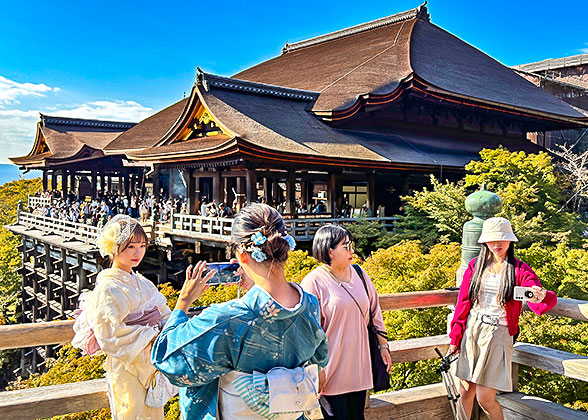
- Inquiry Form
- Skip to main content
- Skip to primary sidebar

Destinations
- Plan Your Trip
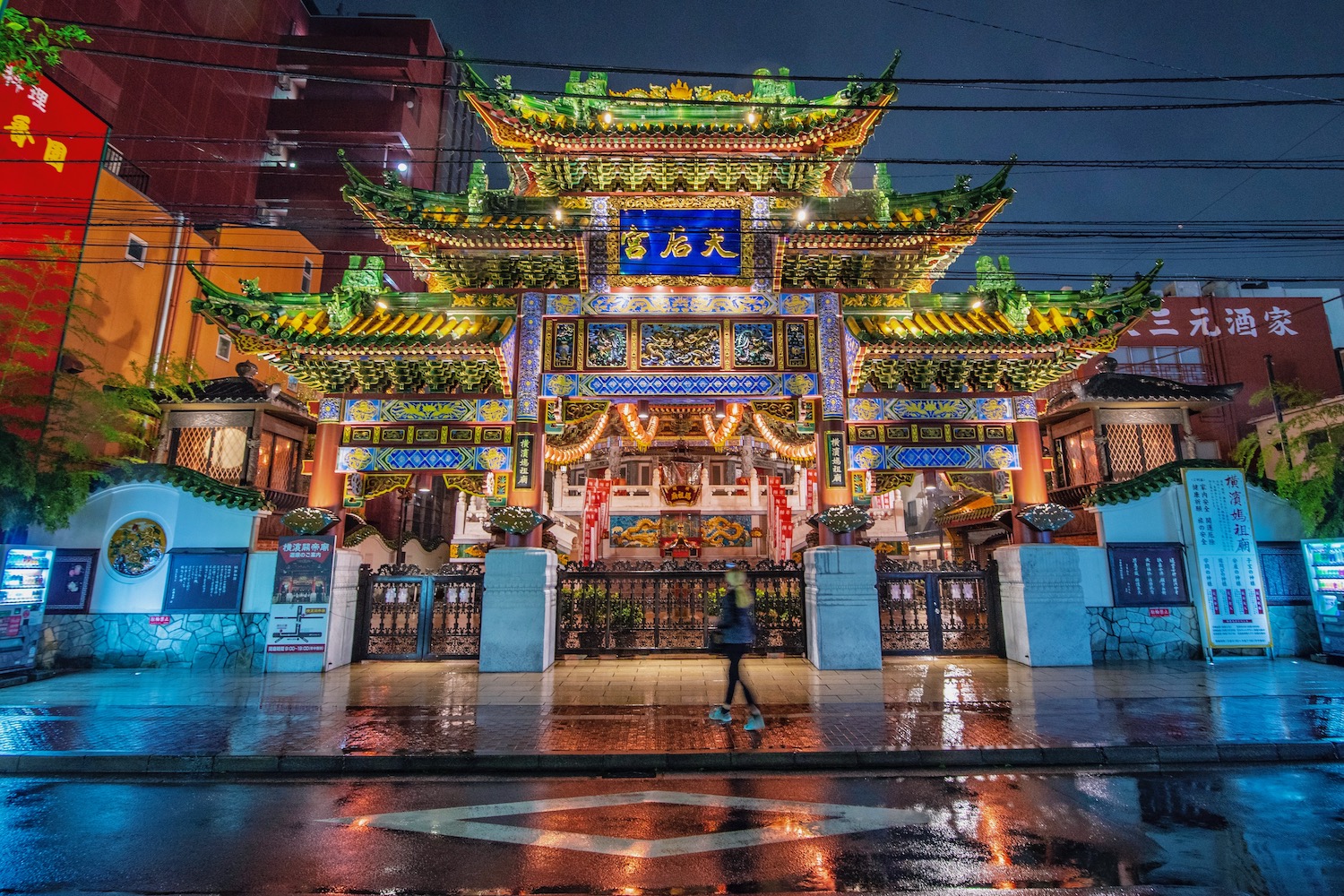
Where to Find China in Japan
June 11, 2024 by Robert Schrader Leave a Comment
I learned early on in my travels to be careful when mentioning Japan and China in the same sentence. This was even before I knew the extent of the World War II brutality that has led people on both sides to feel this way.
In spite of this, an inextricable truth remains: Chinese influence is inextricable from Japan, and not just past incarnations of the latter. Even exploring Japan in the 21st century, you’ll see many examples of Chinese culture and cuisine as you travel.
This is most acute as you explore the various Chinatowns in Japan, though you don’t necessarily need to be in Yokohama, Kobe or Nagasaki to appreciate Japan’s lingering Chinese character.
China Has Always Been a Part of Japan
While I obviously don’t mean this literally, China has always had a sizable influence on life in Japan—and I’m not just talking in terms of Japan Chinatowns. If you go back in Japanese history (and I mean all the way back in Japanese history), the travels of early Japanese diplomats to ancient China influenced their impressions of how Japanese society should be constructed.
Japan is not China, and it never has been. Rather, I’d say the relationship of Japan to China throughout time has been like the one between Australia and New Zealand. While the development of modern societies on either side of The Ditch has been similar, a notable contrast has been that while physical casinos exist in Australia, Kiwis have to play games including popular pokies in an online setting (if at all).
Japan’s Chinatowns (Official and Unofficial)
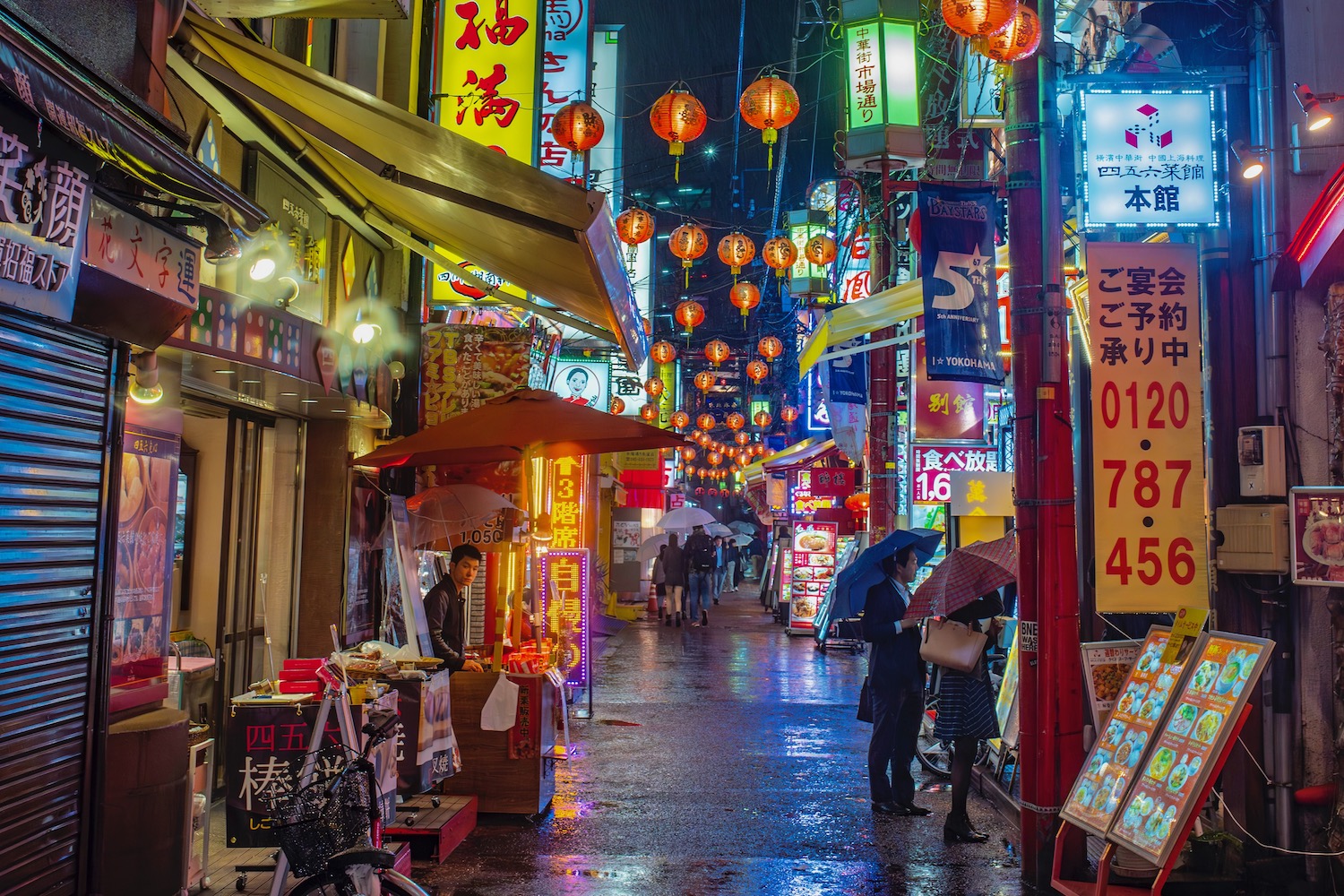
The most convenient of Japan’s three “main” Chinatowns to Tokyo, Yokohama Chinatown is the first one I ever visited. It’s a delight to explore and discover, whether you eat at a traditional Cantonese restaurant with items shared around a huge, round table, or venture out in the darkness to practice your nighttime photography skills at Kuan Ti Miao Taoist temple.

Planning to spend most of your trip in the Kansai region, rather than Tokyo? A more convenient Japanese Chinatown is Kobe Chinatown . Located near Motomachi Station only a short walk both from Sannomiya and the Kobe Port Tower , Kobe’s Chinatown is slightly more modest than the one you find in Yokohama. I like contrasting the traditions here with those “up the hill” in Western-inflected Kitano-cho .
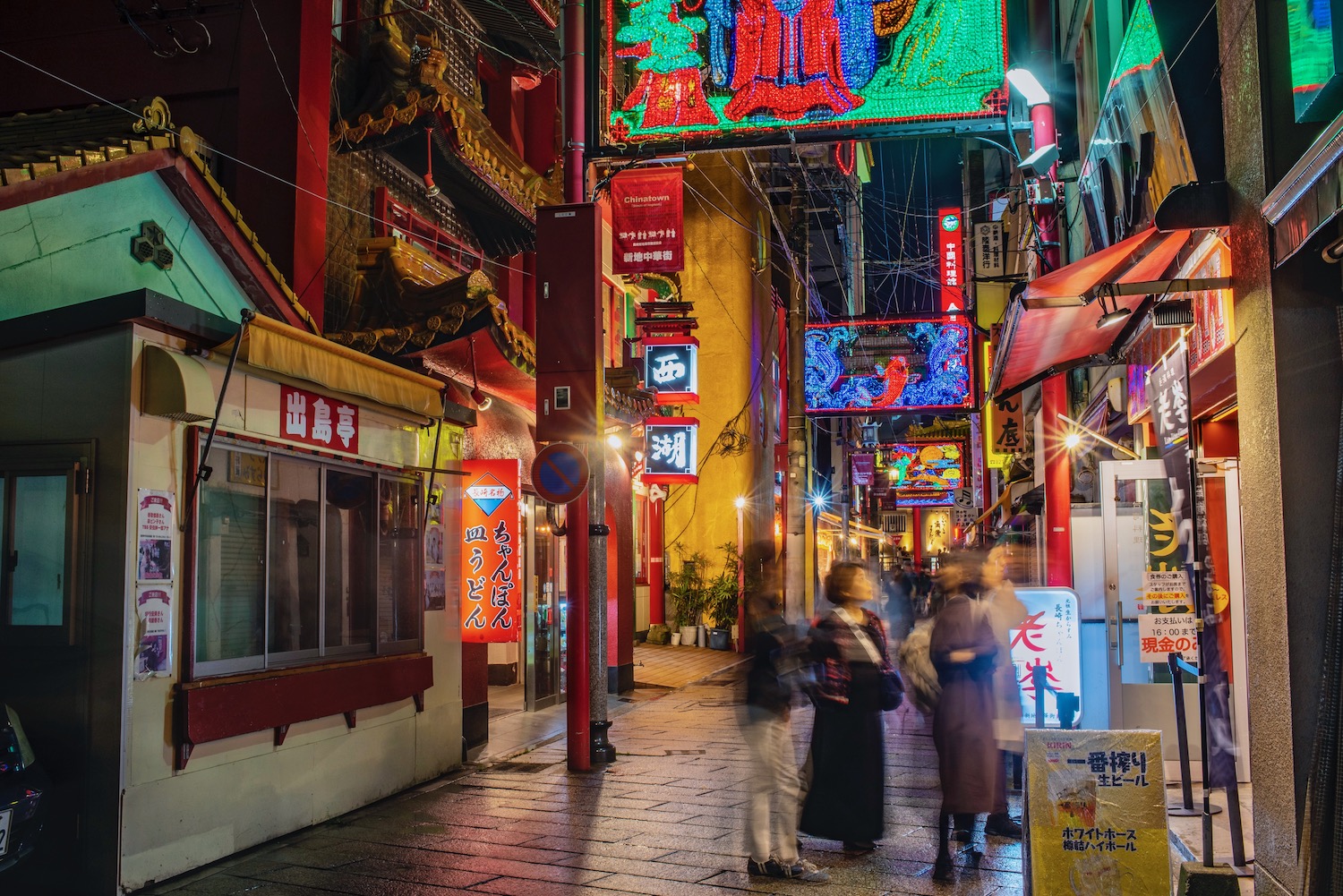
As I write this article and think back on more than a decade of travel, it seems hasty to declare Nagasaki Chinatown my “favorite.” On the other hand, it is a delight to explore, especially at night. It’s near the former Dutch settlement of Dejima , so whether you’re eating Chinese chanpon beneath its colorful lights or visiting the Spectacles Bridge (which could just as well be in Europe), you’re sure to enjoy yourself.
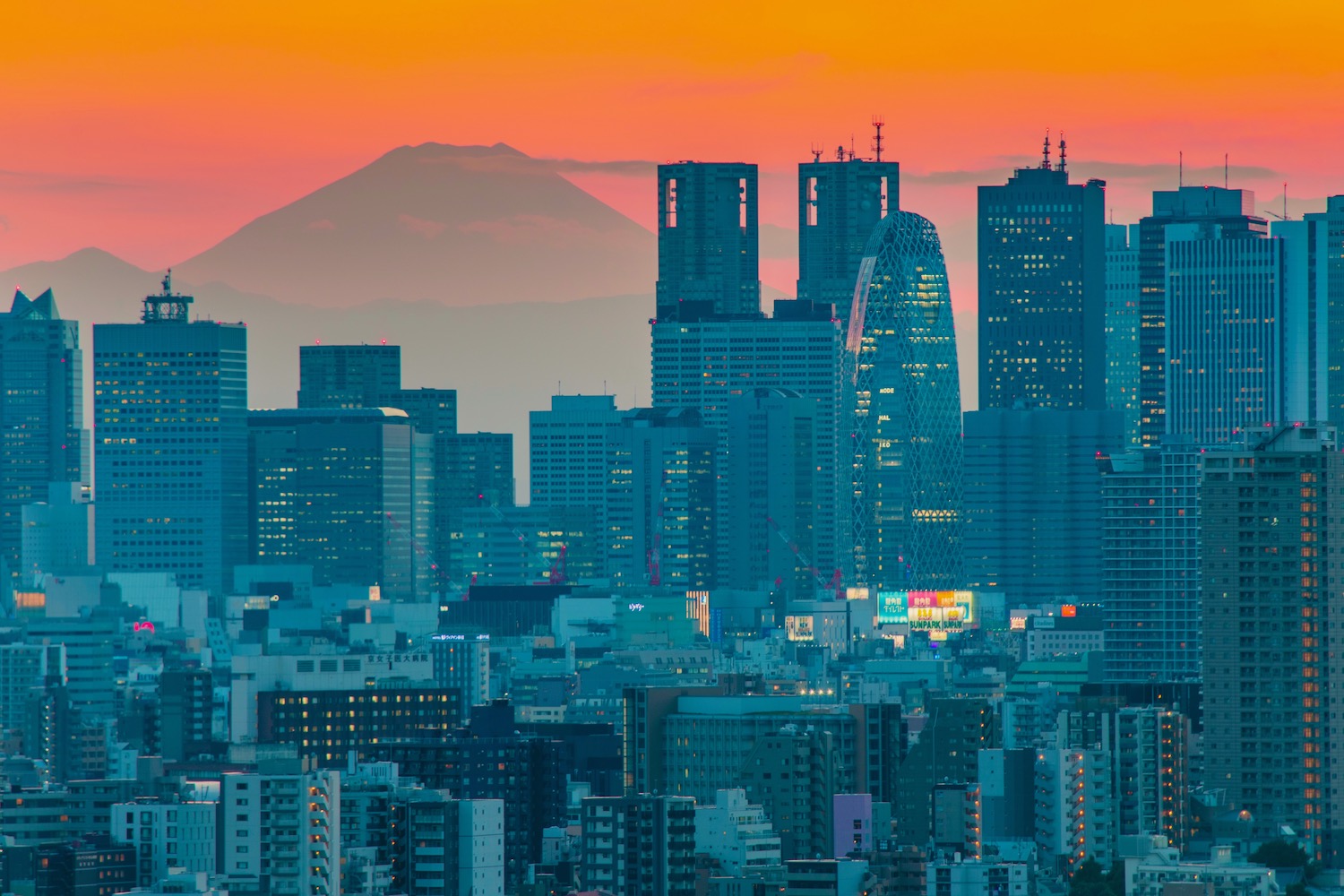
While Tokyo’s Ikebukuro district is not an official Japan Chinatown, it is extremely convenient. Located on both the JR Yamanote Line and at the western end of the Tokyo Metro Marunouchi Line , Ikebukuro is a place you’re likely to be anyway. Take note of the dozens of Chinese businesses (and people) everywhere, even if you only come here to enjoy the view from Sunshine City Observatory .
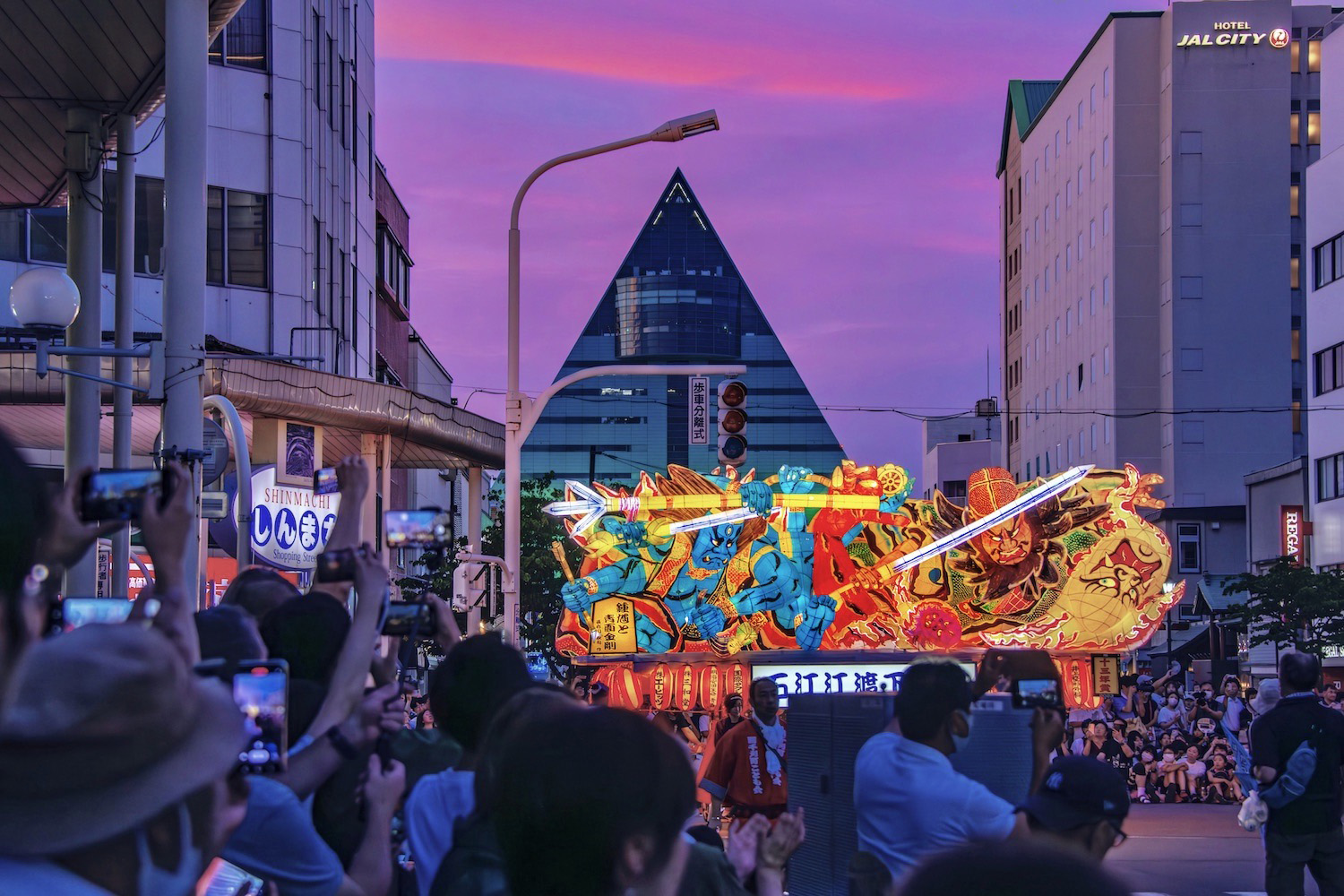
Neither Aomori nor Sendai cities are visibly more Chinese than anywhere else in Japan. However, coming to the Tohoku region where you find them, at least in the summer, can expose you to quintessentially Japanese experiences that are Chinese in origin. I’m speaking, of course, about Sendai’s Tanabata festival and the Aomori Nebuta Matsuri , two of Japan’s top summer festivals.
The Easiest Way to Experience China in Japan
Don’t have space in your itinerary to experience any of the conspicuously Chinese places or events in Japan? Eat these foods instead:
- Although it’s regarded as a quintessential Japanese food these days, ramen noodle soup originated in China, and has more in common with Chinese cuisine than most Japanese food.,
- Love gyoza ? Whether you eat it in Japan under this name, or have enjoyed “pot stickers” in the US or Europe, these crispy dumplings are Chinese through and through.
- While tantanmen shares characters with Chinese dan dan mian , the noodles you find in Japan’s Akita aren’t quite the same as what you find in China’s Chengdu, though they’re both spicy and delicious.
As you can see, finding Chinese influence in Japan is often simply a matter of sitting down for a meal. Leave a comment below to let me know which one you find most delicious.
Other FAQ About Chinatowns in Japan
How many chinatowns does japan have.
Japan has three proper Chinatowns, located in Yokohama, Kobe and Nagasaki cities. Additionally, you can find sizable Chinese influence in Tokyo’s Ikebukuro ward, and also by attending summer matsuri in Sendai and Aomori cities in the Tohoku region.
What is Japan’s oldest Chinatown?
Japan’s oldest Chinatown is the one in Nagasaki, which dates back several hundred years. This makes sense, of course, given that Nagasaki is closer to China than Kobe or Yokohama; during the sakoku period, Nagasaki was the only Japanese port open to foreign ships.
Is it worth going to Yokohama Chinatown?
Yokohama’s Chinatown is an awesome place to visit, though I can understand why you might not consider it worth a day trip from Tokyo on its own. I sometimes like stopping here in the evening after a morning in Kamakura, or after I’ve spent the daylight hours at Yokohama’s Sankei-en garden.
The Bottom Line
Chinatowns in Japan are the places where it’s easiest to observe Chinese influence in modern Japan, but that’s not the only place where it’s visible. Even as far back as the Jomon and Yayoi periods, Chinese influence in Japan has been impossible to mistake. However, when you visit Chinatowns in Kobe, Yokohama or Nagasaki, you can often forget that you’re in Japan at all. This is to say nothing of Japanese cuisine like gyoza and ramen , which actually have their origins in China. Need personalized help putting your next Japan trip together? Consider hiring me to plan your itinerary!

Plan Your Japan Trip

Subscribe to email updates!
Words, images and design ©2018-2024 Robert Schrader, All rights reserved. Read Privacy Policy or view sitemap .
- Travel Planning Guide
A Travel Comparison for Vacations, Honeymoons, and Tours Japan vs. China
Should you visit japan or china, which country is cheaper, china or japan.
Should I visit Japan or China? This is a popular question for many travelers. By figuring out which country is more expensive, you'll understand where you'll get more bang for your buck. A week in China can cost you about $565 (per person), while a week in Japan may cost you around $921. These differences become even more noticable if you plan to spend a longer time in the country. 10 days , two weeks , or even one month of travel to China or Japan can really add to your travel budget.
Accommodation is often cheaper in China compared to Japan ($35 vs. $63). Budget travelers usually stay in less expensive hostels and guest houses, while nicer hotels often appeal to families and upscale travelers.
Or, compare hostel and guesthouse prices between China and Japan to find the cheapest accommodation here: China hostels and Japan hostels .
When comparing food in Japan vs. China they are not just different in cuisine, but also in price. Meal and restaurant costs in Japan ($32) are often cheaper than China ($23).
- Japan Prices China Prices
- Average Daily Cost Per person, per day Japan $ 132 China $ 81
- Accommodation Hotel or hostel for one person Japan $ 63 China $ 35
- Accommodation Typical double-occupancy room Japan $ 125 China $ 70
- Local Transportation Taxis, local buses, subway, etc. Japan $ 19 China $ 16
- Food Meals for one day Japan $ 32 China $ 23
- Entertainment Entrance tickets, shows, etc. Japan $ 20 China $ 17
- Alcohol Drinks for one day Japan $ 16 China $ 11
- Water Bottled water for one day Japan $ 4.76 China $ 1.01
How much are flights to Japan and China?
The price of a plane ticket may help you decide which country you should visit.
Find a Hostel in Japan or China
Hostels, guest houses, and locally owned B&B's are often the cheapest form of accommodation.
Related Articles for Japan
Related articles for china, when is the best time to visit japan and china.
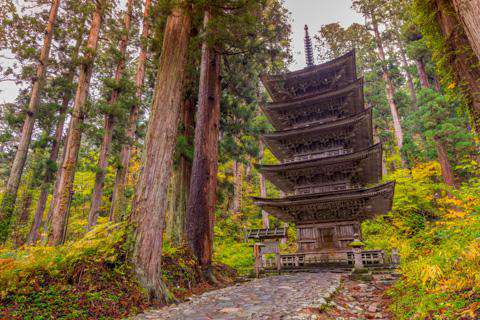
Why is Japan more expensive than China?
What are the most expensive and cheapest cities and regions in japan and china.
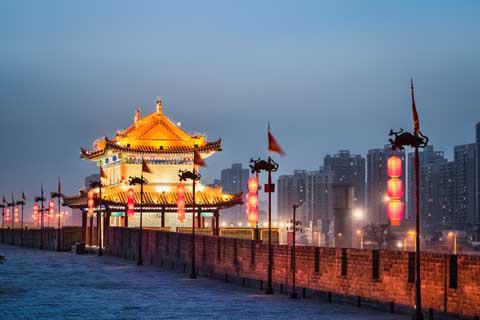
How you can save money when visiting Japan and China?
Subscribe to our newsletter.
By signing up for our email newsletter, you will receive occasional updates from us with sales and discounts from major travel companies , plus tips and advice from experienced budget travelers!

More Country Comparisons
Pin this page.
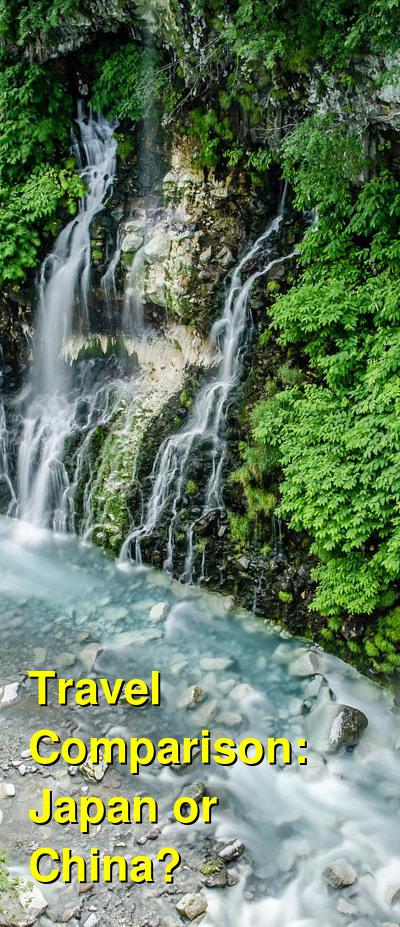
- Privacy / Terms of Use
- Activities, Day Trips, Things To Do, and Excursions
- Media & Industry
- Meetings & Events
- Select Language 简体中文 繁體中文(香港) 繁體中文(臺灣) India (English) Bahasa Indonesia 한국어 ภาษาไทย Tiếng Việt Singapore (English) Philippines (English) Malaysia (English) Australia/New Zealand (English) Français Deutsch Italiano Español United Kingdom (English) Nordic countries(English) Canada (English) Canada (Français) United States (English) Mexico (español) Português العربية Japan(日本語) Global (English)
- India (English)
- Bahasa Indonesia
- Singapore (English)
- Philippines (English)
- Malaysia (English)
- Australia/New Zealand (English)
- United Kingdom (English)
- Nordic countries(English)
- Canada (English)
- Canada (Français)
- United States (English)
- Mexico (español)
- Global (English)
- Fujiyoshida
- Shimonoseki
- Ishigaki Island
- Miyako Island
- Kerama Island
- Tokyo Island
- Koka & Shigaraki
- Hida Takayama
- Ginza, Nihonbashi
- Beppu & Yufuin (Onsen)
- Ginzan Onsen
- Nagasaki Islands

- Kumano Kodo
- Shikoku Karst
- Amami Oshima
- Hachimantai
- Omihachiman
- Aizuwakamatsu

- Diving in Japan
- Skiing in Japan
- Seasonal Flowers in Japan
- Sustainable Outdoors
- Off the Beaten Track in Japan
- Scenic Spots
- World Heritage
- Home Stays & Farm Stays

- Japanese Gardens
- Japanese Crafts
- Temple Stays
- Heritage Stays
- Festivals and Events
- Theater in Japan
- Japanese Tea Ceremony
- Cultural Experiences in Japan
- Culture in Japan

- Local Cuisine Eastern Japan
- Local Cuisine Western Japan
- Local Street Food
- Japan's Local Ekiben
- Japanese Whisky
- Vegetarian and Vegan Guide
- Sushi in Japan Guide
- Japanese Sake Breweries

- Art Museums
- Architecture
- Performing Arts
- Art Festivals
- Japanese Anime and Comics
- Japanese Ceramics
- Local Crafts

- Scenic Night Views
- Natural Wonders
- Theme Parks
- Samurai & Ninja
- Iconic Architecture

- Wellness Travel in Japan
- Japanese Ryokan Guide
- A Guide to Stargazing in Japan
- Relaxation in Japan
- Forest Bathing (Shinrin-yoku)

- Experiences in Japan
- Enjoy my Japan
- National Parks
- Japan's Local Treasures
- Japan Heritage
- Snow Like No Other
- Wonder Around Japan

- Visa Information
- Getting to Japan
- Airport Access
- COVID-19: Practical Information for Traveling to Japan
- Anime Tourism
- Countryside Stays
- Accessible Tourism
- Hokkaido Great Outdoors
- Scenic World Heritage in Tohoku
- Shikoku’s Nature and Traditions
- Southern Kyushu by Rail

- Traveling by Rail
- How to Travel by Train and Bus
- JR Rail Passes
- Scenic Railways
- Renting a Car
- Sustainable Travel in Japan
- Travel Brochures
- Useful Apps
- Online Reservation Sites
- Eco-friendly Accommodation
- Luxury Accommodations
- Traveling With a Disability
- Hands-free Travel
- How to Book a Certified Tour Guide
- Volunteer Guides
- Tourist Information Center

- Japanese Manners
- Spring in Japan
- Summer in Japan
- Autumn in Japan
- Winter in Japan
- Cherry Blossom Forecast
- Autumn Leaves Forecast

- Japan Visitor Hotline
- Travel Insurance in Japan
- Japan Safe Travel Information
- Accessibility in Japan
- Vegetarian Guide
- Muslim Travelers
- Safety Tips

- JAPAN Monthly Web Magazine
- Arts & Cultures
- Nature & Outdoor
- Festivals & Events
- Insider Blog
- Things to do
- Local Guides
- Food & drink
- Traditional
- Hokuriku Shinetsu

My Favorites
${v.desc | trunc(25)}
Planning a Trip to Japan?
Share your travel photos with us by hashtagging your images with #visitjapanjp
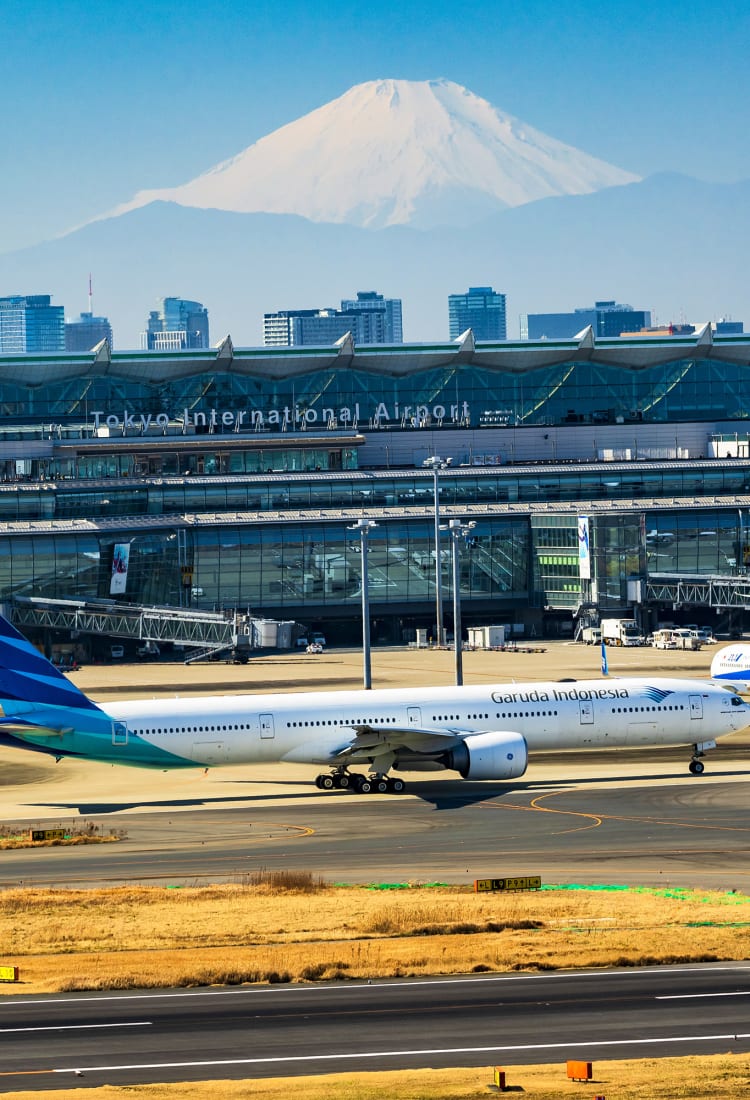
For Travelers Process Map and Checklist
All information here is gathered from the relevant authorities. Due to the regularly changing situation, it is essential for you to always check and follow the latest guidance.
Last updated: Wednesday, May 31st, 2023
Get ready for your dream trip to Japan! Japan is now open to travelers from all countries or regions! Those who enter Japan on or after April 29th 2023 are not be required to present a valid vaccination certificate or a Covid-19 negative test certificate.
Process Map -From April 29th 2023-
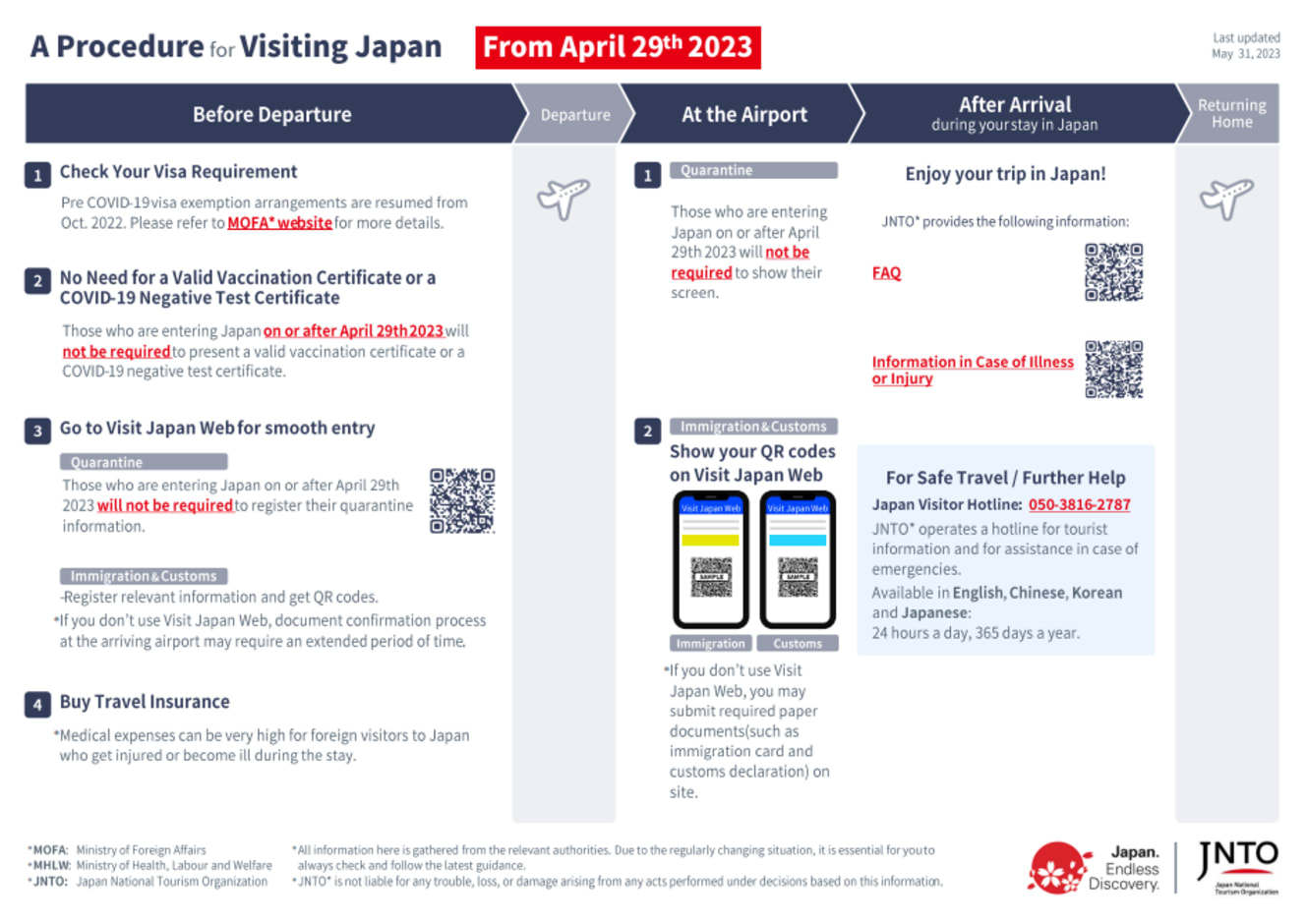
Checklist for Travelers
Before Departure
At the arrival airport in japan, after arrival, returning home, did this information help you.
out of found this information helpful.
Thank you for your feedback.
Other useful information.
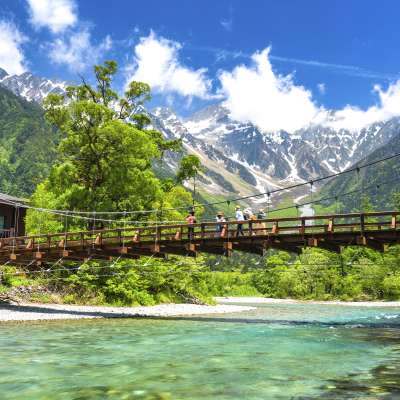
- For Travelers
Please Choose Your Language
Browse the JNTO site in one of multiple languages
The Ministry of Foreign Affairs website uses JavaScript. Please turn on "JavaScript" and use it.

Visa information for Chinese nationals
1. Visas for “short-term business affairs” or “visit to relatives/ acquaintances”
Please refer to the website of the Japanese Embassy or Consulates-General that covers the area of your residence for details.
2.Visas for Chinese group tourists and individual tourists residing in China
If the purpose of the visit is "group tourism," please apply for a group-tourism visa through an approved Chinese travel agency, who would be able to tell you what documents are necessary for the visa application. To see which travel agencies handle tourism to Japan, please refer to the web-site of the Japanese Embassy / Consulate-General in China. PLEASE NOTE that if the purpose of the visit is short-term business affairs, visiting relatives or acquaintances (including those cases where you are visiting Japan for sightseeing but staying at a house of relatives / acquaintances), you need a visa for "short-term business affairs" or "visit to relatives / acquaintances" rather than tourist visas (except Multiple-entry visas for visitors with a substantially high income). Applications should be lodged with documents provided by an "inviting person" or "guarantor" in Japan. In case the applicant is a Chinese national residing outside China, please refer to the Japanese Embassy or Consulates-General closest to the applicant’s place of residence.
(1) Group Tourists (single-entry visa)
As a general rule, tourist visits to Japan by Chinese nationals take the form of "group tours" based on the related laws and regulations of China (period of stay is up to 15 days).
If you are coming to Japan as part of a tour group operated by a tour escort through the approved Chinese travel agency, the Chinese travel agency will apply for a group tourist visa on your behalf. To find out what documents are necessary for a group-tourists visa application, please contact any approved Chinese travel agency. As a matter of information, participants in "Group Tours" are not allowed to travel on his/her own for the duration of the tour and must be accompanied by a tour escort when travelling.
(2) Individual Tourists
When certain requirements are met, visas may be issued for "individual tourists". In a "Chinese individual tour" the tourist need not be accompanied by an escort. Under this category of "Individual Tourists" visas, there are two types of visas: single-entry and multiple-entry. If you are interested in an individual tour, please apply for this type of visa through an approved Chinese travel agency. For multiple-entry visa, a Chinese travel agency must arrange the travel itinerary and reserve the accommodations for your first visit. To find out what documents are necessary for multiple-entry visas, please contact any approved Chinese travel agency for further details.
(A) Single-entry visas for Individual Tourists
Single-entry individual tourist visas (non-group tour visas) may be issued to those who have certain level of financial capability and their family members. The visas may also be issued to students (those studying in bachelor, master and doctoral degrees) or graduates (those who graduated within three years) of ordinary universities in China which are listed on the website of Ministry of Education of People's Republic of China. The period of stay allowed under this visa category is either 15 days or 30 days. The applicant seeking individual tourist visas must prepare his/her own travel itinerary in advance, approach an approved Chinese travel agency to make further arrangements for the travel, and to lodge the visa application through the travel agency.
(B) Multiple-entry visas for individual tourists visiting Okinawa / Tohoku Region (Aomori, Iwate, Miyagi, Akita, Yamagata, Fukushima)
Multiple-entry individual tourist visas may be issued to those travelers who (1) stay at least one night in either Okinawa Prefecture or any prefecture in Tohoku Region (Aomori, Iwate, Miyagi, Akita, Yamagata, Fukushima) and (2) meet the requirements described below. These visas are valid for 3 years and the period of stay allowed for each visit is up to 30 days. If the applicant meets the requirements, his/her family members may also travel with the applicant or on their own. In order to apply for these visas, the applicant must prepare his/her own travel itinerary in advance, approach an approved Chinese travel agency to make further arrangements for travel, and then lodge the visa application through the travel agency for the first visit. The applicant need not make travel arrangements through the travel agency for his/her second visit onwards.
The requirements:
(c) multiple-entry visas for individual tourists with a sufficient level of financial capability.
Multiple-entry individual tourist visas may be issued to those travelers who have a sufficient level of financial capability and their family members. The same type of visas may also be issued to those who have travel records of enter to Japan twice or more in the last three years with certain categories of individual tourist visa (group tour visa and temporary visa (Tokudai) are excluded). These visas are valid for 3years and the period of stay allowed for each visit is up to 30 days. Unlike the "Multiple-entry visas for individual tourists visiting Okinawa / Tohoku Region", the visas issued under this category imposes no requirement to visit any specific destination in Japan. The applicant seeking this type of visa must prepare his/her own travel itinerary in advance, approach an approved Chinese travel agency to make further arrangements for the travel, and to lodge the visa application through the travel agency. The applicant need not make travel arrangements through the travel agency for his/her second visit onwards.
(D) Multiple-entry visas for visitors with a substantially high income
Multiple-entry visas which are valid for 5 years and of which period of stay for each visit is allowed up to 90 days may be issued to applicants with a substantially high income and their family members who are visiting Japan for the purpose of tourism, short-term business affairs, visiting relatives or acquaintances. Those who obtained such visas are not permitted to perform business activities to generate revenue or receive any remuneration. To find out what kind of documents is necessary for this type of visa, please contact with any of approved Chinese travel agency.
3. Multiple–entry visas for Chinese visitors residing outside of China with a substantially high income or a sufficient level of financial capability
Multiple-entry visas may be issued to applicants with a substantially high income or a sufficient level of financial capability and their families. Visas for the applicants with a substantially high income are valid for 5 years and the period of stay allowed for each visit is up to 90 days, and visas for the applicants with a sufficient level of financial capability are valid for 3 years and the period of stay allowed for each visit is up to 30 days
For details, please contact the Japanese Embassy or Consulate-General that covers the area where you reside.
If the applicants reside in China, they must apply for this type of visa through an approved Chinese travel agency in China. For the documents that the applicants must prepare for application, please refer any approved Chinese travel agency. Approved Chinese travel agency can be found in the website of the Japanese Embassy or Consulates-General

Japan or China: Where to travel next?
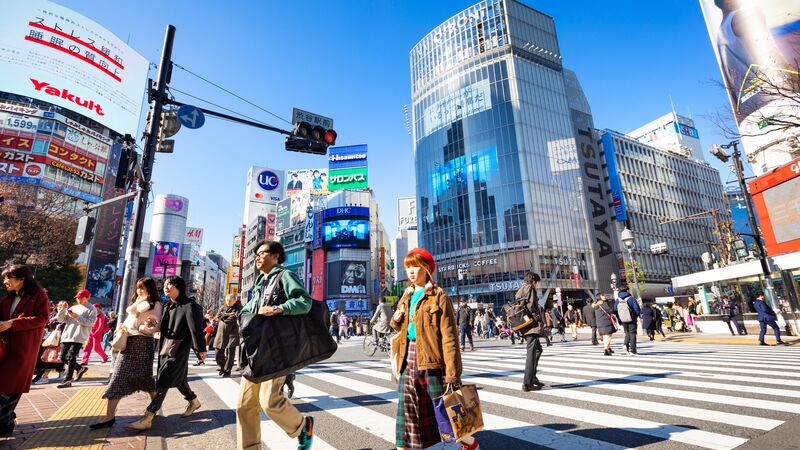
Because sometimes the hardest part of travelling is choosing where to go. ..
If you’re anything like me (and have an ever-growing bucket list), then it’s not easy choosing where to travel next. Especially when it’s between Japan and China. Both countries are steeped in history and boast incredible landscapes, world-class cuisines and more adventures than you can poke a chopstick at. Sigh .
If you’ve hit a brick wall, fear not. We’ve put together a handy guide comparing all the top considerations to help you out – we’re talking culture, food, cities, landscapes and weather. Failing this, you can always flip a coin.
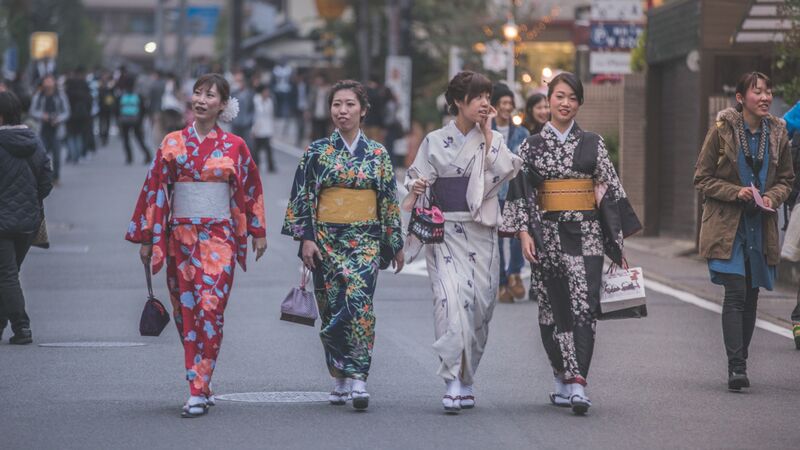
Japanese culture is a fascinating mix of old and new. On the one hand, there are thousands of years of traditions influenced by Shinto, Buddhism and Confucianism, but on the other is a trailblazing society setting trends in tech, fashion-forwardness and architecture. Sleek bullet trains whoosh past centuries-old temples and tea houses, and you might see geishas using state-of-the-art vending machines selling everything from lettuce to lobsters (only in Japan!).
Although the younger generations continue to push the cultural boundaries, social harmony is the pillar of Japanese society, and traditional values like saving face, humility and respecting your elders are just as important today. Ancient Japanese philosophies are also integrated into daily life, including ikigai (reason for being), omotenashi (providing impeccable hospitality without expecting anything in return) and kaizen (continuous improvement).
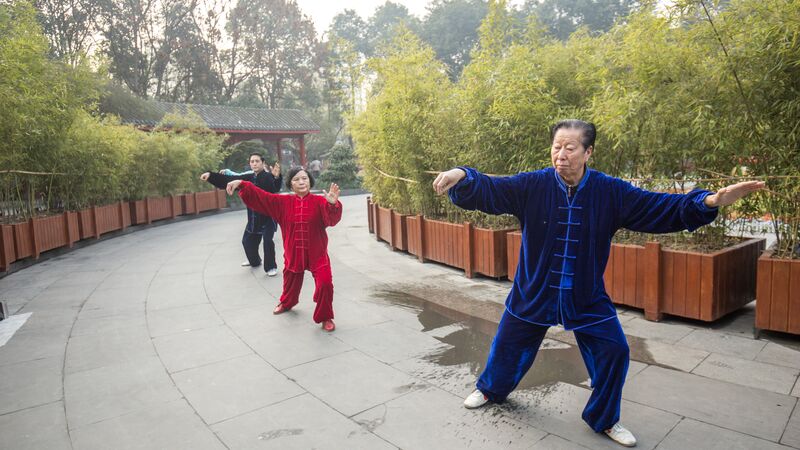
As one of the world’s oldest civilisations, China has an intriguing history of dynastic rule and ancient cultures influenced by Confucianism, Taoism and Buddhism. Relics of China’s dynastic past are littered throughout the country, including the iconic Great Wall and the Forbidden City. China has also gifted the world with many cultural riches including martial arts, Chinese medicine, kungfu, tai chi and Chinese calligraphy.
With 56 ethnic groups (the largest being the Han), modern Chinese culture is rich and complex. Though China continues to grow and change at a rapid pace thanks to a booming economy, centuries-old philosophies are interwoven in daily life – including the theories of the five elements and yin-yang – and traditional values such as family, social harmony and loyalty remain at the heart of society. This contrast between the ancient and the modern is particularly strong in cities like Shanghai where giant skyscrapers loom over traditional lilong houses.
SEE THE HIGHLIGHTS OF CHINA
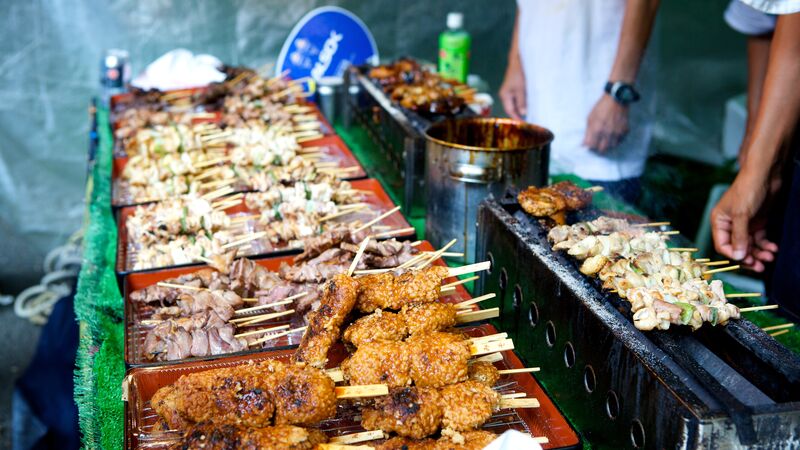
Japan brought sushi, ramen and tempura to the world (and for that, I’ll be eternally grateful), but there’s so much more on offer. Japanese cuisine is renowned for its fresh, seasonal produce and meticulous preparation. Most dishes comprise rice or noodles, a few side dishes and soup. Meat is a popular ingredient, though seafood is where Japan shines (hello, sashimi). Popular dishes include unagi (grilled eel), takoyaki (octopus dumplings), karaage (Japanese fried chicken), yakitori (meat skewers) and shabu-shabu (Japanese-style hot pot).
Feeling thirsty after all that soy sauce? Quench your thirst with a cold beer or glass of sake. Or swap your morning coffee for a matcha latte or antioxidant-packed green tea. Tea is a big deal in Japan, and if you attend a traditional Japanese tea ceremony you’ll never look at a cuppa in the same way again.
GO ON A REAL FOOD ADVENTURE IN JAPAN
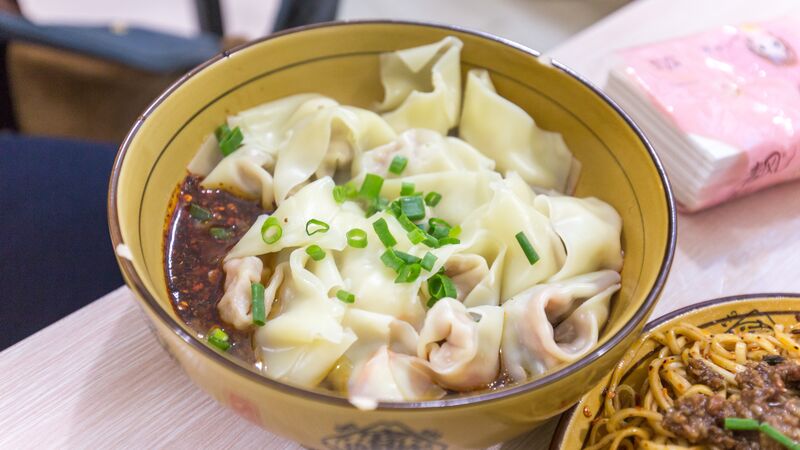
China is massive – and so nearly every region has its own cooking style. Generally, Chinese food tends to be heavier than Japanese with more spices, chilli and oil. It’s also meatier with lots of beef, pork and duck, though seafood and tofu are also popular. Famous dishes to try include kung pao chicken, Peking roast duck, Mapo tofu and char sui. A word of warning: it can be hard to find vegetarian and vegan food in China, but it can be done.
If you like it hot, then Sichuan is calling your name. This province is known for the fiery, sweat-inducing Sichuan pepper, which, according to ancient Chinese medicine, helps the body to expel dampness and prevent disease. You’ll definitely sweat after slurping on a Sichuan hot pot!
If you need to quench your thirst after all that pepper, try a refreshing beer (Snow and Tsingtao are two of the most popular brands), a baijiu cocktail or a glass of mijiu (a sweet, slightly bitter wine made from glutinous rice). Stay hydrated throughout the day with green, white or black tea – like Japan, tea is an integral part of Chinese culture.
GO ON A REAL FOOD ADVENTURE IN CHINA
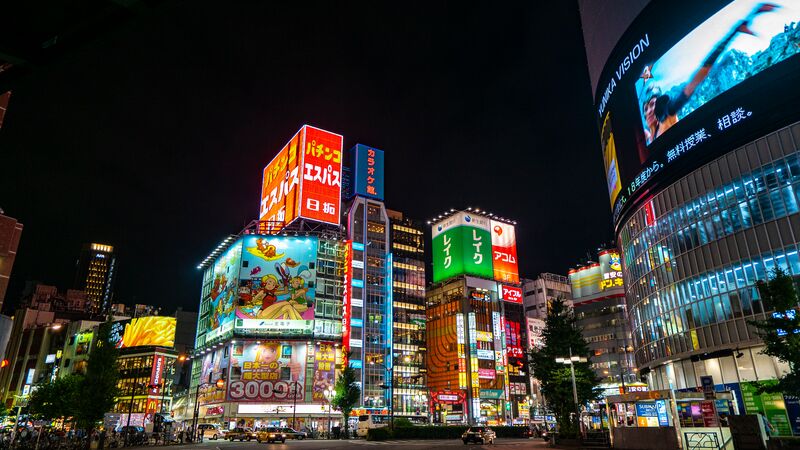
It’s impossible to deny the allure of Japan’s cities – even if you’re more of a nature lover than an urbanite. Tokyo is known as one of the coolest cities in the world with a fusion of futuristic technology and ancient landmarks. Get lost in the neon-lit streets, sip matcha in a quirky café in Harajuku or scramble your way through the famous Shibuya Crossing.
If you’re looking for culture, head to charming Kyoto to discover hundreds of colourful shrines and temples, relax in serene gardens and walk through Gion, Kyoto’s famous Geisha district. To get under the skin of Japan, head to Matsumoto to explore impressive castles, traditional storehouses and amazing soba noodles. History buffs should also go to historic Hiroshima to discover its shrines, peace parks and sizzling food scene.
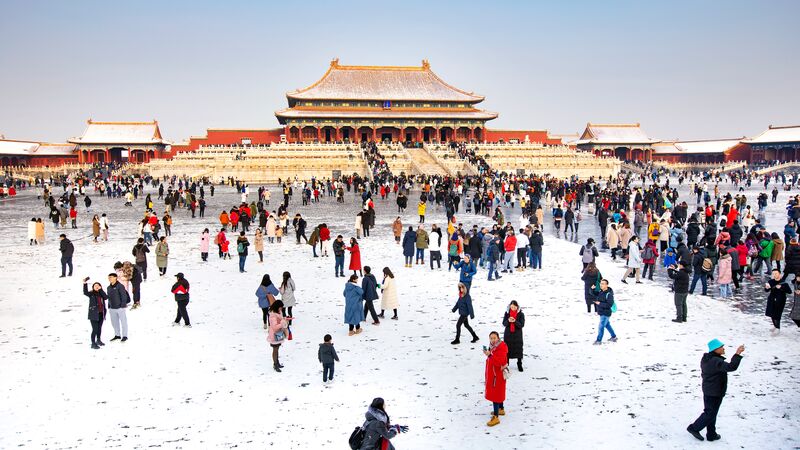
China has some of the oldest and biggest cities in the world. They might be crowded and chaotic, but they’re littered with landmarks that reveal China’s fascinating past. For culture, head to the sprawling capital of Beijing to visit seven UNESCO World Heritage sites, wind through a labyrinth of hidden hutongs, stroll along a section of the Great Wall and watch a dazzling Chinese opera show.
There’s also the frenetic Shanghai with its intriguing blend of cultures and architecture (think art deco buildings and lantern-lit canals hidden among towering skyscrapers). Enjoy the city’s eclectic food scene, see the Tudor mansions of the famous Huaihai Road or take a short train ride to Xitang – a charming water town that was once a hub for 19th-century trade.
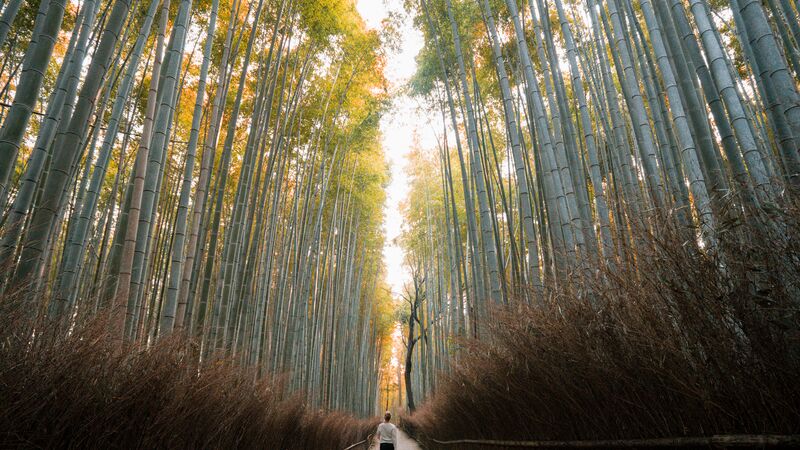
Japan has been blessed by Mother Nature in many ways with a diverse landscape of towering peaks, dense forests and pristine coastline. It’s also home to more than 100 volcanoes, including the majestic Mt. Fuji, due to its location on the Ring of Fire. Even in major cities like Tokyo and Osaka, you’re only ever a short train ride away from a beautiful nature escape.
If you like hiking, tackle one of the many trails of Mount Takao or head to Arashiyama Bamboo Grove in Kyoto to walk among towering bamboo. For water-based pursuits, cruise through the stunning Takachiho Gorge in Miyazaki or soak in Hokkaido’s mineral-rich onsens. It’s also worth visiting Miyajima Island off Hiroshima to meet some of its four-legged residents (spoiler alert: they’re deer).
HIKE, BIKE AND KAYAK THROUGH JAPAN
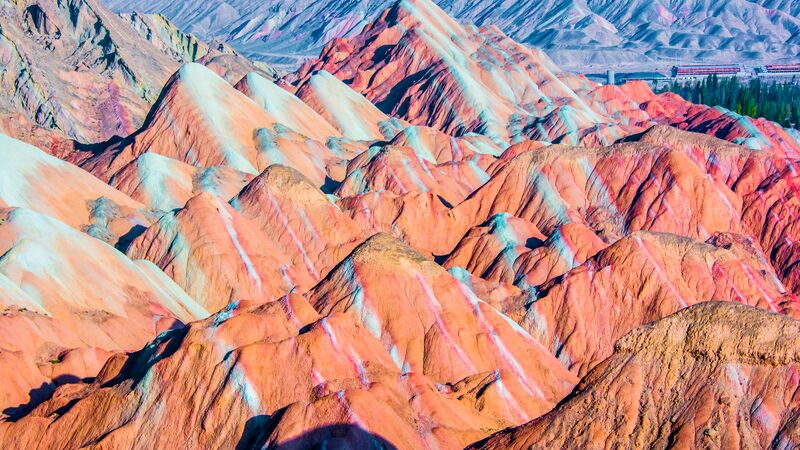
China is the third-largest country in the world and so the landscapes are incredibly diverse. In fact, China is a ‘megadiverse’ country with over 550 species of mammals, 1200 species of birds, 31,000 types of flora and 27,000 species of fungi. From beautiful wetlands to vast plateaus, and sweeping deserts to cascading rice terraces, there are breathtaking scenes to explore in every province.
Make your way to Guilin to admire karst hills from the picture-perfect Li River, witness the remarkable colours of the Rainbow Mountains in Zhangye Geopark, hike to the Golden Summit of Mount Emei to stand above the clouds or discover the floating peaks of Zhangjiajie (you might even recognise this scene from the iconic movie, Avatar ).
RELATED: 6 SURREAL LANDSCAPES TO EXPLORE IN CHINA
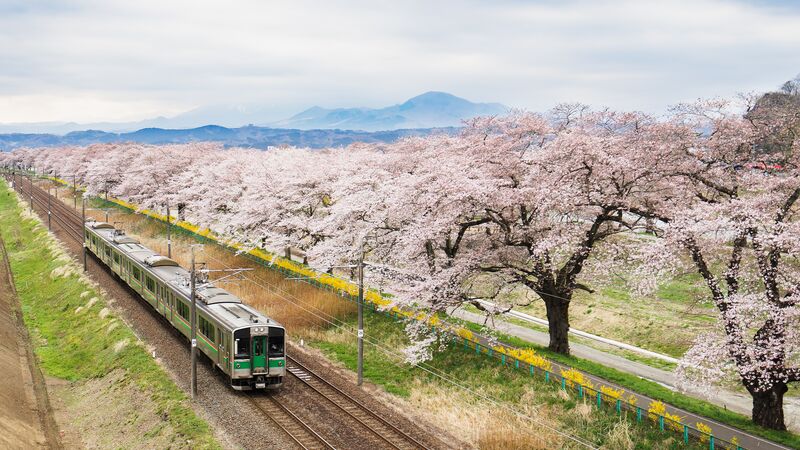
When it comes to weather, Japan has it all. Most regions sit in a temperate climate zone with four distinct seasons. There’s never a ‘bad’ time to travel to Japan, but spring (March to May) is one of the most popular seasons when the stunning cherry blossoms are in full bloom. There’s no sight quite like it!
September to November is also a fabulous time of year when the landscapes turn red, orange and gold with autumn foliage. Winter is mild in places like Osaka and Tokyo which get a light dusting of snow, while northern Japan gets dumped with powder – this means one thing: hit the slopes! Winter is the quietest time of year, but perfect if you want to explore the usually busy streets in solitude. Plus, a piping hot bowl of ramen hits differently when it’s cold outside.
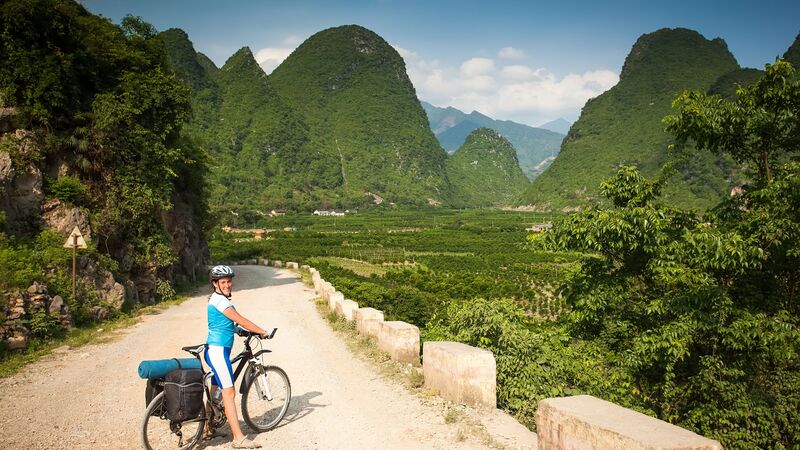
With so many climate zones, the weather varies a lot in China. Depending on when and where you visit, you might experience intense heat and humidity in summer and thick blankets of snow in winter. China’s northern regions have hot, dry summers, while destinations along the eastern coastlines and in the south are more humid. Snow is possible in winter in many regions, but especially in the northern reaches.
Hiking and outdoor activities are best in summer and autumn, though tourism usually peaks between June and August so bear this in mind if you want to dodge the crowds. Winter is the low season, but it’s a fantastic time for cultural festivals with the Harbin Ice and Snow Festival and Chinese New Year. For mild weather and smaller crowds, a shoulder month like October or May might suit.
RELATED: BEST TIME TO VISIT CHINA
The verdict
This one’s a solid draw. Both destinations promise to deliver with delicious food, culture, history and breathtaking landscapes. Japan is smaller than China and so it might be easier to cover more ground and experience more culture in a shorter space of time, but you’re bound to have an unforgettable adventure no matter which country you choose.
Feeling inspired? Check out Intrepid’s small group tours in China and Japan .
Feeling inspired?
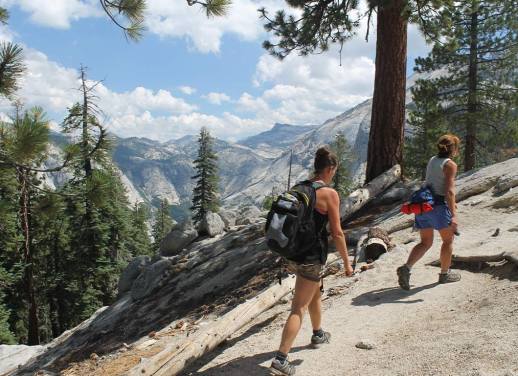
Cliona Elliott
Originally from Jersey (the tiny island in the English Channel), Cliona now lives in Melbourne, Australia. When she's not writing about all things travel for Intrepid, you'll find her chasing flavours, getting lost in local markets or waking up at a ridiculous time to watch the sunrise from the top of a mountain.
You might also like
10 must-see places when you visit georgia, why you should hike in the winter, learn how to leave hack your 2025 canadian..., level up your australian public holidays in 2025, how to make the most of us federal..., make the most of nz’s public holidays in..., top us national parks, how to maximise your annual leave using uk..., 7 incredible hikes in denali national park, unique getaways for your next girls’ trip, how to visit europe in the off-season.
Your browser is outdated
Please upgrade to a more modern version to fully experience JapanToday site and for security reasons
- Real estate

Japan, China, S Korea set 2030 goal of 40 mil cross-border tourists
The requested article has expired, and is no longer available. Any related articles, and user comments are shown below.
Niseko Green Season
No comment login to comment, login to leave a comment, facebook users.
Use your Facebook account to login or register with JapanToday. By doing so, you will also receive an email inviting you to receive our news alerts.
Login with your JapanToday account
Articles, offers & useful resources.
A mix of what's trending on our other sites

Overtourism in Japan and What It Means for Visitors
GaijinPot Blog

The Best 10 Things To Do In Kyoto

The 10 Best Summer Activities in Hokkaido

Japan’s New Entry System for Tourists (JESTA): What You Need to Know

A Beginner’s Guide to Climbing Mount Fuji

Win a 2-Night VIP Stay at The Hilton Niseko Village in Hokkaido

The 10 Best Things To Do in Shinjuku

Understanding Mount Fuji’s New Fees and Rules

The 10 Best Things To Do in Kawagoe

The 10 Best Things To Do in Kobe

See Where Cherry Blossoms Are Blooming Now in Japan on GaijinPot Travel

25 Things to Do in Yokohama
China Travel Restrictions & Travel Advisory (Updated June 17, 2024)
Visa-Free Access to China : If you're from France, Germany, Italy, the Netherlands, Spain, Austria, Belgium, Hungary, Ireland, Luxembourg, Switzerland, Malaysia, New Zealand, Australia, and Poland, you can visit China visa-free for 15 days until December 31st, 2025. If you're from Singapore, you can relish visa-free access to China for up to 30 days.
If your nationality isn't listed above or if you aim to discover China for more than two weeks, we offer a Port Visa Service for just US$100 per person once your tour booking is confirmed with us. No stress of embassy visits and visa interviews.
Content Preview
- What Ways to Enter China
- Do I Still Need a PCR Test to Enter China
- Hong Kong/Macau Travel Restriction
International Flights to China
What to expect when traveling in china, best times to travel to china, 8 ways to enter china: all open now.
Since China has fully permitted visa applications, there are now several ways to enter the country.
If you still hold a valid Chinese visa (any type including a tourist visa, 10-year visa, a port visa, etc.), you can use it to enter China.
If you don't have a Chinese visa or your visa has expired, you can apply for a new one. All visas can now be applied for, including tourist visas, business visas, work visas, and so on. (International visitors can apply for a tourist visa to the Chinese Mainland in Hong Kong.)
For the documents required for a visa application, you can refer to the information given by a Chinese embassy/consulate . Please submit your application at least two months in advance.
To apply for a tourist visa (L visa), you will be asked to provide an invitation letter issued by a Chinese travel agency or individual or round-trip air tickets and hotel bookings.
When booking a private tour with us, we can provide you with an invitation letter, which is one more thing we do to make your travel more convenient, giving you more flexibility with your air tickets and hotel bookings.
Now it is very easy to apply for a visa . You can easily apply by yourself without an intermediary. The following is how one of our clients successfully applied for a Chinese tourist visa:
- First, fill out the form at the China Online Visa Application website ;
- Second, make an appointment on this website to submit your visa materials on Appointment for Visa Application Submission website ;
- Third, take the required documents to the embassy to submit;
- Finally, you will get a return receipt if your documents are qualified.
Usually, you will get your visa after 7 working days. The application fee is about USD185 for US citizens.
Q: What if my passport expires but my visa doesn't?
A: You can travel to China on the expired passport containing valid Chinese visa in combination with the new passport, provided that the identity information (name, date of birth, gender, nationality) on both passport identical.
If there is a change to any of the above details, you must apply for a new visa.
2. 144-Hour Visa-Free Transit Policy
If you do not apply for a Chinese visa, you may still have the opportunity to visit these areas of China visa free: the Shanghai area (including Suzhou, Hangzhou, etc.), the Beijing area (with Tianjin and Hebei), the Guangzhou area (Shenzhen, Zhuhai, etc.), and more. Take advantage of the 6-day visa-free entitlements.
Find out if you could use the 144-hour visa-free transit policy with our information on China's 144-hour Visa-Free Policy (Eligible Entry/Exit Ports, Applicable Countries, Documents to be Prepared...)
You can also obtain entry and exit control policies through the 24-hour hotline of the National Immigration Administration:
- Beijing: 0086 (+86)-10-12367
- Shanghai: 0086 (+86)-21-12367
- Guangzhou: 0086 (+86)-20-12367
Quick Test: Will My Route Qualify for China 72/144-Hour Visa-Free Transit?
1. I will depart from (only applies to direct or connected flight):
2. I will arrive in China at [city], [airport / railway station / port].
3. My arrival date is...
4. I will leave for [country/region] from China (the bounding destination on the air ticket):
5. My departure date is...
6. My nationality is...
8. I have Chinese visa refusal stamps in my passport.
You qualify to enjoy China's 72-hour visa-free policy.
You qualify to enjoy China's 144-hour visa-free policy.
You don't qualify to enjoy China's 72-hour or 144-hour visa-free policy.
Reason you don't qualify:
- You must be in transit to a third country or region.
- You must leave the city area (prefecture or municipality) after the 72/144 hours (the 72/144-hour limit is calculated starting from 00:00 on the day after arrival, i.e. 24:00 on the arrival date).
- Your passport must be valid for more than 3 months at the time of entry into China.
- Your passport nationality is not eligible for the 72/144-hour visa exemption program.
- You have Chinese visa refusal stamps in your passport.
3. Port Visas (Landing Visas)
If you don't have time to get a visa, or if you find it cumbersome to apply for a tourist visa, you could consider traveling to China through a port visa.
Port visas can be applied for a group at least including 2 people. You need to enter the country within 15 days after you get your entry permit. The port visa allows a stay period of 1 to 2 months.
Applicable ports include Beijing, Shanghai, Hangzhou, Guangzhou, Xiamen, Guilin, Xi'an, Chengdu, etc.
Book your China trip with us and we can help you apply for a port visa.
4. Visa Exemption for ASEAN Tour Groups to Guilin
In addition, tour groups from ASEAN member countries, including Malaysia, Thailand, Indonesia, Vietnam, Cambodia, Laos, Singapore, Myanmar, Brunei, and the Philippines, can visit Guilin for 144 hours without visas as long as they meet the visa-free transit policy requirements.
5. Shanghai Visa-Free Policy for Cruise Groups
Shanghai has a 15-day visa-free policy for foreign tourist groups entering China via a cruise. You must arrive and depart on the same cruise and be received by a Chinese travel agent at the Shanghai Cruise Terminal (or Wusong Passenger Center).
6. Hainan Visa-Free Access
No visa is required for staying on Hainan Island for up to 30 days for ordinary passport holders from 59 countries. Groups and individual tourists must book a tour through an accredited travel agency.
Find out whether you qualify for the policy here .
7. Visa Exemption for the Pearl River Delta Area
International travelers from Hong Kong or Macau are able to visit the Pearl River Delta area (Guangzhou, Shenzhen, Zhuhai, etc.) visa-free as long as they go with a registered tour provider, such as us.
8. APEC Cards
If you hold a valid APEC business travel card, you can simply enter China with the card without applying for a visa.
Travelers who hold a valid APEC business travel card can stay in China for up to 60 days.
- 4-Day Beijing Private Tour - Essence of Beijing
- 11-Day Beijing–Xi'an–Guilin–Shanghai Tour - Classic Wonders
- 13-Day Beijing, Xi'an, Chengdu, Shanghai Educational Family Vacation
Do I Still Need a PCR Test or Antigen Self-Test to Enter China
No. Starting from August 30, all travelers entering China will no longer need to undergo any COVID-19 testing. You do not need to submit any test results for COVID-19 before departure.
- 8-Day Beijing–Xi'an–Shanghai Private Tour - China Golden Triangle
- 13-Day Riches of China - Beijing – Xi'an – Guilin/Yangshuo – Hangzhou - Suzhou – Shanghai
Hong Kong / Macau Travel Restriction
Hong kong entry requirements.
Travelers from any region bound for Hong Kong will no longer need to take pre-flight COVID-19 tests (no PCR test, no RAT test) from April 1.
There is also no need for any tests when traveling from Hong Kong to the Chinese Mainland. Hong Kong could be a good gateway for your China trip. See suggestions on China Itineraries from Hong Kong (from 1 Week to 3 Weeks).
Direct high-speed trains from Guangzhou and Shenzhen to Hong Kong are available now. In preparation for the Canton Fair, it is expected that direct high-speed ferries will be launched from Guangzhou Pazhou Port to Hong Kong's airport in mid-April.
- 10 Top China Tours from Hong Kong
Macau Entry Requirement
From August 30, travelers from any region bound for Macau will no longer need to take pre-flight COVID-19 tests (no PCR test, no RAT test).
There is also no need for any tests when traveling from Macau to the Chinese Mainland.
Inbound and outbound international flights in the week beginning March 6th rose by more than 350% compared with a year earlier, to nearly 2,500 flights, according to Chinese flight tracking data from APP Flight Master.
At present, there are one or two direct flights a week from New York to Shanghai, Los Angeles to Beijing, Seattle to Shanghai, London to Guangzhou, etc.
There are also many flight options with stopovers that are more frequent and affordable. Testing at transit airports is now not required!
The Coronavirus outbreak in China has subsided. China looks like it did in 2019 again. No special measures (like PCR tests or health codes) are required when traveling around China. All attractions are open as normal.
Wearing a mask is not mandatory when traveling. In hotels, masks are off for the most part. But in some crowded places, such as airports or subway stations, many people still wear masks.
Weather-wise, the best times to visit China are spring (April–May) and autumn (September–October), when most of the popular places have their most tourism-friendly weather, except for the "golden weeks" — the first week of May and of October — when most attractions are flooded with Chinese tourists.
If you are looking for smaller crowds, favorable prices, and still good weather, you should consider March and April or September.
Tourism in cultural and historical destinations like Beijing, Shanghai, and Xi'an is hardly affected by weather conditions. They are suitable to be visited all year round.
- 11-Day Family Happiness - Beijing–Xi'an–Guilin/Yangshuo-Shanghai
- 13-Day Private Tour: Beijing – Xi'an – Chengdu –Yangtze Cruise – Shanghai - China Essence and Panda Tour
- More Chengdu and Panda tours
Discover real reviews of Highlights Travel Family 's best-rated service across trusted platforms.
Tour China with Us
We've been building our team for over 20 years. Even over the past three years we have continued, serving over 10,000 expats with China tours and getting a lot of praise (see TripAdvisor ).
We are based in China and can show you the characteristics and charm of China from a unique perspective. Just contact us to create your China trip .
Our consultants will listen to and answer your inquiries carefully and prepare the best plan for you.
- 8-Day Beijing–Xi'an–Shanghai Highlights Tour — the classic Golden Triangle
- 11-Day Beijing–Xi'an–Guilin–Shanghai — our top itinerary for families
- 2-Week Beijing – Xi'an – Chengdu – Yangtze Cruise – Shanghai Tour — the best choice for panda fans
Get Inspired with Some Popular Itineraries
More travel ideas and inspiration, sign up to our newsletter.
Be the first to receive exciting updates, exclusive promotions, and valuable travel tips from our team of experts.
Why China Highlights
Where can we take you today.
- Southeast Asia
- Japan, South Korea
- India, Nepal, Bhutan, and Sri lanka
- Central Asia
- Middle East
- African Safari
- Travel Agents
- Loyalty & Referral Program
- Privacy Policy
Address: Building 6, Chuangyi Business Park, 70 Qilidian Road, Guilin, Guangxi, 541004, China
- TRAVEL BLOG
- TravelSites
Japan vs China! Which is best to travel?

Leisure travel to the Asian subcontinent is becoming a much more popular option these days compared to the usual holiday choices like Hawaii or Jamaica. Research studies and statistics show that many travelers are heading east and exploring the lands of Asia. There are many Asian countries to explore and enjoy. Choosing between them can be a big challenge. Many Asian countries share some similarities, yet they all have their own unique lifestyles, cultures, and identities.
For an unforgettable Asian experience, Japan vs China is two terrific countries to visit . They both have a lot to offer, with each one having its advantages. If you’re trying to choose between them, we’re here to help. This guide will look at key aspects of China and Japan travel to help you make the right choice.
Key Takeaways from the article “Leisure Travel: Japan vs China – Which is the Better Country to Visit?” are:
- Rising Popularity of Asian Subcontinent: Leisure travel to the Asian subcontinent is becoming more popular compared to traditional holiday choices like Hawaii or Jamaica. Many travelers are exploring countries in Asia, with an emphasis on Japan and China.
- Diverse Asian Countries: There are many Asian countries with unique lifestyles, cultures, and identities. Choosing between them can be a challenge as they offer both similarities and differences.
- Japan vs China Travel: Japan and China offer unique experiences, and both have their own advantages. The article provides a comparison of various aspects of travel in these two countries to help readers make an informed choice.
- Population and Size: China is the world’s most populous country, with over 1.4 billion people, while Japan has about 125 million people. China is also much larger in terms of physical size.
- Attractions in Japan: Japan is known for its historic temples, modern cities like Tokyo, and diverse landscapes, including beaches and snow-capped mountains. It offers a blend of tradition and modernity.
- Attractions in China: China boasts iconic landmarks such as the Great Wall and the Terracotta Army, along with a rich cultural heritage, diverse regional cuisines, and picturesque landscapes.
- Travel Costs: China tends to be more budget-friendly for travelers , with lower daily travel costs compared to Japan. Accommodation , food, and transportation are generally cheaper in China.
- Accommodation: Accommodation options in China include budget hotels and hostels , with a variety of choices in big cities. Japan offers a mix of traditional and Western-style accommodations, including ryokans and hotels.
- Weather and Best Time to Visit: China’s vastness allows for diverse climates, with warm and sunny regions in the south and cold winters in the northeast. Japan has four distinct seasons, with cherry blossom season in April being popular but crowded.
- Public Transportation: Japan is known for its efficient public transportation , including bullet trains, while China has both conventional and high-speed trains, as well as cheap domestic flights.
- Beautiful Places: Both countries have beautiful natural and cultural sites to explore. Japan offers serene temples, iconic Mount Fuji, and bustling Tokyo. China features water towns, the Huangshan Mountain, and the Great Wall.
- Safety: Both countries are generally safe for travelers, with low tourism-related crime rates. Japan has a lower overall crime rate compared to China.
- Cultural Immersion: Both countries offer unique cultural experiences. China’s vastness provides diverse cultural encounters, while Japan’s smaller size allows for a deeper dive into specific aspects of its culture.
- Festivals: Both countries have vibrant festivals. In Japan, the Gion Matsuri and Sapporo Snow Festival are notable, while China’s Chinese New Year celebrations and Lantern Festival are must-see events.
- Language and Communication: English is spoken in major tourist areas in both countries, but learning basic local phrases can enhance your experience.
- Packing and Cultural Etiquette: Each country has its own customs and traditions to be aware of, such as blowing your nose in public being considered rude in Japan. Packing for weather variations and respecting local customs is important.
- Overall Budget and Value: China tends to offer better value for travelers on a budget, with lower costs for food, accommodation, and activities compared to Japan.
- Choosing Between Japan and China: The decision between Japan and China as a travel destination depends on personal preferences, interests, budget, and the type of experiences you seek.
Remember that the choice between Japan and China ultimately depends on your individual preferences and what kind of travel experience you’re seeking. Both countries offer unique and enriching opportunities for exploration and discovery.
What are some similarities and differences between China vs Japan?
China is the world’s most populous country. It’s home to an astonishing total of over 1.4 billion people. Japan, meanwhile, is home to about 125 million people. China is about 25 times larger than Japan in terms of physical size.
This means that there’s a lot more ground to cover and places to explore in China. But size isn’t everything. Japan might be smaller, but it’s still an extraordinary place. Known as ‘The Land of the Rising Sun’, Japan is home to historic temples and modern cities.
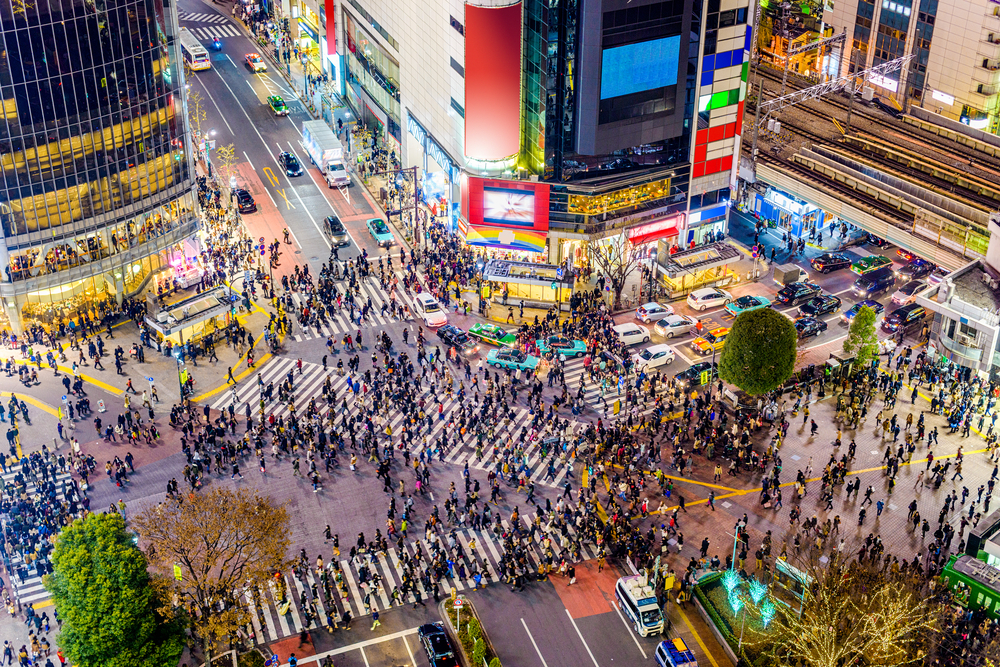
Japan, is home to about 125 million people
Sitting in the Pacific Ocean and made up of several islands, Japan is a rich, varied, vibrant destination. It’s a place where you can feel like you’ve teleported into the future as you explore the streets of Tokyo. The very next day, you can travel back to the past and take a tour of the country’s old shrines and castles.
China is also a place that fuses both the old and the new. It has some of the oldest and most awe-inspiring temples and ancient sites around. Equally, it has lots of modern, almost futuristic cities like Shanghai and Beijing.
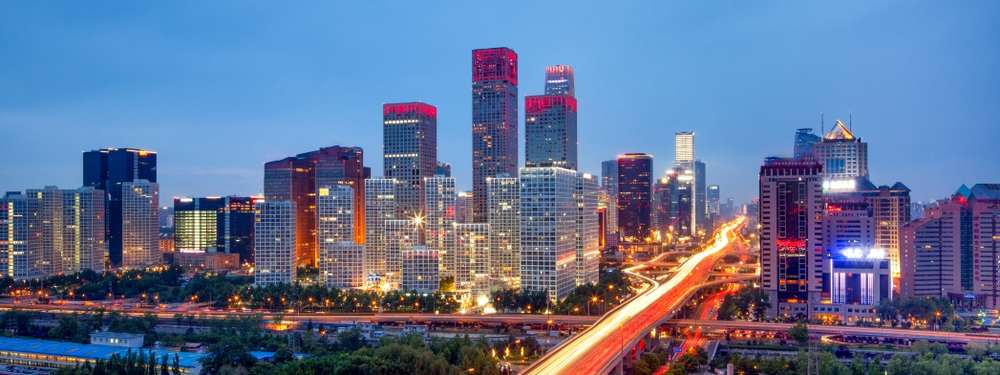
China is the world’s most populous country
Both of these countries share some similarities. They both honor the past and embrace the future. They can both appeal to a wide range of travelers. And they can both make your nomadic vacation dreams come true.
How much would it cost to travel to Japan vs China? Is Japan expensive? Is China expensive?
The first thing many people think about when planning a trip is the budget. For some, money is no object. But for most people, money matters when traveling. Many people need to plan vacations with care to ensure they can afford everything. So how do Japan vs China compare when it comes to costs?
Well, if money is the number one factor for you, China is the best choice. Japan is quite an expensive place to travel to. In fact, general daily travel costs in Japan can be about twice as high as what you would expect to pay in China.
Accommodation is more expensive in Japan, with minimum hotel rates of around $60 per night. In China, you can find a hotel at half that price. Food is also more expensive in Japan on average. However, both countries have a lot of street food vendors offering cheap and tasty treats.
A bottle of water costs almost twice as much in Japan and public transport is more expensive too. All in all, average daily costs in Japan are upwards of $100 per traveler. In China, you can probably spend about $50-60 per day and still have a great time.
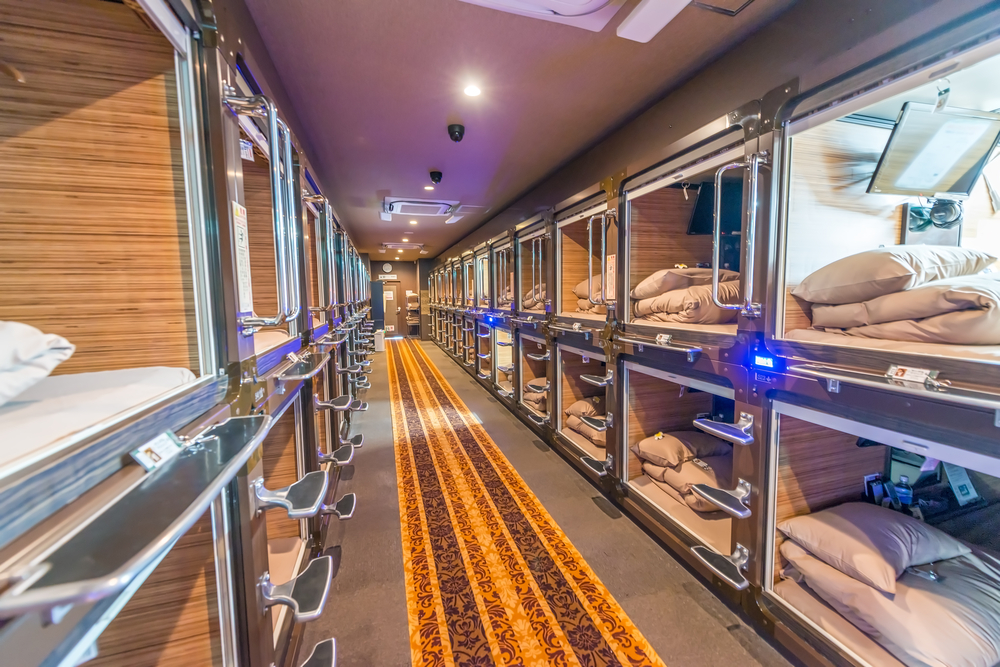
Are hotels nicer in China vs Japan? Are hotels more cost-effective in China?
For starters, China has a lot of basic, budget hotels. These places will typically offer quite small and simple rooms. They usually have Wi-Fi access and basic amenities.We’ve seen that accommodation is cheaper in China. But how do the countries compare in terms of accommodation quality and options?
There are also lots of hostels around China for young travelers or those on a budget. The big cities offer more options in terms of high-end hotels. If you’re visiting the rural regions of China, they often don’t offer a lot of choices.
Japan is more of a ‘westernized’ nation with more options in terms of accommodation. You’ll find a lot of private rentals around big cities like Tokyo. These places allow you to stay in a real local home and enjoy all the usual comforts.
For hotels, there are both Western-style and Japanese, traditional options. Standard Western-style hotels offer great amenities and large rooms for travelers.
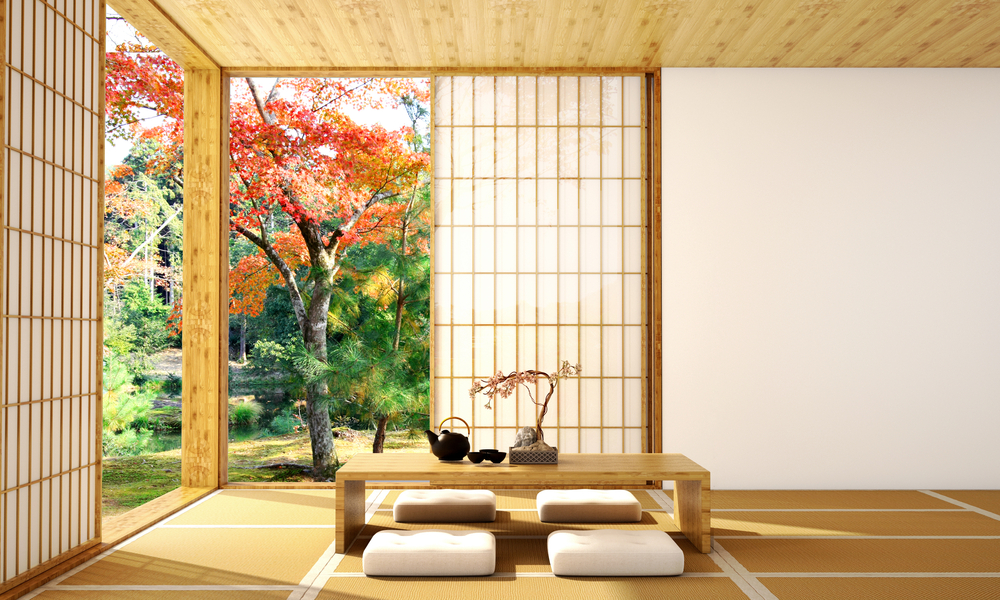
Accommodation is more expensive in Japan
The Japanese options like Ryokan and Minshuku are usually family-run places. They usually provide breakfasts and dinners with your room fee. They also feature typical Japanese elements like sliding doors and tatami flooring.
Japan also has its famous ‘love hotels’ as well as themed hotels. There are also capsule hotels with very small sleeping pods in Japan. You can find a few of these pod hotels in China too. Overall, Japan has more options but higher prices.
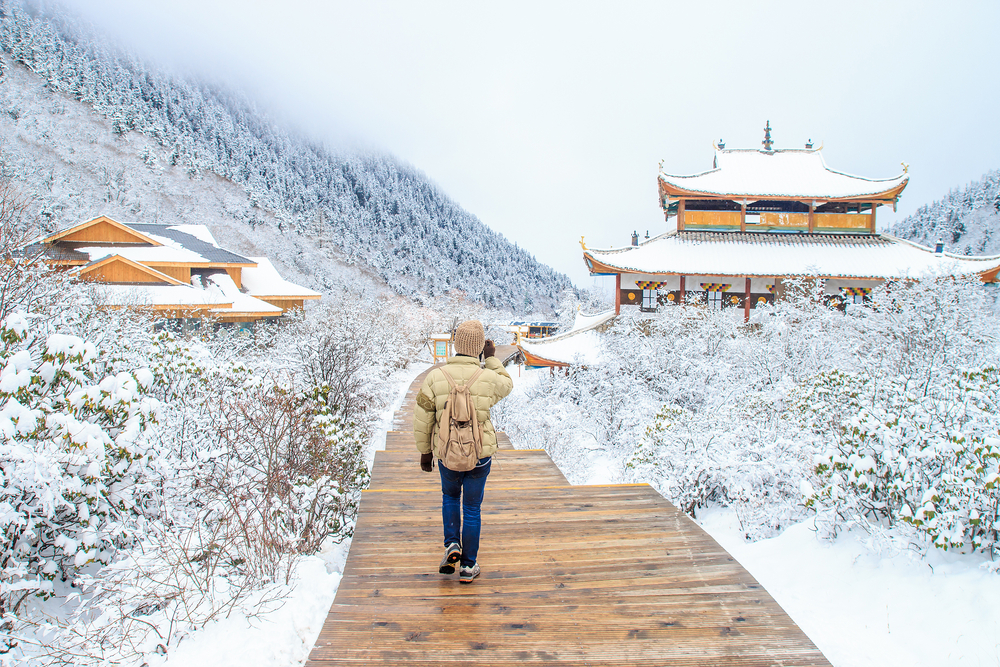
Snow season, China
What’s the weather like in Japan vs China and when is the best time to visit these countries?
Sometimes, we have to plan our vacations at certain periods of the year. This can be due to a variety of reasons like school and work. It can affect the destinations we choose, as the weather conditions can vary a lot throughout the year.
One advantage of China is its size. Since it’s such a large country, you can always find warm and sunny places. Southern China is always sunny, with lots of hot days and summer-style activities. If you prefer cooler weather, the northeastern part of the country has cold, snowy winters.
There are even special winter and ice festivals in the northern regions of China. So, there’s never really a bad time to visit. Plus, with China being so vast, you don’t need to worry about huge crowds of tourists everywhere. You can always find a place that is less busy than the others.
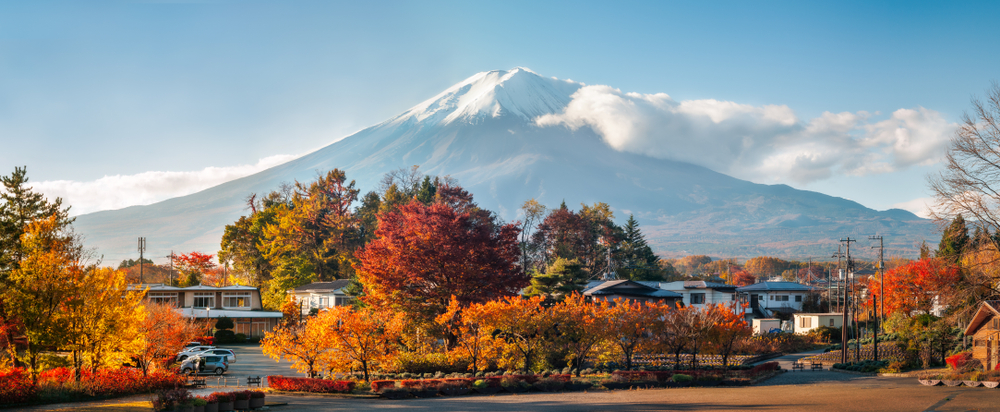
In Japan, it’s a bit of a different story. Japan is much smaller than China and mostly has the same weather all over. It has four distinct seasons like many other countries. In winter, Japan can have a lot of snow and quite cold temperatures.
Springs and falls are quite mild in Japan. Summers can be warm, but not especially hot unless you’re visiting the southern parts. Many people flock to Japan during the ‘shoulder months’ on either side of the summer-like April, May, September, and October.
April is very popular in Japan. This is when ‘cherry blossom season’ occurs in which Japan’s famous cherry trees blossom beautifully with lots of pink petals. This is a great time to visit, but it’s very busy. If you want to avoid the crowds and still get mild temperatures, May and early fall are the best moments.
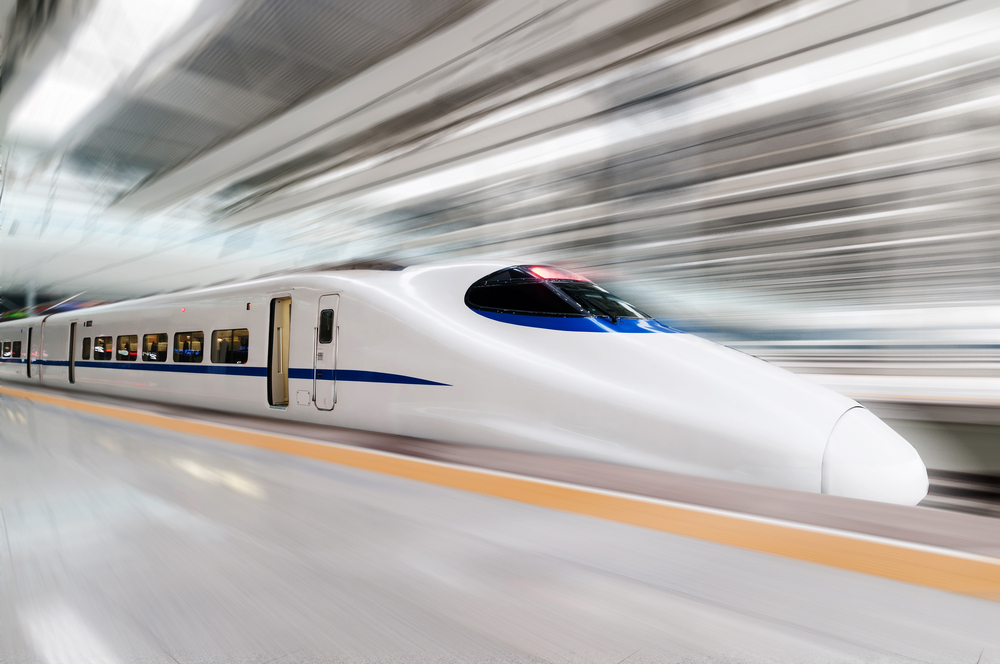
Japan leads the world in its public transport
What’s the best way to get around when visiting China or Japan? How good is public transportation in each country?
Japan leads the world in its public transport. The nation is famous for its ‘bullet trains‘. These trains are the fastest in the world. They move at incredible speed and they’re always on time. This makes getting around Japan very simple. You can travel between cities and even hop around the different islands with ease.
In cities like Tokyo, the metro systems also make it easy to get around. You need to be careful on the streets, however. Jay-walking is often punished and the streets can be super busy. The rules are strict and there are even special agents to push people into trains during rush hour periods. This means that getting around Japan is easy but can be quite stressful.
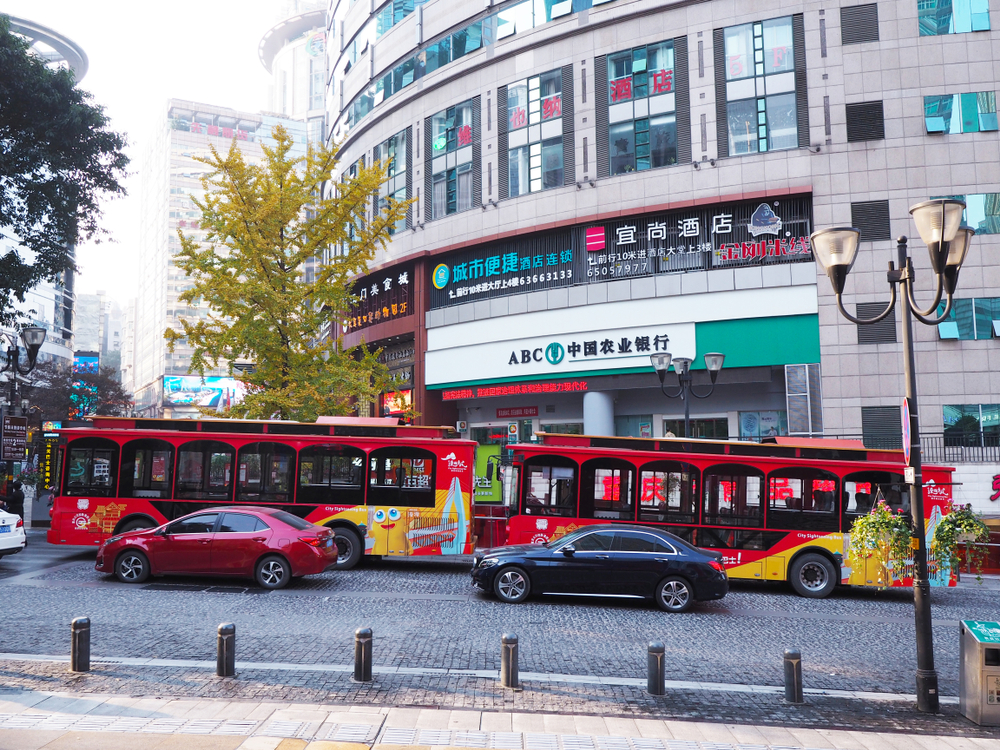
China public transport
In China, things are much more relaxed. Since the country is a lot bigger, journey times are longer. You might not be able to hop around and see all the cities you want to see during just a one or two-week trip. However, if you do choose to travel, the trains are reliable. They’re quite old and conventional, lacking the modern amenities of modern alternatives.
There are, however, new Chinese bullet trains that are helping to speed up transport across the nation. You can also find cheap domestic flights between big cities around China too. Also, the rules for walking around are more relaxed. You won’t get stopped or punished for jay-walking in China. People move more freely and casually around the cities. This helps to provide a more laid-back pace of life.
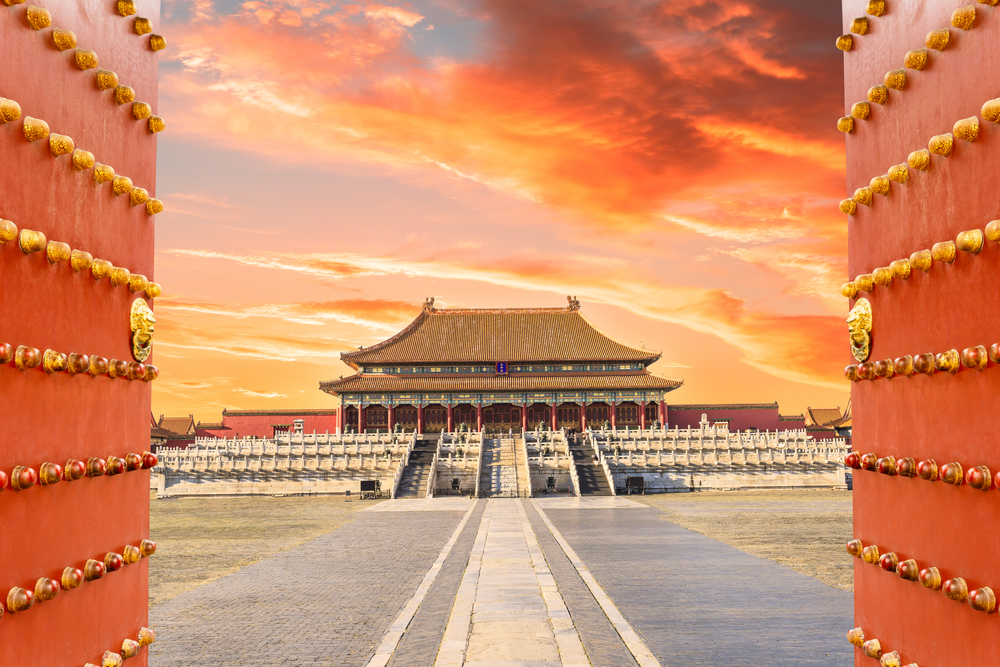
Forbidden City in Beijing, China
What are the most beautiful places in Japan vs China (other than the obvious Beijing or Tokyo)?
China and Japan have unique features and experiences to offer their visitors but both are equally as beautiful a destination as one might expect.
For a small nation, Japan has some strikingly diverse landscapes ranging from golden-sand beaches lined with palm trees to snow-capped mountains that tower high into the sky. If you’re looking to spend your time in a picturesque village that transports you to another era, then Hida-Takayama or “Little Tokyo” as it is lovingly called, is the place for you. Oozing with old-fashioned Japanese charm, this mountainside destination houses a historic district lined with traditional-style wooden buildings. You can walk through the riverside market located on the foothills of the mountainside or relax with some sake in a classic Japanese-style inn. If you’d like to spend time outdoors but away from the hustle and bustle of the city, then head to the rolling forest landscape of Kamakura . Less than an hour’s drive away from Tokyo, Kamakura has everything you need for a quick getaway. You can spend your time there relaxing on sandy beaches, wandering through old wooden homes filled with charm, or taking in all of the centuries-old Buddhist temples and historical shrines and museums scattered around the city. Other not-so-obvious places of interest that are worth exploring in Japan are the lavender fields of Furano, the active volcano in Kagoshima, and the hot springs of Hakone.
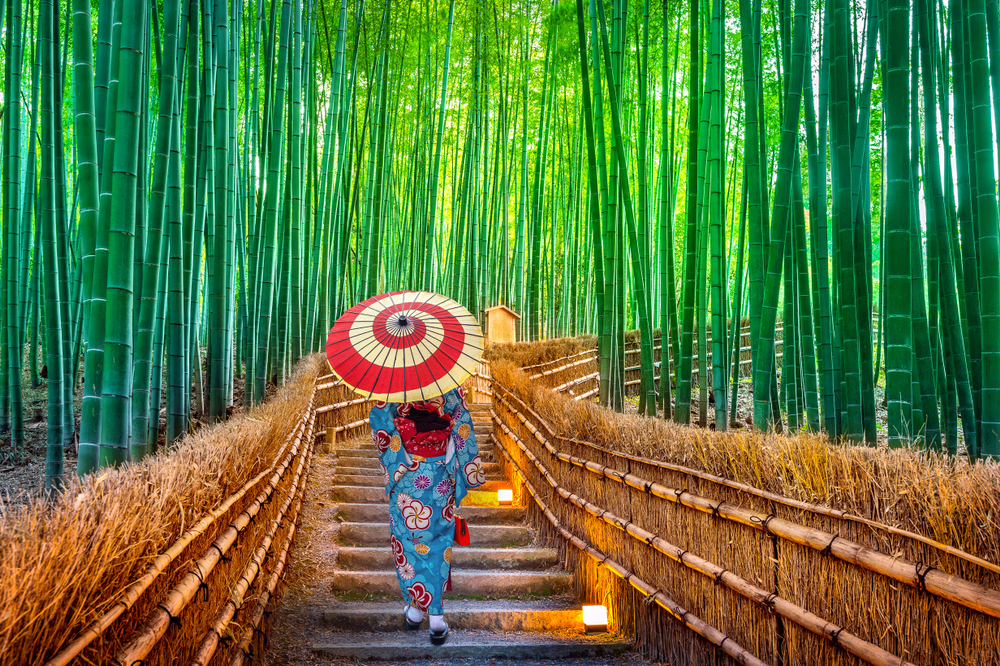
Arashiyama forest
China is about 25 times bigger than Japan, meaning there is much more land to explore. Each corner of the land is different and diverse and offers so much variety for tourists. Zhouzhuang is a beautiful water town that is often considered the “Venice of the East”. The 900-year-old town is filled with pretty waterways and charming stone bridges and let’s not forget historic attractions like Zhang Ting – a sprawling residence dating back to the Ming Dynasty with over 70 rooms and 6 courtyards. Afterward, spend your holidays in the mist-shrouded foothills of the Huangshan Mountain in the ancient Anhui village of Hongcun . You might recognize your surroundings from the famous Hollywood movie, Crouching Tiger , Hidden Dragon . Much of the village is recognized on the list of UNESCO World Heritage Sites; check out some of the finest examples of architecture dating back to the Ming and Qing Dynasty or take in the ornate stone and wood carvings at the Chengzi Hall Museum. Other places of interest in China to keep in mind include the Three Pagodas of Chongsheng Temple in Dali, the breathtaking coastline views of Gulangyu Island, and the idyllic town of Tongli.
Is China safer than Japan or vice versa?
China vs Japan is generally both very safe countries to visit and have never been recognized otherwise such as places like Brazil or Columbia. The chances of a traveler coming across any issues are extremely low and you’ll most likely enjoy your entire vacation without a single incident. Though tourism-related crime is very low in both countries, it is important to note that Japan also has a much lower crime rate in general and is safer overall.
Staying safe while traveling should be your number one priority and both China and Japan have proven to be amazing destinations of choice. While visiting either of these countries you don’t have to worry about your things being stolen, your hotel room being broken into, or anything drastic like being mugged or robbed. Travelers have also shared how safe they feel walking alone in both the daytime and at night in several research studies.

Great Wall of China
Are there more fun things to do in Japan vs China? What are the best attractions in China and Japan?
So, what can you actually do in China vs Japan? The activities and attractions of these two Asian culture countries are very unique and special. China is home to one of the most iconic landmarks in the world: The Great Wall of China. A long, historic, incredible wall, the Great Wall is an amazing place to visit.
There are lots of temples and historic hotspots in China. The country has a lot of appeal for history buffs and culture lovers. You can check out the Forbidden City, Emperor Qinshihuang’s Mausoleum, the Temple of Heaven, and Tiananmen Square. So, what can you actually do in China vs Japan? The activities and attractions of these two countries are very unique and special. China is home to one of the most iconic landmarks in the world: The Great Wall of China. A long, historic, incredible wall, the Great Wall is an amazing place to visit.
You can also explore beautiful natural spaces like Jiuzhai Valley National Park and the Tiger Leaping Gorge. There are also some vibrant inner-city areas like Nanjing Road in Shanghai or Wangfujing in Beijing.
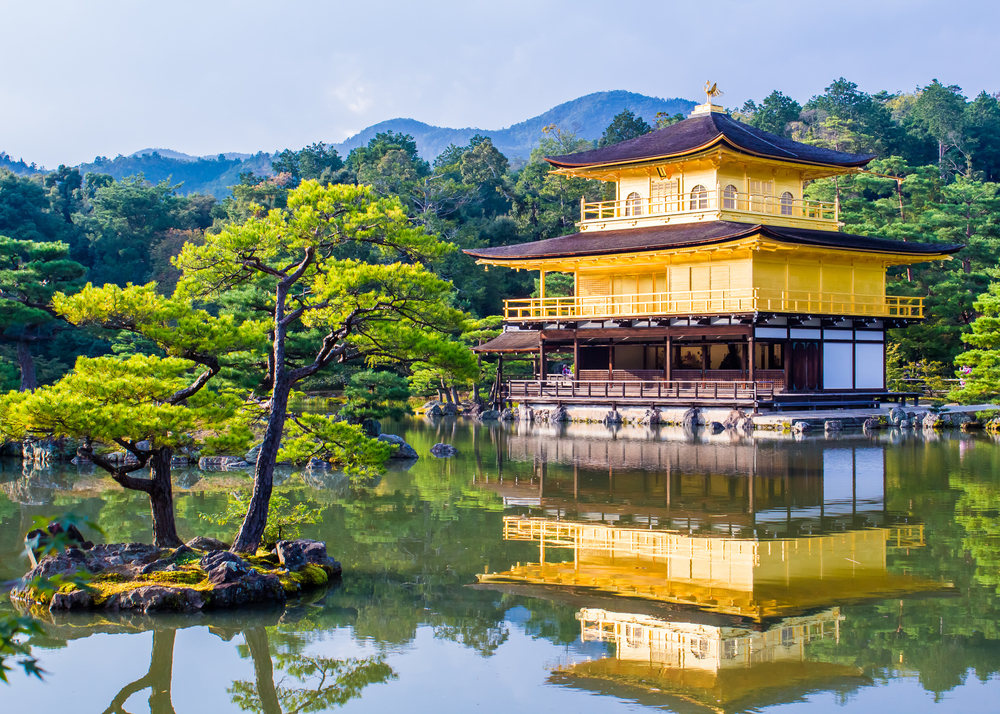
Kinkaku-Ji, Buddhist, Temple In Kyoto
Japan also has a lot of historic and traditional sites. Examples include the Fushimi Inari Taisha Shinto shrine and the Kiyomizu-dera temple. The Senso-ji temple is another popular site and Osaka Castle is a must-visit location.
Japan also has a lot of beautiful natural areas. Arashiyama forest is very famous for its monkeys and bamboo shoots. Travelers can visit Mount Fuji, snapping photos from afar or actually hike up the mountain with their friends.
The big city of Tokyo can almost be considered an attraction too. It’s a city like no other. It has its own Disneyland, entire neighborhoods dedicated to arcade games and anime, theme restaurants, and much more. You can visit old shrines one moment and modern skyscrapers the next.
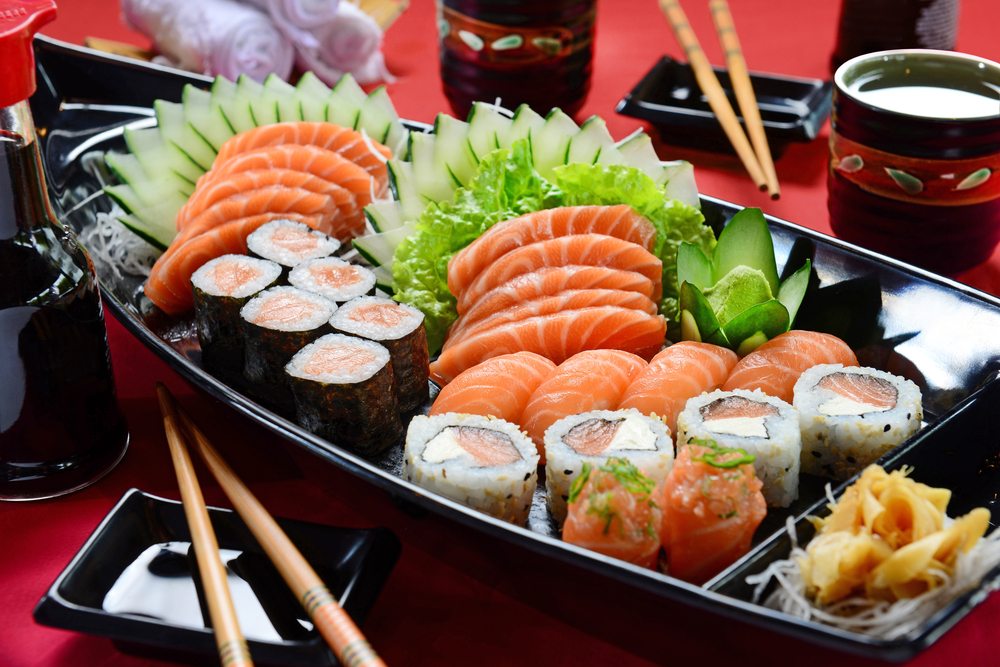
japanese food
What are the traditional foods and drinks you must try when in China vs Japan?
Many people travel to enjoy new foods and drinks. It can be thrilling to visit a different country and enjoy brand new flavors. It’s always exciting to try local delicacies and traditional dishes too. So how do the cuisines and culinary styles of Japan vs China stack up?
Well, we’ve already mentioned that food is cheaper in China. It’s also probably a little less healthy overall. A lot of Chinese dishes are prepared in woks and fried. They often involve a lot of oils and sauces. You’ll find almost everything served with noodles and rice in China.
Many people are familiar with Chinese foods in their own countries, so you can find dishes you know while exploring China. The quality can vary greatly, depending on where you dine. Out in the rural areas, you might discover local restaurants and unique traditional delicacies. The big cities have major fast food chains and restaurants of different styles. It’s not too hard to find amazing food in China.
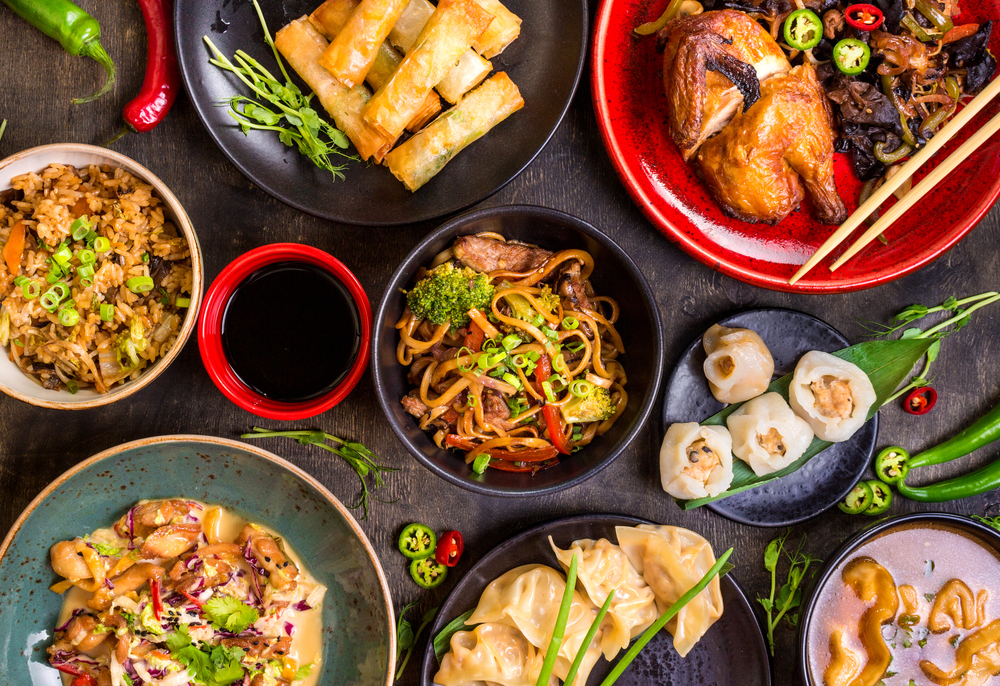
chinese food
The same can be said for Japan as well. Japanese cuisine involves less reliance on sauces and oils. Many foods are actually served raw in Japan. There’s a big focus on seafood. You’ll find lots of sushi and fish dishes in typical Japanese restaurants. Japanese chefs use special flat pans called teppans that allow them to grill food on the outside and keep it raw in the center.
This technique can create some really unique flavors. However, if you’re picky about food and don’t like eating things raw, you might not like Japanese cuisine so much. Fortunately, big cities like Tokyo have all kinds of restaurants offering Italian, French, American, Korean, and other styles of cuisine too.
What should I pack when going to China or Japan?
Other than the usual things you’d pack whilst traveling, there are some specific things to take to China vs Japan that will prove to be useful during your trip. One thing to remember while packing your clothes though is that washing machines are very common in China and Japan but dryers are harder to come by. Unless you’re staying at a place with full laundry facilities, you’ll want to pack clothes that air dry quickly. Also, if you’re going to China, you might want to keep in mind exactly where you’re going in the country. Because China is so large and expansive, you may come across freezing cold snowstorms and hot desert landscapes all in one 10-day-long holiday. There is a drastic difference in sizes compared to the United States and in China or Japan so pack everything you need clothes-wise; a medium in ladies’ clothes is probably a large or extra-large at shopping malls there.
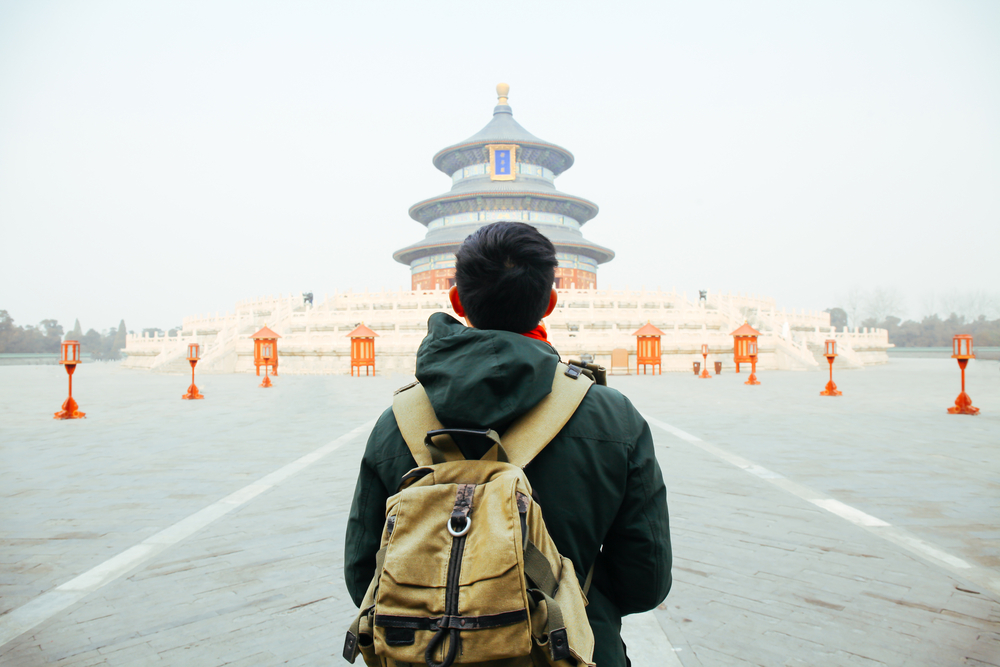
Major metropolises like Beijing or Tokyo are very westernized and fashionable when it comes to what you’d feel comfortable wearing in public. Though you will likely not be questioned no matter what you wear throughout the country, you may want to keep in mind that many distant villages are more modest in their clothing. This is especially true if you plan on visiting any religious historic sites or temples during your visit so you may want to make sure you have a long skirt wrap, pants, or a shawl to cover any bare shoulders while there. You may also want to pack warm pajamas since central heat won’t be found in many places.
Other general things to pack when visiting Japan vs China include a convertible charger, personal toiletries, and any medicines you need on a regular basis.
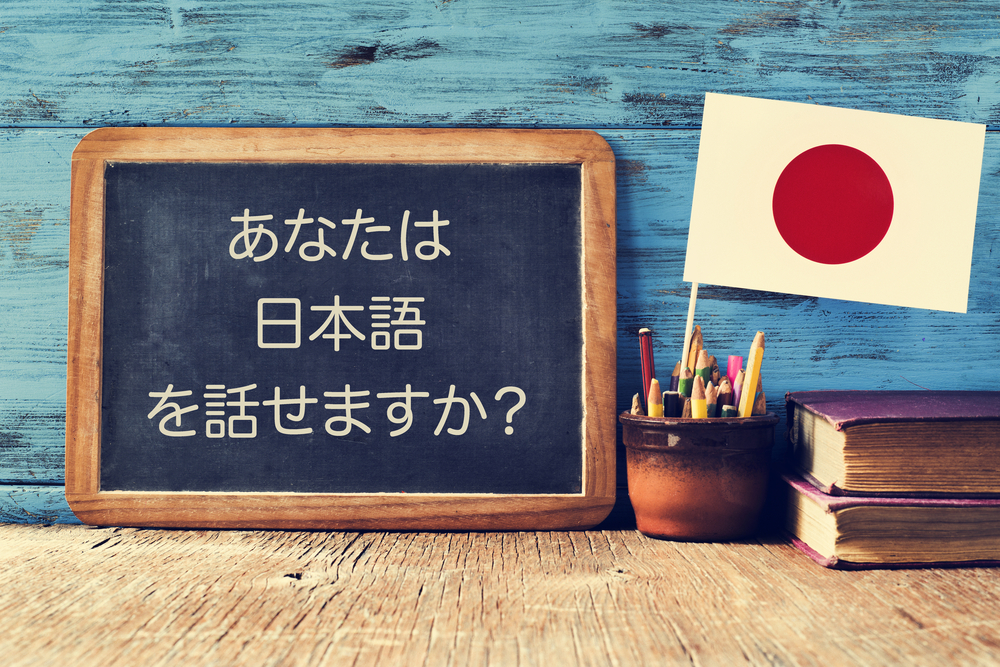
What languages will I come across in Japan vs China?
When in major cities, you will most likely be able to communicate with store vendors and others that you come across in English. Both countries have a strong focus on education and you’ll find that most people can speak English perfectly. That being said, it’s best to remember that you are the foreigner on their land and that you should respect whatever language locals choose to communicate in. In China, the official language is Mandarin and more than 70% of the population speak it. There are other major dialects you may come across like Hunanese, Cantonese, the Hakka dialect, or the Wu dialect.
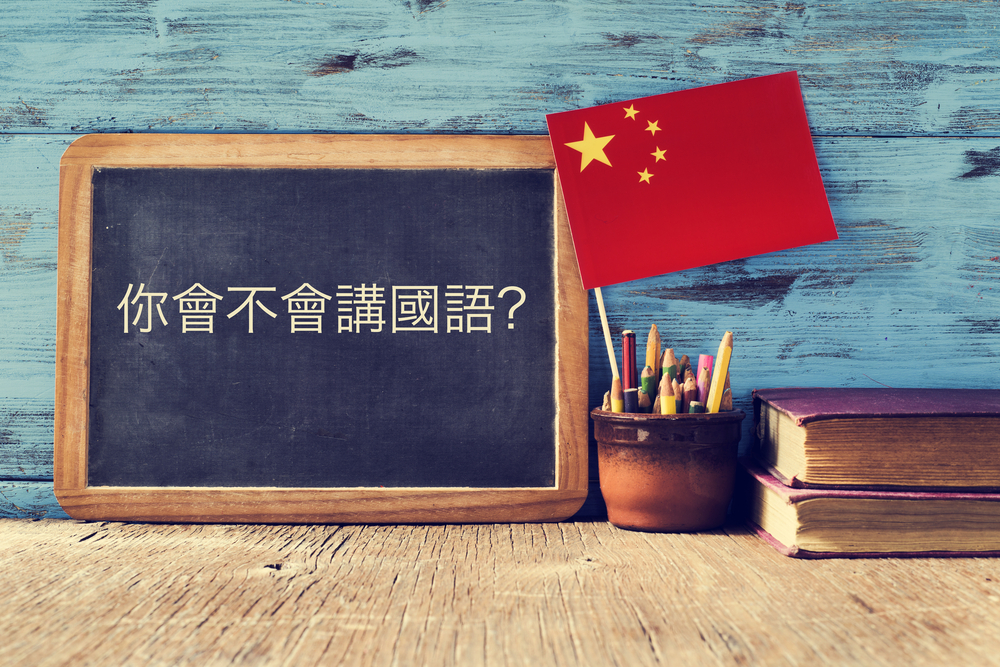
Japanese is the widely spoken language throughout Japan though there are many different dialects throughout; the dialect spoken in Tokyo is considered standard Japanese. You may also come across 14 different Ryukyuan languages spoken in Okinawa and neighboring Ryukyu islands.
Keep in mind that internet usage is restricted in both countries and that you may want to download a translator app before your travels to help you communicate what you need. You can use one of these many language learning apps that have been tried and tested by fellow travelers.
What unique customs should I be aware of while in China vs Japan?
There are certain Japanese vs Chinese customs that might shock foreigners but are considered the norm in that part of the world. It’s always best to know what you’re walking into before deciding which country you want to travel to.

Japan it’s considered rude to blow your nose in public
For example, in Japan it’s considered rude to blow your nose in public – so if you’re usually a little sniffly, you may want to opt for China instead. You may also notice that you don’t come across the number 4 a lot. Many hotels don’t have a room number 4 or restaurants don’t have a table number 4. This is because many Japanese are highly superstitious and believe that the number four is bad luck – similar to how we view the number 13 in the United States. Speaking of restaurants, the Japanese believe that it is preposterous to pour your own drink – you just have to hope that the person or people you’re with (or the waiter or waitress) notice that your glass is empty and pour it for you.
There are some Chinese customs you’re sure to come across during your travels that will surprise you as well. For example, don’t be appalled when other diners let out a huge burp after a hearty meal – it’s considered a sign of gratitude and appreciation for the food that was served. While in a restaurant in China, know that it is inappropriate to place your chopsticks upright in a bowl of rice; similarly, don’t wave them around when making hand gestures. While tipping is common in major cities, it is considered impolite and offensive in other parts of the country.
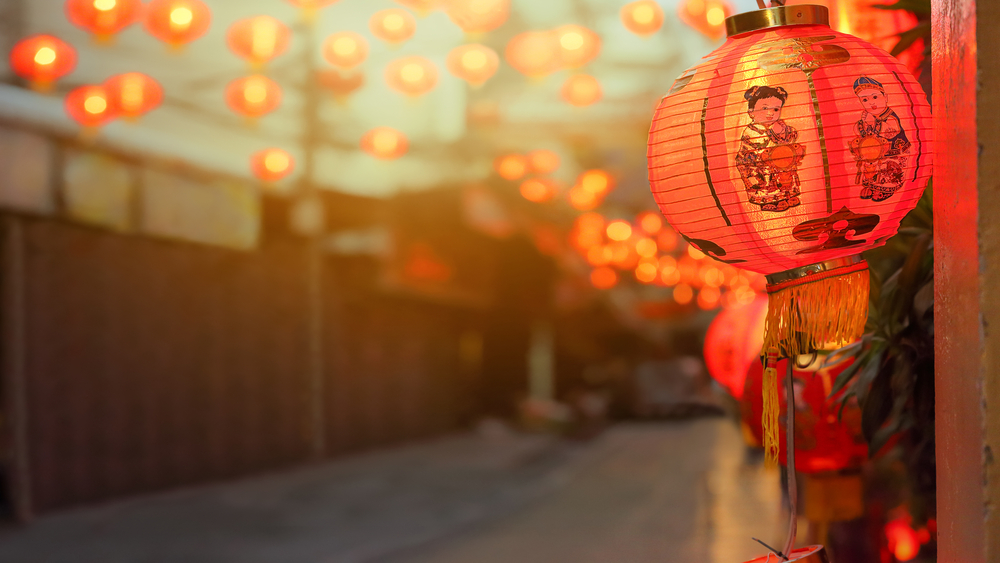
Which Japanese festivals should you attend? Which Chinese festivals are the most fun?
China and Japan are full of so much culture and tradition and being a part of it is an experience that visitors cherish for the rest of their lives. If none of the other aspects are deal breakers when choosing either one or the other, you may want to pick whether to visit China or Japan based on what festivities are occurring at the time.
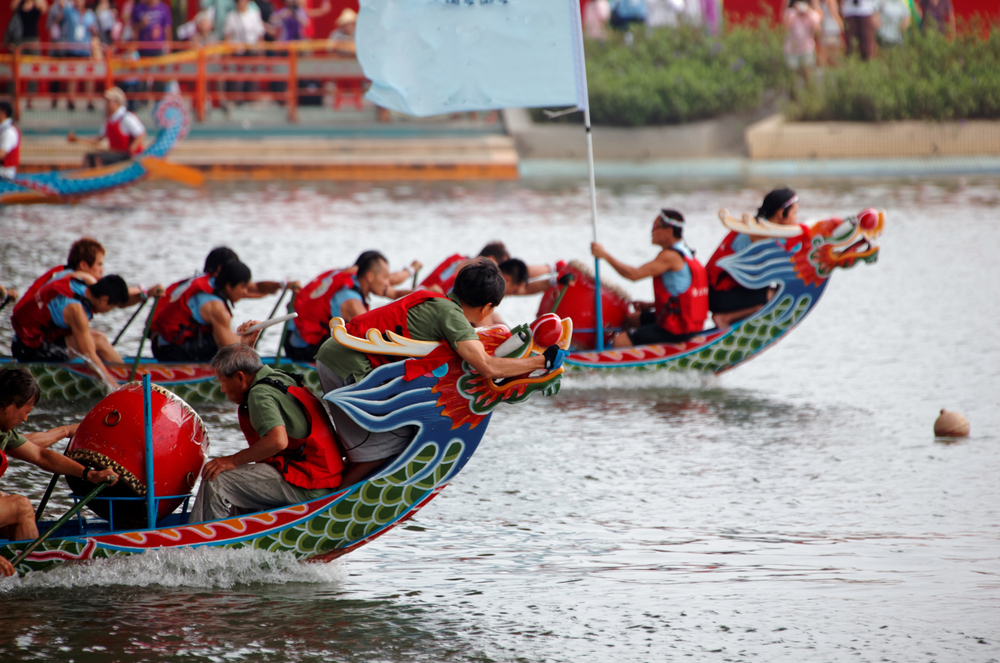
Dragon Boat Festival
In Japan you’ll want to attend the Gion Matsuri in July; the festival is considered the mother of all Japanese festivals and lasts the entire month. You’ll see float processions, parades in costume, and much more. Another Japanese festival you won’t want to miss is Yuki Matsuri, which is also known as the Sapporo Snow Festival and happens for an entire week in either January or February. There’s tons of cultural shows and concerts and an intricate snow and ice sculpture competition that attracts over two million visitors each year.
Whilst in China it’s the annual Chinese New Year celebrations that you’re not going to want to miss. It lasts around 15 days and has many activities like detailed fireworks displays, dragon dances, dumpling workshops and stands, and so much more. The Lantern Festival is traditionally held on the last day of the New Year and is something you’re going to want to schedule your travel decisions around.
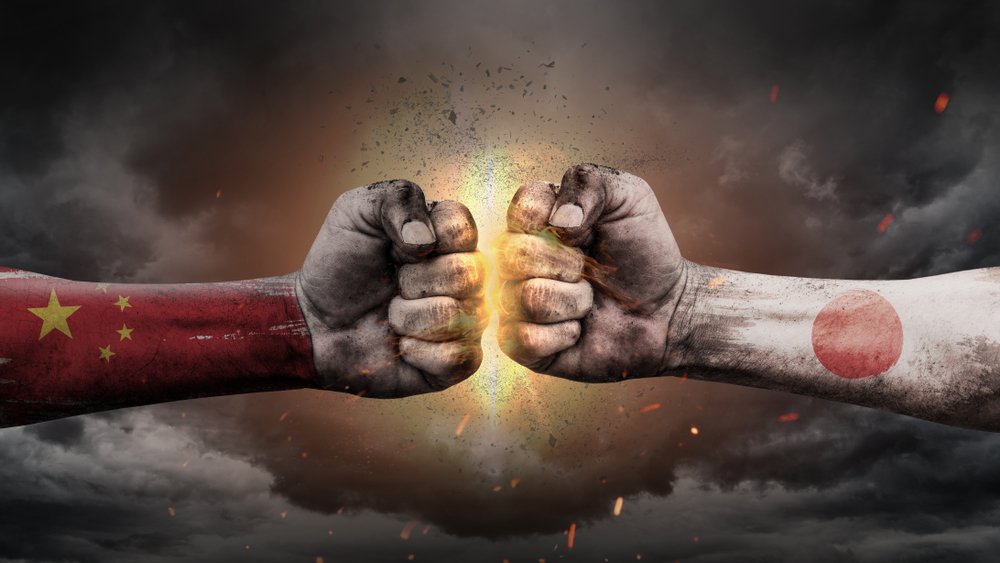
Final Verdict of China vs Japan – Is China or Japan the better country to visit?
Ultimately, both Japan vs China are amazing vacation destinations and travel sites . The right choice for you depends on your personal preferences and tastes. Your budget is also another big factor to consider. If you want to get the best value from your trip and make every dollar count, China is the best choice. Food, accommodation, travel, and activities are all cheaper in China.
China also has some truly iconic landmarks and monuments like its Great Wall. However, Japan has the thrilling metropolis of Tokyo and dozens of ancient temples too. The quality of life is also better overall in Japan. Many Westerners enjoy the high standards of public transport and dining in places like Tokyo and Kyoto.
China has the advantage of its size and weather. You can visit at almost any time of the year and have a terrific time. Japan is also enjoyable throughout the year, but tourists will need to cope with cooler weather and snow in winter. In the end, the choice is yours. Whichever country you choose, you can make a lot of happy memories there.
If you like this and you have some suggestions and advice on posts about Japan vs China let us comment below. 🙏
Short FAQ: Japan vs. China – Choosing the Best Travel Destination
- Japan or China – Which is a better travel destination?
Both Japan and China offer unique experiences, catering to different preferences. Your choice depends on what you’re seeking in a travel adventure.
- What makes Japan a great travel destination?
Japan boasts a rich cultural heritage, stunning landscapes, advanced technology, and a blend of old and new. From serene temples to bustling city life, it’s a perfect mix of tradition and modernity.
- What does China offer as a travel destination?
China is a vast country with diverse cultures, historical sites like the Great Wall and Terracotta Army, delicious cuisine, and picturesque landscapes, including the Yangtze River and the karst mountains of Guilin.
- Which country is more culturally immersive?
Both Japan and China offer unique cultural experiences, but China’s vastness lends itself to diverse cultural encounters, while Japan’s smaller size allows for a deeper dive into specific aspects of its culture.
- What are the must-see attractions in Japan?
Don’t miss Kyoto’s temples, Tokyo’s neon-lit streets, Mount Fuji’s iconic beauty, and Hiroshima’s Peace Memorial Park for historical significance.
- What are the iconic attractions in China?
The Great Wall, Forbidden City, Terracotta Army, Li River, and the vibrant city of Shanghai are some of China’s top attractions.
- Is safety a concern in either country?
Both Japan and China are generally safe for travelers. However, travelers should still exercise common sense and be aware of local customs and regulations.
- Which country is more suitable for food enthusiasts?
Both countries have rich culinary traditions. Japan is known for sushi, ramen, and delicate flavors, while China offers a vast array of regional cuisines, including Sichuan, Cantonese, and Peking duck.
- How accessible are these destinations for English speakers?
In major tourist areas, you’ll find English signage and some locals who speak English in both Japan and China. Learning a few basic phrases can enhance your experience in either country.
- What’s the best time to visit Japan and China?
Spring (March to May) and autumn (September to November) are generally pleasant times to visit both countries, with milder weather and colorful scenery.
- Can I experience traditional culture in modern settings?
Absolutely. Japan’s ryokans and tea ceremonies and China’s preserved ancient towns like Pingyao offer authentic cultural experiences amidst modern surroundings.
- How do transportation options compare between the two countries?
Both countries have efficient public transportation systems, including high-speed trains. Japan’s rail network is known for punctuality, while China’s extensive rail system connects major cities.
- Which destination offers more natural beauty?
Japan boasts cherry blossoms, hot springs, and lush gardens, while China’s diverse landscapes encompass deserts, mountains, and rivers.
- Are there hidden gems in both countries that are less touristy?
Yes, for example, Japan’s Tohoku region and China’s Yunnan province offer off-the-beaten-path experiences with stunning landscapes and authentic culture.
- What’s the overall budget range for trips to Japan and China?
Costs vary based on factors like travel style , duration, and location. Japan can be slightly more expensive due to its higher cost of living.
Remember, the “best” destination depends on your interests, preferences, and the experiences you seek. Both Japan and China offer remarkable journeys; your choice should be based on what resonates most with you!
And we suggest you read a very interesting comparison between two rival countries: Turkey vs. Greece: Which is best to travel?
Interesting infographic about Japan vs China:

Cancel reply
- KSAT Insider
- KSAT Connect
- Entertainment
Chinese aircraft carrier comes closer than ever to Japan
Mari Yamaguchi
Associated Press
TOKYO – A Chinese aircraft carrier entered an area near Japan’s shores for the first time on Wednesday, leading Tokyo to convey its “serious concerns” to Beijing over China’s increasingly assertive military actions around Japan , officials said.
The Chinese carrier Liaoning, accompanied by two destroyers, sailed between Japan’s westernmost island of Yonaguni and nearby Iriomote, entering the country's co-called “contiguous zone,” the Defense Ministry said. That's an area of sea beyond a country's territorial waters in which it can still exercise some control over maritime traffic, reaching up to 24 nautical miles offshore.
Recommended Videos
The Liaoning's transit was part of a fleet movement Tuesday and Wednesday, during which Chinese warships also passed off the western coast of the disputed Japanese-controlled islets it calls the Senkakus, the ministry said. China claims the same islets, calling them the Diaoyus.
Japan’s Deputy Chief Cabinet Secretary Hiroshi Moriya told reporters that “the latest incident is absolutely unacceptable from the perspective of the national and regional security.”
Last month, Japan said that a Chinese Y-9 reconnaissance airplane violated Japanese airspace . Days later, a Chinese survey ship breached the Japanese territorial water just off the southern prefecture of Kagoshima.
Moriya said the Japanese government expressed “our serious concerns” to China through diplomatic channels on Wednesday.
“China has increasingly expanded and intensified military activities around Japan in recent years,” Moriya said. “We will continue to closely watch Chinese warships’ activity around Japan and the regional waters while ensuring information gathering and vigilance.”
In Beijing, Chinese Foreign Ministry spokesperson Lin Jian defended the activity of his country's warships, saying it “complies with China’s domestic laws and international laws.”
Tokyo had reinforced defenses in southwestern Japan, including remote islands that are considered key to Japan’s defense strategy in the region.
The Soviet-built Liaoning underwent extensive refurbishing before being commissioned in 2012 as China's first aircraft carrier. The country now has two more aircraft carriers, including one fully designed and built in China.
Copyright 2024 The Associated Press. All rights reserved. This material may not be published, broadcast, rewritten or redistributed without permission.

19-Day Japan, China, Singapore and Bali
This trip takes you to the core of Asian cultures in Tokyo and Kyoto in Japan, Beijing and Xi'an in China, plus a flamboyant outlook at Singapore before you kick back on the beach of Bali. Encounter with beautiful Geisha ladies and cute pandas, sample authentic sushi and hotpot, no need to think twice, just get under the spell of the real Asia!
- Best For: First-timers
- Departure date: up to you
- Sample Price: from US$ 8,299 each (2 per room); 4-6 persons, save US$ 600 each!
Discover real reviews of Highlights Travel Family 's best-rated service across trusted platforms.
Tour Highlights
Walk in shibuya just as what scarlett johansson did in her movie., ride on the romance car to visit mt. fuji and shinkansen to kyoto ., delicate japanese dinner with beautiful geisha ladies in kyoto., learn the hidden stories of the forbidden city and scale the great wall with your footsteps., sip tea at a local teahouse and meet pandas before you all sweat up with a hotpot in chengdu., go on a food hunt at chinatown of singapore with a local insider., enjoy the tranquillity of nusa dua beach of bali., journey route, suggested itinerary.
No matter when you come and how many times you've seen Japan, it is always hard to resist from its charms. Make your arrival in Tokyo today and you will be escorted to your hotel in a private car.
Entry flight and jetlag:
Tokyo has two international airports, Narita (about one hour from downtown Tokyo) and Haneda (about 40 minutes from downtown Tokyo). It is easy to find direct flights connected Tokyo with most major cities in western countries, with the flight duration up to 12 hours with no stop en route. Since check-in time of the hotels in Japan is after 0200pm, we would suggest you take a flight that arrives between 0100pm and 0400pm, so that you won't meet traffic jam on the way from the airport to hotel and also you will have plenty of time to recover from jetlag.
Today you will step in some major sites in Tokyo such as Shinjuku Gyoen Garden, Tsujiki Fish Market and a rickshaw ride in Asakusa taking in Senso-ji Temple and Asakusa Shrine.
Highlights of Today: Lost in Tokyo Shibuya Walking Tour Take a 2-hour walking trip in the famous Shibuya Area with a local insider. Walk on the grounds of the famous Shibuya Scramble Crossing, which is a stage for the movie "Lost in Translation" featuring Bill Murray and Scarlet Johnanson, Takashita Street, Harajuku Street and Cat Street. Take a break at a Cat Cafe (or Maid Cafe based on your own interest) and your tour guide will teach you something about the Kawaii cultures (cute cultures). Wrap up the trip with a simple sushi dinner at Genki Sushi.
What makes it special for me? - Not on the hot list: Get to the corners of the streets and a local sushi parlor where you meet more locals and few tourists. - Interesting talk with an interesting person: Your tour guide, a local insider, sits you down with a cup of coffee and entertain you with amusing introduction of Japan's cute cultures.
Get on the Romance car to travel to Hakone, a famous destination not only for its Onsen (hot spring) but also for great views of Mt.Fuji, Japan's symbol. Explore Mt.Fuji National Park and take a ropeway up Mt.Owakudani. Try out hot-spring-boiled eggs before you take a boat trip in Lake Ashinoko. At Hakone Tozan, be amazed by the world's one and only train that zig-zags up the mountain. Get back to Tokyo before night.
Make your own way to the train station and ride on Shinkansen. You will be in Kyoto within less than 2 and a half hours. Feel the speed!
Take a day tour in Kyoto to immerse yourself in her charm. Sites will include Fushimi Inari Shrine and Kinkakuji Temple, which are both in the outskirt of Kyoto. When you are back in Kyoto city, blend in with the locals at Nishiki Market before getting to Gion District for a special dinner with geisha ladies.
Highlight of Today: Kaiseki Dinner with Geisha (Maiko) Ladies Despite of offering the same art perform as a mature Geisha, a Maiko is referred to a young lady in the training to become a Geisha officially. Tonight you will enjoy some elegant dancing and singing by a couple of Maiko ladies while your host prepares you with a Kaseiki Dinner.
What makes it special for me? - Rarely-seen Maikos: No matter how Gion District sells itself as the place to meet Geisha ladies in their daily routine, it is highly unlikely to spot any Geisha in the streets nowadays. A private dinner cuts you from the common tourists and allows you a chance to learn about their lives and stories. - Kaiseki Dinner: The very kind of special dinner that you deserve, even the serving proceedure is interesting to watch!
Take a short train ride to Uji, where you will attend a traditional tea ceremony at Nakamura Tokichi Honten for about one hour. After a simple braekfast in Uji, get to Nara where you can see saki deers roaming freely, near the temples, in the woods and by the sidewalks. Visit Todaji Temple and Nara Deer Park. Get back to Kyoto before evening.
Highlight of Today: The Way of Tea Japanese Tea Ceremony, also called Chado, literally meaning the way of tea, is an important art form and often presented in sophisticated social gatherings or serious events. Take the chance to be a part of it at the time-honored teahouse of Nakamura Tokichi Honten in Uji. It begins with a brief introduction of the ceremony, including the meanings, tools, tea powders and etiquettes. Later, you will be taught how to grind tea powder; walk in a traditional Japanese garden to wash your hands and mouth; get inside a small private tea room for the ceremony. (Photo and video-taking are not allowed during the ceremony.)
What makes it special for me? - A moment of peace: Take the first round of ceremony at 1100am before big crowd flushes into the teahouse and deprives you of tranquility. - Back to the origin: Uji is wrought with history of tea and one of the most important tea produce bases in Japan; there is no better place to experience a traditional Chado than Uji. - Exclusively for you: The experience is performed exclusively for up to 6 guests, perfect set for families or small groups looking for real experiences.
Transfer to Kansei International Airport in Osaka and fly to Beijing. Transfer to hotel and free at leisure.
Proudly China's capital for centuries, Beijing holds some fascinating stories just waiting for your attention. Today you will visit Tian'anmen Square, Forbidden City, Summer Palace and get on a rickshaw into the Hutongs of Dongcheng District (about 20 to 40 minutes) with a chance to sample some "Baijiu" (Chinese sake, wine) at a local house.
Gear up for your visit at the Great Wall. After 1 1/2 hours of driving, you will reach the section of Mutianyu, a relatively less-crowded and more picturesque section of the wonder. A round-way cable car is included. Visit Temple of Heaven when you are back in the afternoon. At the evening, enjoy a Peking Duck dinner served at a famous local chain restaurant.
Take a flight to Xi'an. After check-in and a short break, you will be picked up for a visit at the Muslim Quarter and then the Ancient City Wall, which stands in its best viewing time at sunset.
China's first emperor Qinshihuang has made his ambition for immortality very clear by building himself an army. Pay a visit at Terracotta Warriors and Horses. How were these clay warriors made? How were them sized? And to be moved? Today you can have the answers by visiting a local workshop where life-size terracotta warriors are being brought out of the kiln.
Today's Highlight: How is it made? Back in the days, there was no factory to make terracotta warriors. Every figure was hand-made in a life size by local farmers, craftmen and potters. Today, some farmers in Xianyang are still practicing the art. They will teach you the process in details and you may have a chance to try moulding or painting. At the end of the visit, you will bring home a miniture terracotta warrior.
What makes it special for me? - Close set: Not a common attraction but an Asia Highlights' exclusive site, only opens for your visit. - Relive the history: Learn about every detail in making a terracotta warrior just in the same way back in history. Something to tell your friends back home or a reason to excite your kids.
Fly to Chengdu, home of pandas.
Get to Panda Breeding and Research Center before the lunchtime for these cute creatures. Learn about the breeding process and life circle of a panda. Enjoy a hotpot lunch at noon (non-spicy option is available). Locals just love to have a cup of tea whenever they feel like it. Join them at Peole's Park. Fun to watch them doing Taichi, playing Mahjong and getting their ears picked.
Take an afternoon flight to Singapore.
Explore the enchanting city of Singapore, attractions will include Merlion Park, Gardens by the Bay (with a 40min visit to the Flower Dome), Little India, Kampong Glam, Arab Stree and a boat trip from Clark Quay. Take a special discovery tour at Chinatown to sample local cuisine.
Highlight of Today: More than Just Food Hop on a MRT and your tour guide will lead you to Chinatown where you will try out 3 to 5 local dishes for lunch. Dishes will include rice cakes, poh piah (fresh spring roll), fried rice, Laksa, Hainan chicken rice and etc.
What makes it special for me? - Local knowledge: Don't get fooled by some long waiting lines! Explore Chinatown with someone who knows where the food serves you best and the line runs shortest. - Quick lunch in a special place: Leave the big meal at a fancy restaurant for your dinner if you plan to. Save some time by grabbing something quick yet delicious to eat at Chinatown. - Food with cultures: Almost every vendor at Chinatown has their specialities and anecdotes, take them all into your plate!
Take a morning flight from Singapore to Bali and you will be escorted to your beach hotel in Nusa Dua. Enjoy your days in Bali!
Depart from Nusa Dua with a full load of good memories. Have a safe flight back home!
Hand-Picked Hotels
We have selected hotels with different styles and for different budgets. Let us know your preferences and we will help you find the right one.
Our Service Includes:
- Private transfers and English-speaking tour guide
- All guided sightseeing as detailed in the itinerary
- Hotel accommodation mentioned in the itinerary
- Breakfasts at hotels and lunches for every guided day
- Governmental taxes
Tour code: ah-16
Inquire now! Your 1:1 travel consultant will reply within 1 working day.
How would you travel.
Adults number (age ≥ 18 years old)
Children number
10-17 yrs old
3-9 yrs old
0-2 yrs old
What's your hotel choice?
When would you travel.
I am also available on:
Get Inspired with Some Popular Itineraries
At Asia Highlights, we create your kind of journey — your dates, your destinations, at your pace. You can have any trip tailor made for your travel.
More Travel Ideas and Inspiration
Sign up to our newsletter.
Be the first to receive exciting updates, exclusive promotions, and valuable travel tips from our team of experts.
Why Asia Highlights
Where can we take you today.
- Middle East
- African Safari
- Travel Agents
- Loyalty Program
- Privacy Policy
Address: Building 6, Chuangyi Business Park, 70 Qilidian Road, Guilin, Guangxi, 541004, China
Stay up to date with notifications from The Independent
Notifications can be managed in browser preferences.
UK Edition Change
- UK Politics
- News Videos
- Paris 2024 Olympics
- Rugby Union
- Sport Videos
- John Rentoul
- Mary Dejevsky
- Andrew Grice
- Sean O’Grady
- Photography
- Theatre & Dance
- Culture Videos
- Fitness & Wellbeing
- Food & Drink
- Health & Families
- Royal Family
- Electric Vehicles
- Car Insurance Deals
- Lifestyle Videos
- Hotel Reviews
- News & Advice
- Simon Calder
- Australia & New Zealand
- South America
- C. America & Caribbean
- Middle East
- Politics Explained
- News Analysis
- Today’s Edition
- Home & Garden
- Broadband deals
- Fashion & Beauty
- Travel & Outdoors
- Sports & Fitness
- Climate 100
- Sustainable Living
- Climate Videos
- Solar Panels
- Behind The Headlines
- On The Ground
- Decomplicated
- You Ask The Questions
- Binge Watch
- Travel Smart
- Watch on your TV
- Crosswords & Puzzles
- Most Commented
- Newsletters
- Ask Me Anything
- Virtual Events
- Wine Offers
- Betting Sites
Thank you for registering
Please refresh the page or navigate to another page on the site to be automatically logged in Please refresh your browser to be logged in
Japan Airlines is giving away free domestic flights – here’s how to secure them
Here’s how to explore japan beyond its main cities, article bookmarked.
Find your bookmarks in your Independent Premium section, under my profile

Sign up to Simon Calder’s free travel email for expert advice and money-saving discounts
Get simon calder’s travel email, thanks for signing up to the simon calder’s travel email.
Japan Airlines has announced it is offering international passengers complimentary domestic flights to any destination within Japan .
While the majority of tourists come to Japan to explore the high-tech neighbourhoods of Tokyo and Osaka or visit the Buddhist temples of Kyoto, the Japanese airline is encouraging visitors to travel to other areas of the country.
However, Japan Airlines has laid out some requirements to be able to claim this offer.
Visitors must book an international flight with Japan Airlines and a corresponding domestic flight in the same reservation, as separate domestic bookings will not be eligible.
A stopover fee of $100 USD or ¥300 will also be applied to travellers coming in from the US, Canada, Mexico and China if they stay in their first destination in Japan for more than 24 hours.
No additional charges will be applied to passengers from other countries for the domestic segments.
This offer is not available for everyone. Only passengers departing from the following countries can receive the offer: US, Canada, Mexico, Thailand, Singapore, Australia, New Zealand, Vietnam, Philippines, Indonesia, India, China and Taiwan.
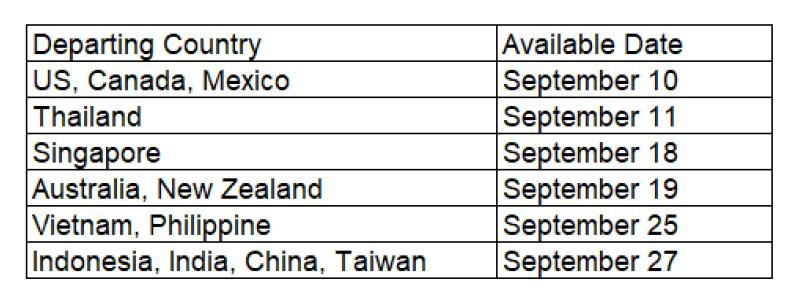
The complimentary domestic flight offer has already opened up in some countries, and the deal will become available to the remaining destinations as per the airline’s schedule throughout September.
While not all countries, including flights from the UK, have not been included in the offer, Japan Airlines said that plans are in place to expand the eligible countries.
Japan Airlines said they are offering this deal to create a seamless travel experience for those who want to explore more of Japan.
For example, a passenger arriving from Singapore could fly into Tokyo and then jet off on a domestic flight to Sapporo in northern Japan for no extra fees.
There are a number of domestic destinations the airline recommends, such as a trip to Hokkaido to embark on hikes in national parks or go skiing at the various alpine resorts.
Wakayama in Japan’s Kansai region is also highlighted as a place to visit due to the vast temple enclave of Koyasan, or Japan’s tallest waterfall at Nachi Falls.
For more travel news and advice, listen to Simon Calder’s podcast
Join our commenting forum
Join thought-provoking conversations, follow other Independent readers and see their replies
Subscribe to Independent Premium to bookmark this article
Want to bookmark your favourite articles and stories to read or reference later? Start your Independent Premium subscription today.
New to The Independent?
Or if you would prefer:
Hi {{indy.fullName}}
- My Independent Premium
- Account details
- Help centre

IMAGES
VIDEO
COMMENTS
An awesome trip full of the main highlights of both China and Japan requires at least 2-3 weeks: 8-11 days in China and 7-10 days in Japan. China is a big country with a rich culture and attractions that deserve more time to explore. Japan is a medium-sized country that you can visit the essence of at a more relaxed pace.
Discover world-famous landmarks such as the Great Wall of China and historical cities such as Xi'an and Kyoto, and witness the vibrant cultures of East Asia, as you experience the best of Japan and China on a 16-day leisurely tour (easily adapted to be a 2-week or 3-week tour). It covers iconic cities like Tokyo, Hakone, Kyoto, Nara, Beijing ...
Get ready for an unforgettable trip through Japan and China that takes in many of these two nations' highlights. The tour begins in Japan's capital Tokyo, where sights like the Tsukiji Fish Market, Senso-ji Temple, Meiji Jingu Shrine, and more await. Next, you'll visit Kyoto, home of Nijo Castle, Kinkaku-ji Temple, and Fushimi-Inari Shrine..
View Map. Set off on a 10-day tour to see Japan and China's main highlights, starting in the vibrant capital of Tokyo. Witness the splendor of Senso-ji and admire Mount Fuji from every angle before taking a bullet train to Kyoto. Visit the Samurai Ninja Museum, explore Nijo Castle, and feed the free-roaming deer in the nearby city of Nara.
Highlights of China and Japan Tour Summer with Expo 2025 Osaka . China (Beijing / Xian / Shanghai), Japan (Osaka / Nara / Kyoto / Koka / Hakone / Mt Fuji / Tokyo) 15 Days 14 Nights | from US $4898.00. This 15-day tour takes travelers on a cultural and historical route through the lands of China and Japan, plus the Expo 2025 Osaka.
14 Days. Temples wait serenely beneath tree blossom as walls rise and fall far beyond the horizon. Welcome to the best of Japan and China, a two-week tour of immersive history, iconic culture, and incredible nature. Tokyo, Hakone, Kyoto, Beijing, Xian, Guilin, Shanghai are destinations that are enshrined in legend and yours to explore.
Some of the best places to visit Japan during fall are Yamanashi, Kyoto, Hokkaido, Nara Park, Rikugien Gardens, Mount Nasu, Hitachi Seaside Natural Park, Mount Gozaisho and Nikko. China: China is a vast country, and the climate differs in each region. Spring and autumn are popular seasons among tourists visiting China.
Dec 27, 2022. Japan will tighten its border controls for travelers from China on Friday, as the latter nation is seeing a surge in COVID-19 infections, Prime Minister Fumio Kishida said Tuesday ...
Transportation between China and Japan is well-developed, with a variety of options available. For example, you can fly between the two countries, or take a train or a bus. The high-speed train is a particularly efficient and convenient way to travel between major cities in China and Japan. Additionally, there are ferries that connect some ...
Classic route through China's Golden Triangle cities and west-east Japan. Touch 5,000 years of Chinese history through Great Wall & Terracotta Army. Discover authentic local food in alleys of Beijing and markets of Tokyo. Upgraded Mt. Fuji tour: adjustable visit date; cruise and ropeway experience.
The most convenient of Japan's three "main" Chinatowns to Tokyo, Yokohama Chinatown is the first one I ever visited. It's a delight to explore and discover, whether you eat at a traditional Cantonese restaurant with items shared around a huge, round table, or venture out in the darkness to practice your nighttime photography skills at Kuan Ti Miao Taoist temple.
10 days, two weeks, or even one month of travel to China or Japan can really add to your travel budget. Accommodation is often cheaper in China compared to Japan ($35 vs. $63). Budget travelers usually stay in less expensive hostels and guest houses, while nicer hotels often appeal to families and upscale travelers.
A China & Japan Tour - Tokyo, Kyoto, Beijing, Xian, Guilin, Hong Kong. 16 Days / 14 Nights - Tour Code (JCA) - Daily departure. This incredible tour of Japan and China showcases each country's flagship cities, boasting a myriad of unforgettable experiences for all ages - everything from awe-inspiring landmarks to picturesque ...
Japanese Foreign Minister Yoshimasa Hayashi says he will visit China this weekend for talks with his counterpart Qin Gang, becoming Japan's first top diplomat to do so in more than three years amid growing friction between the two countries, including new Japanese export controls and the detention of a Japanese national in Beijing. During the April 1-2 visit, Hayashi is expected to demand ...
Japan FM to Visit China as Tokyo Imposes New Export Controls By Mari Yamaguchi. Foreign Minister Hayashi Yoshimasa will head to China on April 1, a day after Tokyo unveiled new export controls on ...
Autumn: Best Time to Visit Japan for Cool and Sunny Days. Best Time to Visit Japan in Autumn: September - November. Autumn gradually cools down, with temperatures in September ranging from about 20°C to 25°C (68°F to 77°F), decreasing to highs of 14°C to 18°C (57°F to 64°F) by November.. This coolness, coupled with sunshine, is perfect to venture outdoors and immerse yourself in the ...
-Register relevant information and get QR codes on Visit Japan Web for smooth entry into Japan. QR codes are generated after the registration. *Immigration and Customs procedures on Visit Japan Web are available at 7 major airports (Tokyo/Narita, Tokyo/Haneda, Kansai, Chubu, Fukuoka, New Chitose, Naha). About Visit Japan Web
Visa information for Chinese nationals. September 28, 2022. Japanese. Tweet. 1. Visas for "short-term business affairs" or "visit to relatives/ acquaintances". Please refer to the website of the Japanese Embassy or Consulates-General that covers the area of your residence for details.
The visit to Japan came two days after Prabowo, who will take office in October, met Chinese leader Xi Jinping in Beijing, during which he hailed the two nations' fruitful relationship and ...
GO ON A REAL FOOD ADVENTURE IN JAPAN. Chinese wonton soup. China is massive - and so nearly every region has its own cooking style. Generally, Chinese food tends to be heavier than Japanese with more spices, chilli and oil. It's also meatier with lots of beef, pork and duck, though seafood and tofu are also popular.
Item 1 of 2 Passengers on a plane from China's capital Beijing arrive at Narita international airport in Narita, east of Tokyo, Japan January 8, 2023.
The tourism ministers of Japan, China and South Korea say they aim to increase the number of travelers between their countries to 40 million by 2030. At the end of their two-day meeting in the Japanese port city of Kobe this week, Tetsuo Saito, Japan's tourism minister, Zhang Zheng, China's…
Demand to visit China is on the rise, according to its National Immigration Administration, which announced a 130% year-on-year increase in foreign visitors from January to July. Summer trips are ...
2. 144-Hour Visa-Free Transit Policy. If you do not apply for a Chinese visa, you may still have the opportunity to visit these areas of China visa free: the Shanghai area (including Suzhou, Hangzhou, etc.), the Beijing area (with Tianjin and Hebei), the Guangzhou area (Shenzhen, Zhuhai, etc.), and more.
China is the world's most populous country. It's home to an astonishing total of over 1.4 billion people. Japan, meanwhile, is home to about 125 million people. China is about 25 times larger than Japan in terms of physical size. This means that there's a lot more ground to cover and places to explore in China.
Elsewhere in the region, US passport holders can visit Japan, South Korea, Thailand and Singapore on vacation visa-free for 30-90 days. ... The guidance reads: "Reconsider travel to Mainland ...
TOKYO (AP) — A Chinese aircraft carrier entered Japan's contiguous waters for the first time on Wednesday, leading Tokyo to convey its "serious concerns" to Beijing over China's ...
A Chinese aircraft carrier entered Japan's contiguous waters for the first time on Wednesday, leading Tokyo to convey its "serious concerns" to Beijing over China's increasingly assertive ...
Experience the Core of Asian Cultures. This trip takes you to the core of Asian cultures in Tokyo and Kyoto in Japan, Beijing and Xi'an in China, plus a flamboyant outlook at Singapore before you kick back on the beach of Bali. Encounter with beautiful Geisha ladies and cute pandas, sample authentic sushi and hotpot, no need to think twice ...
Visit places such as Japan's tallest waterfall at Nachi Falls in Wakayama with Japan Airline's new domestic ... Mexico and China if they stay in their first destination in Japan for more than ...